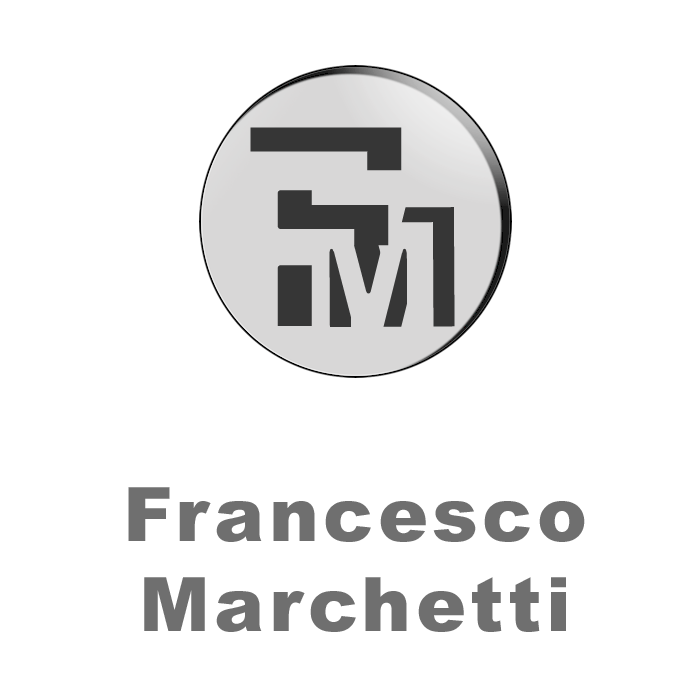I have documented the opening of the offices in the London financial district after a long period in lockdown. From September 2021, commuters started going back to the city offices gradually, few days per week.
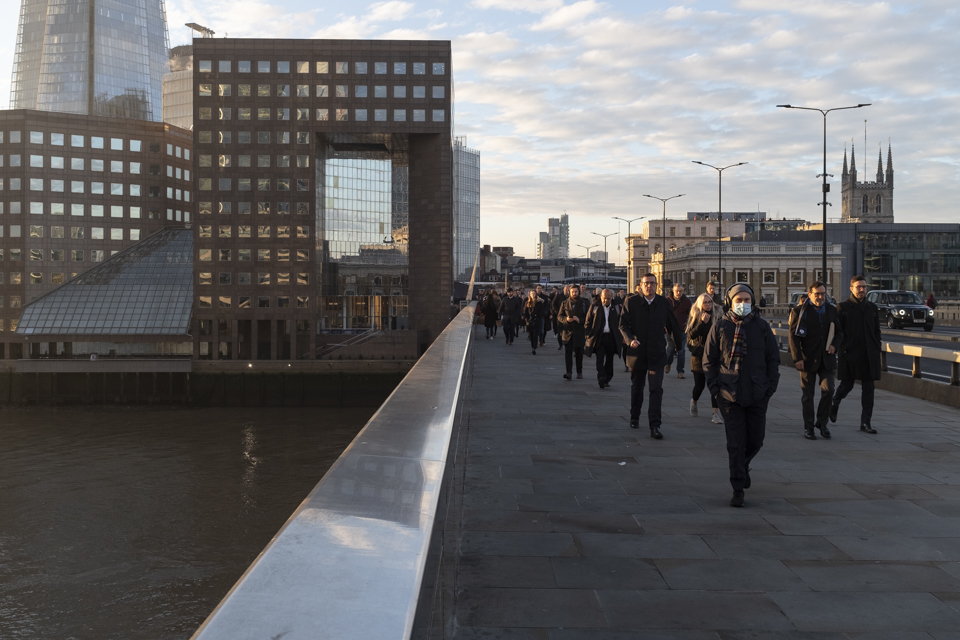
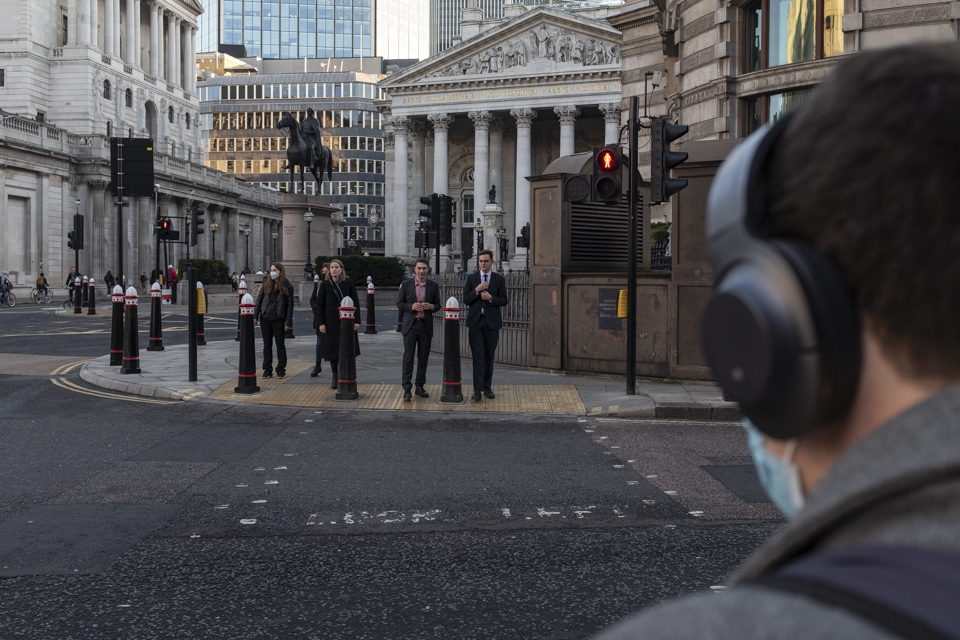
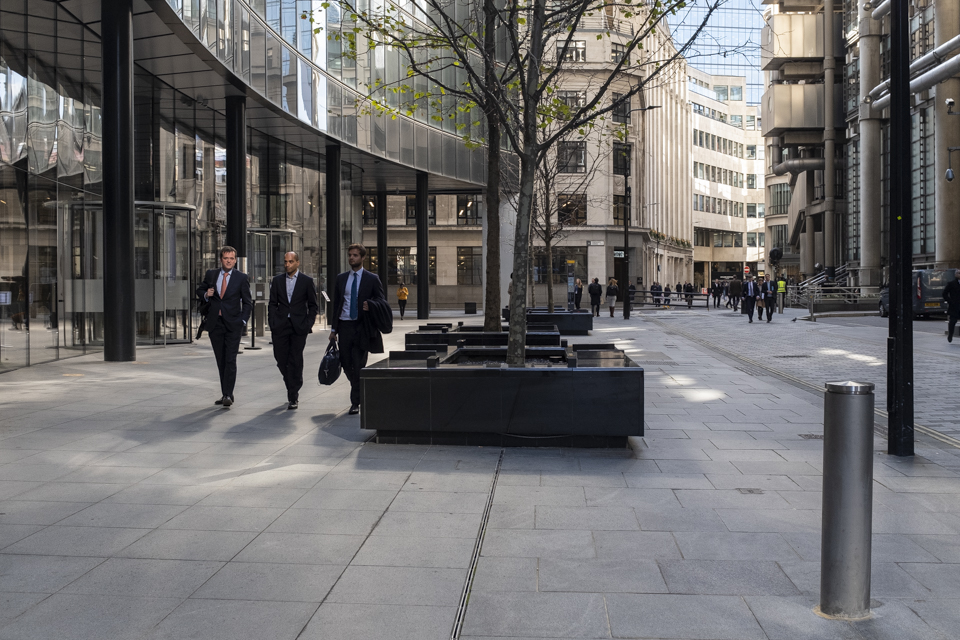
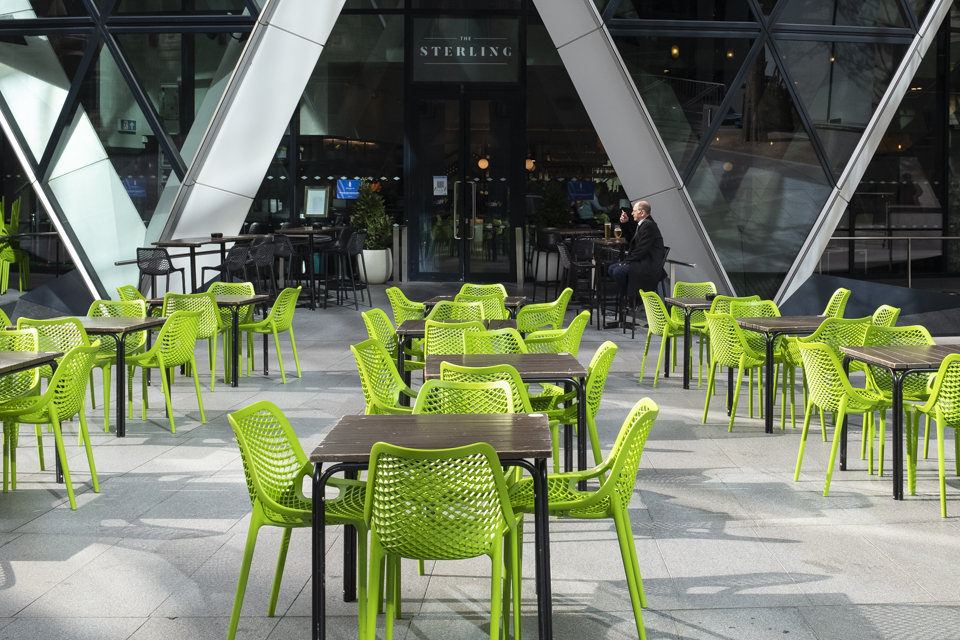
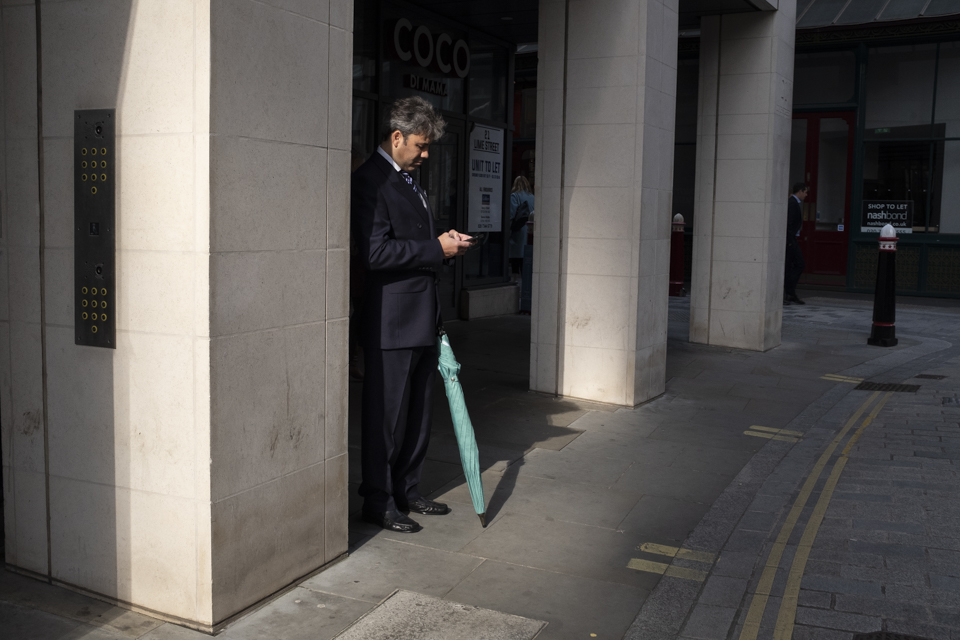
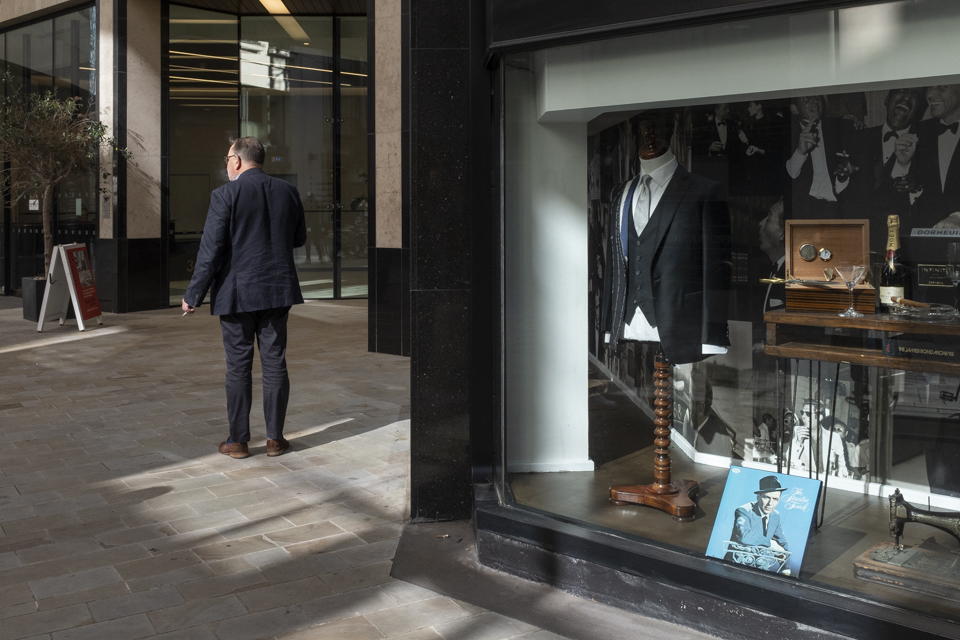
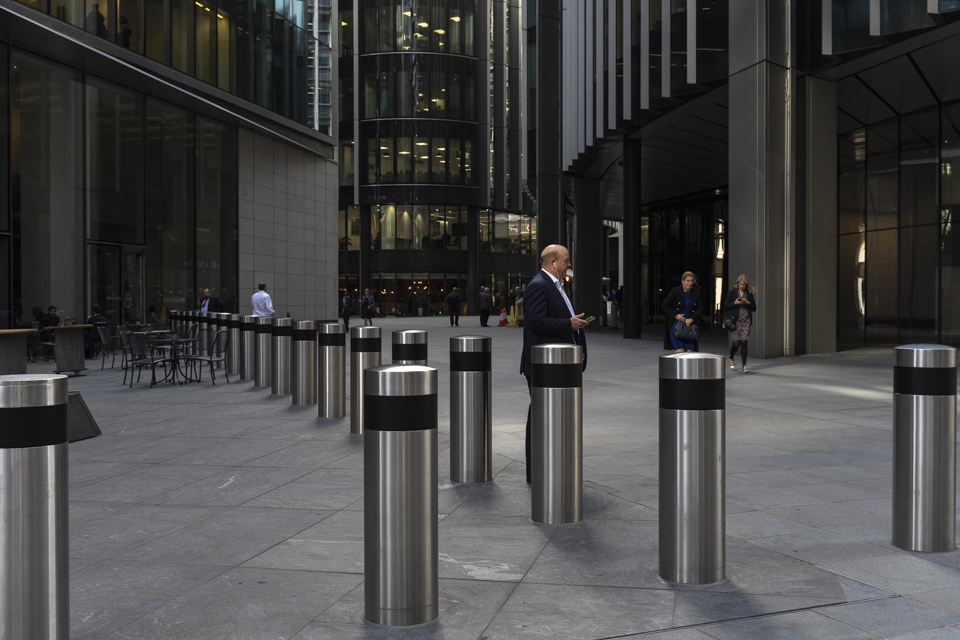
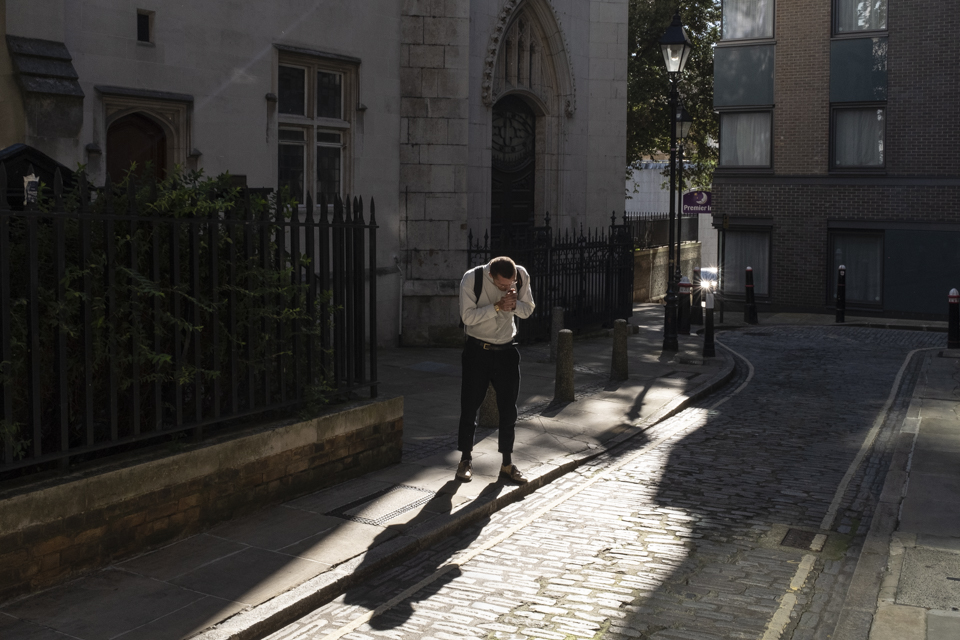
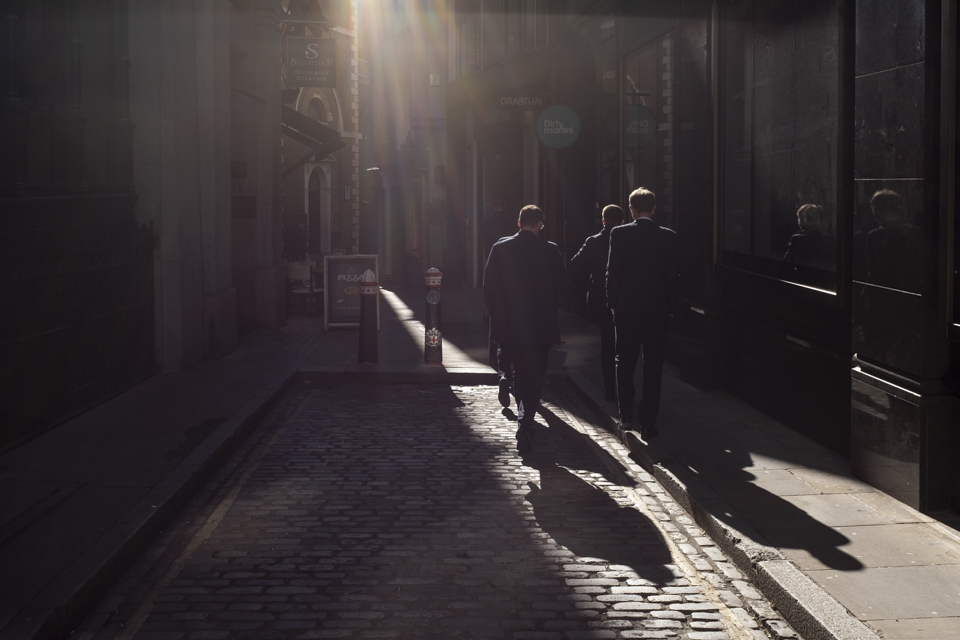
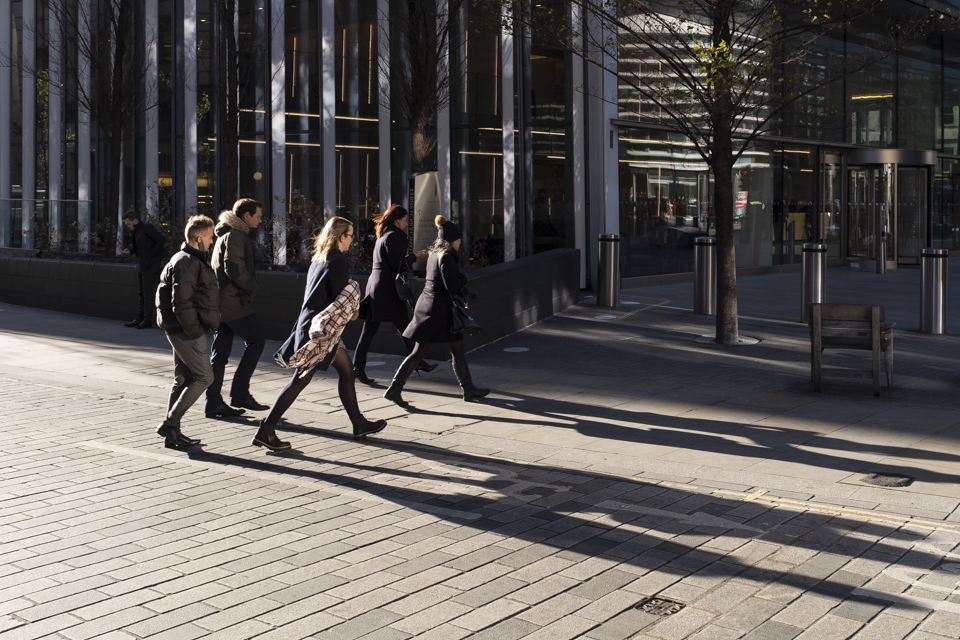
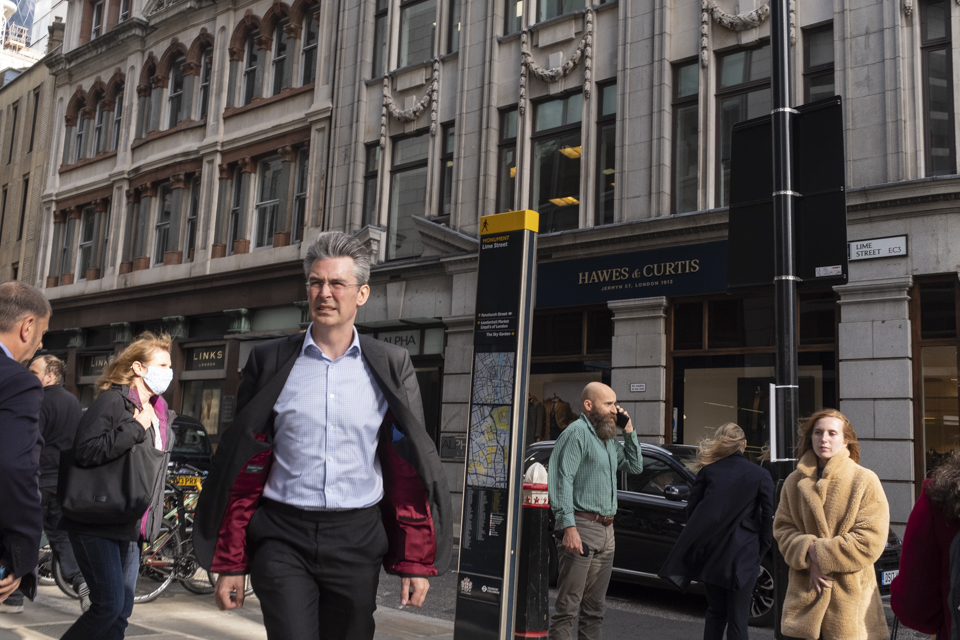
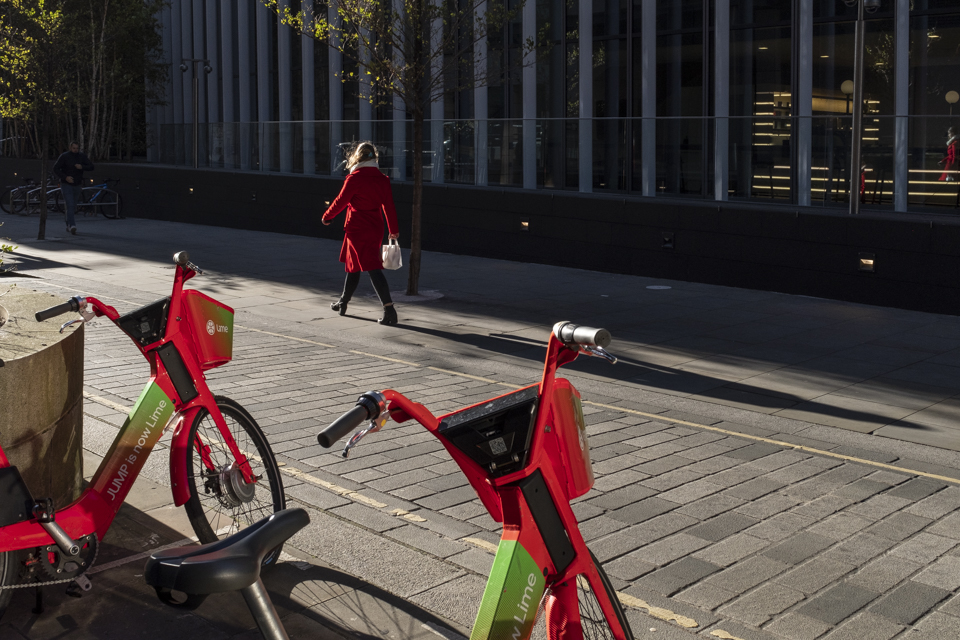
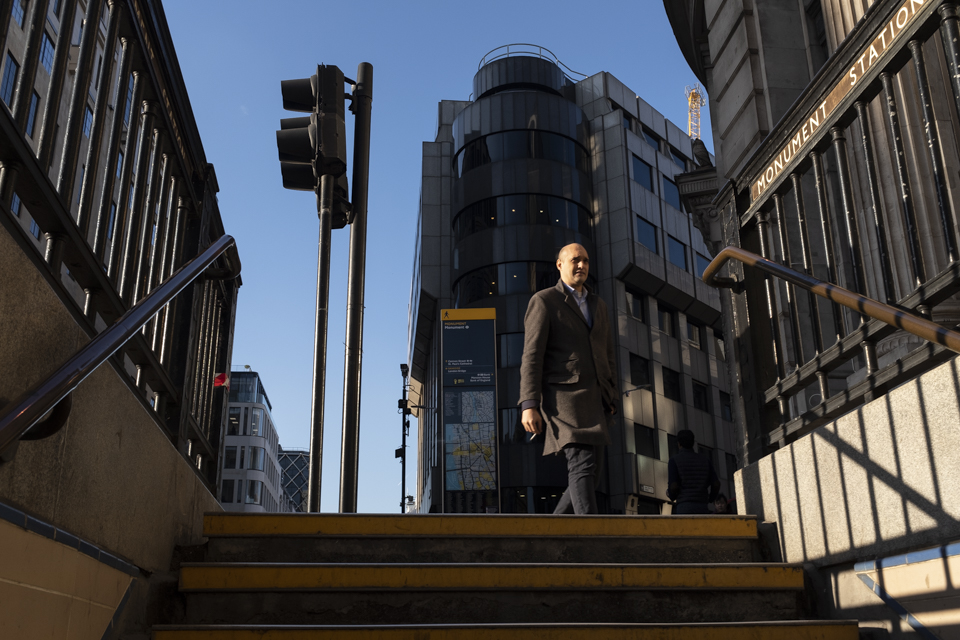
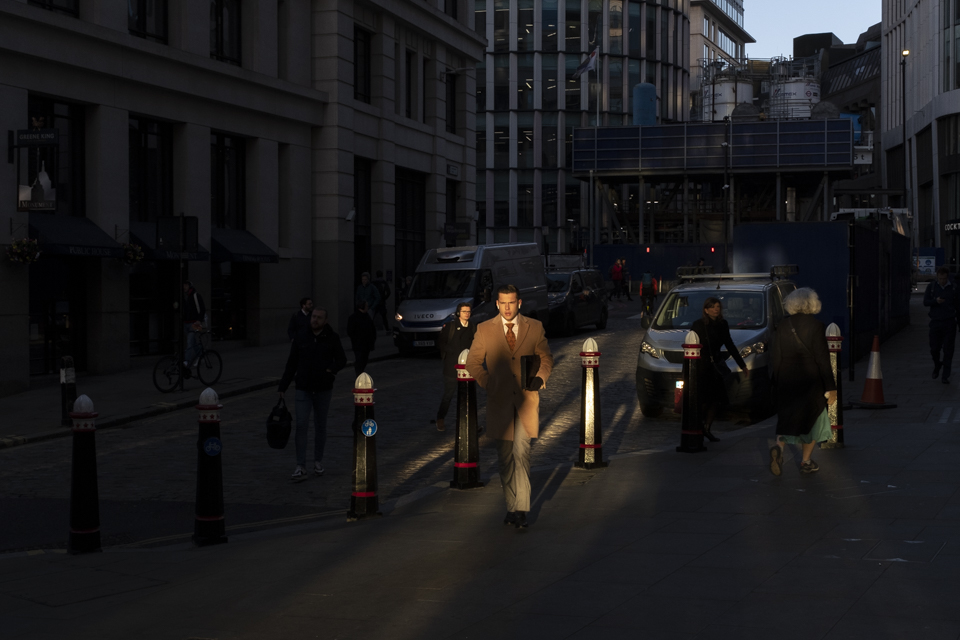
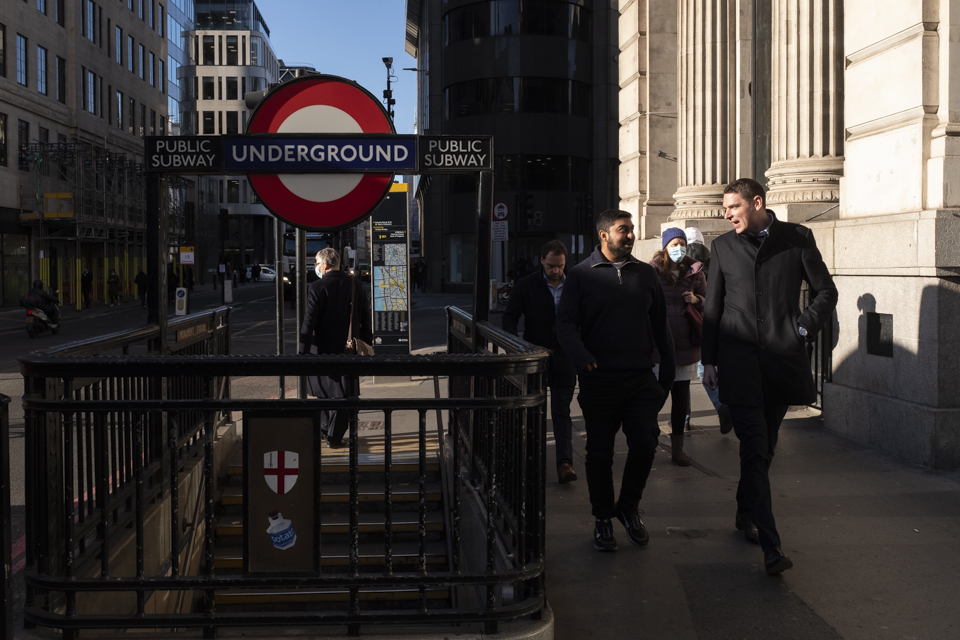
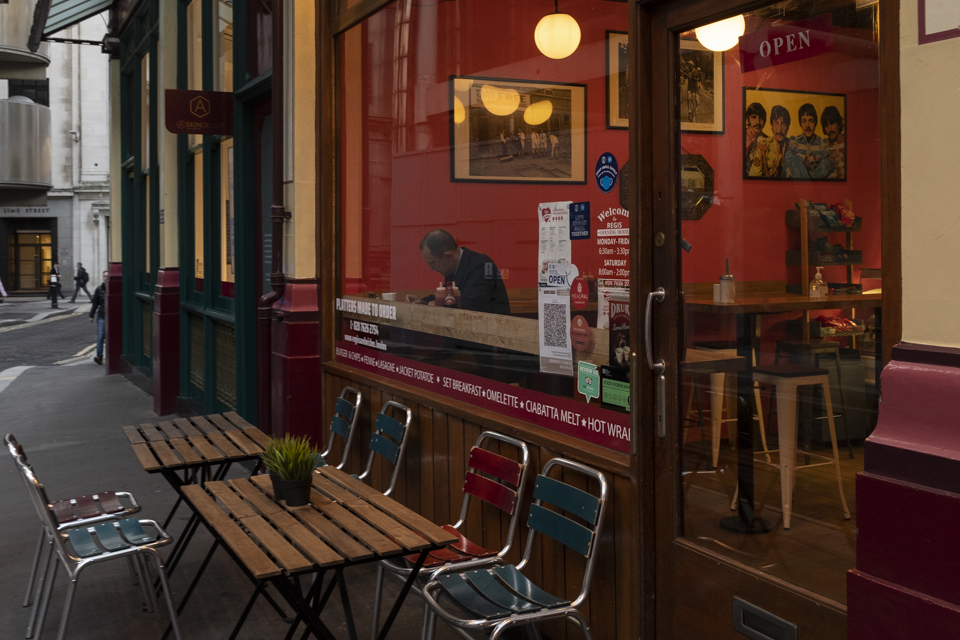
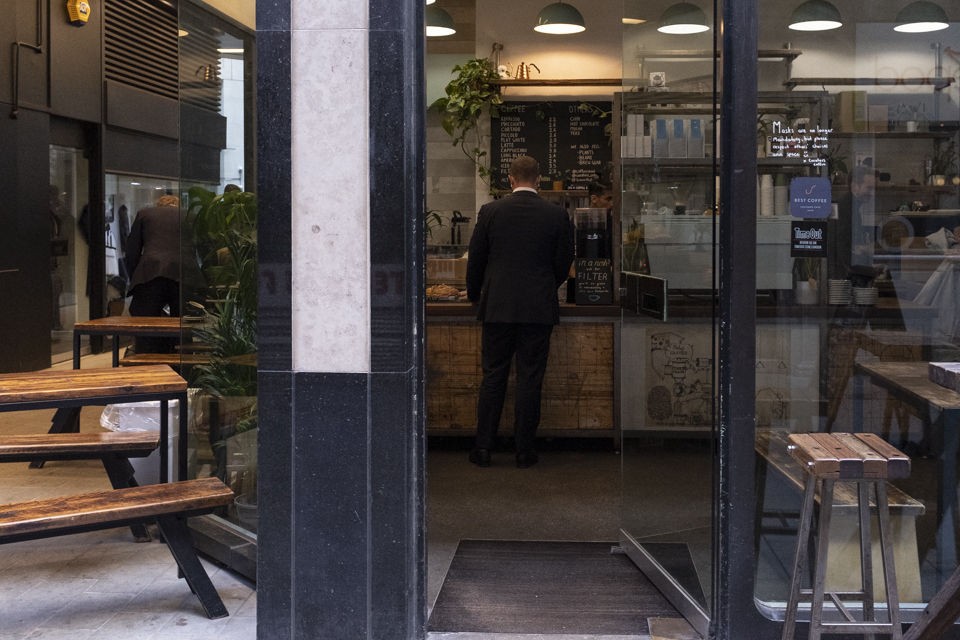
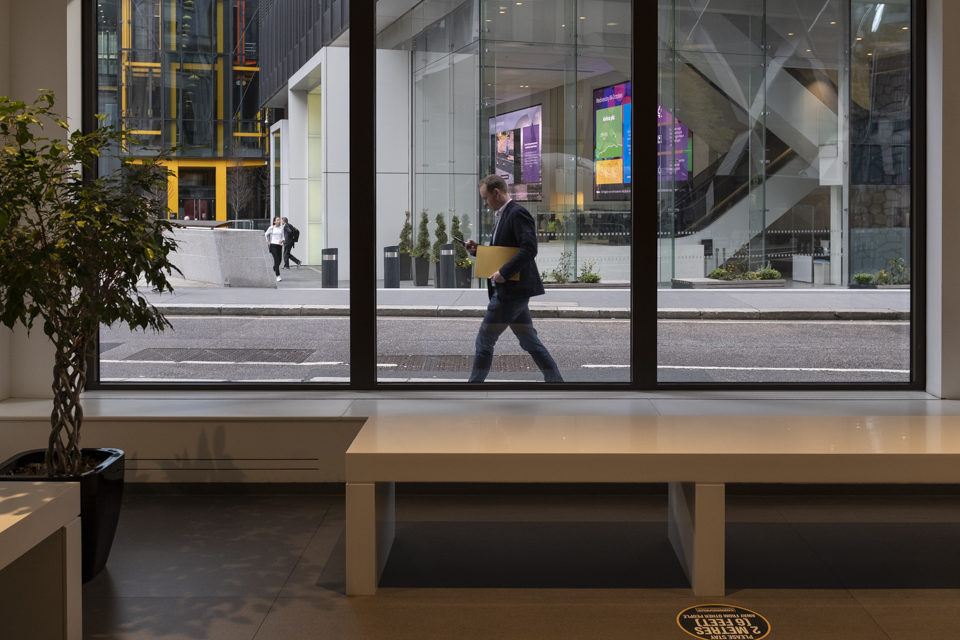
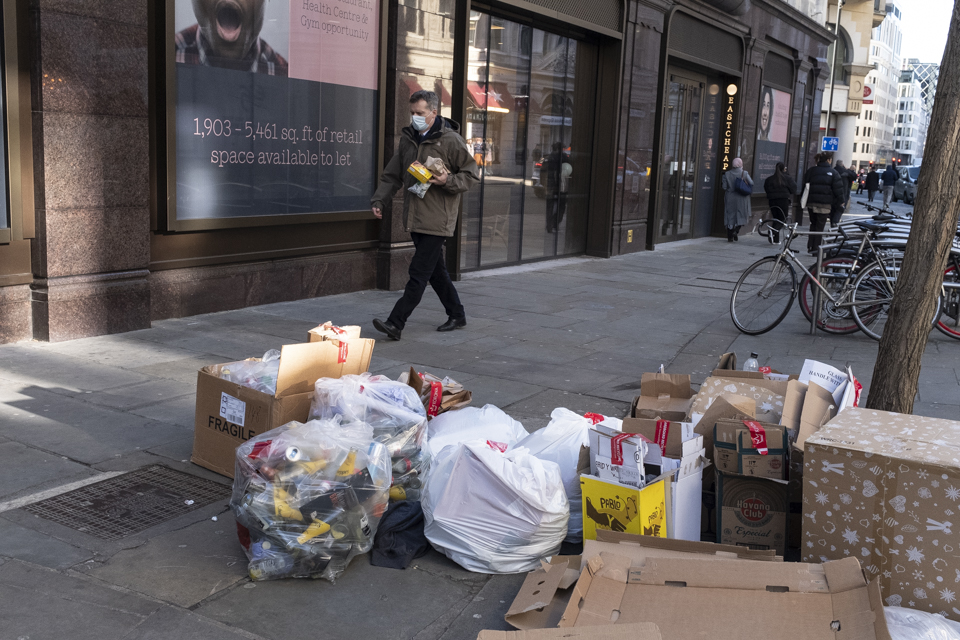
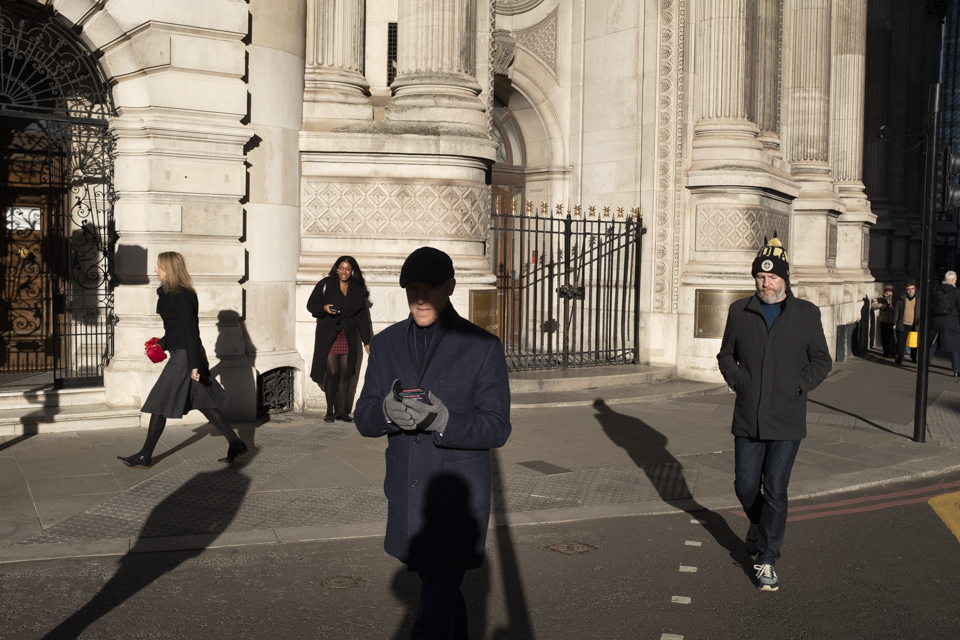
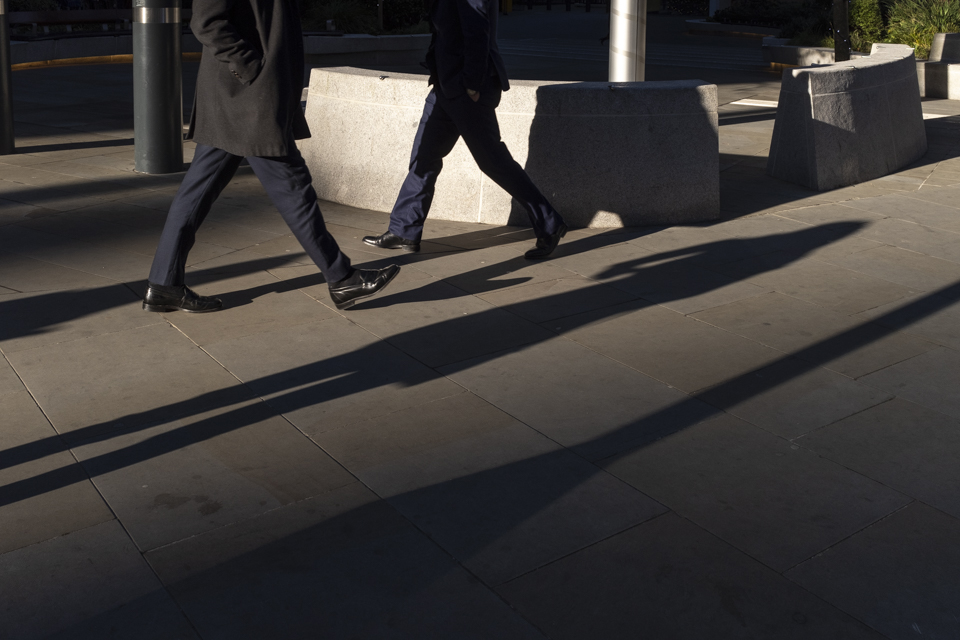
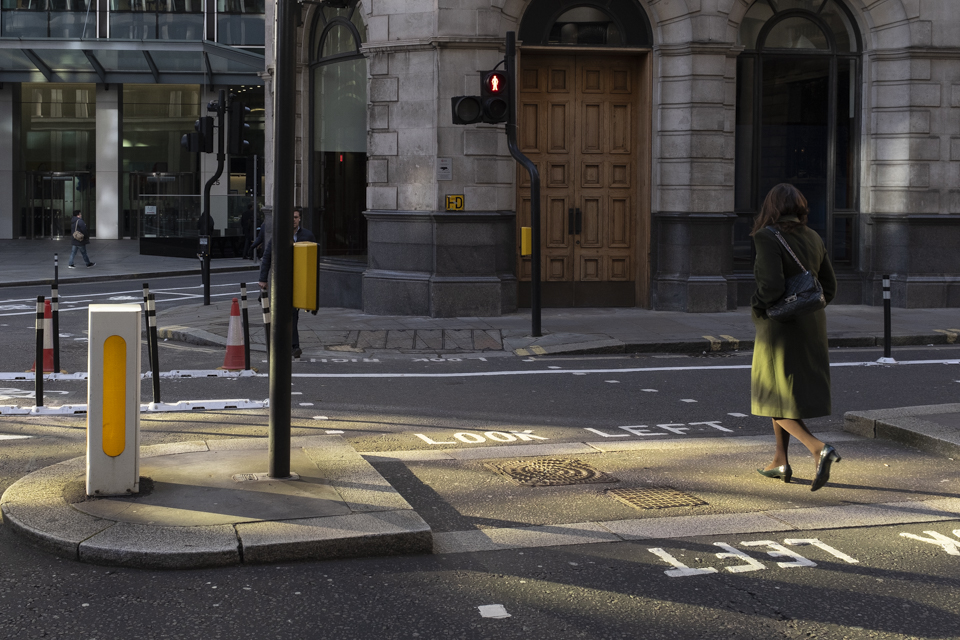
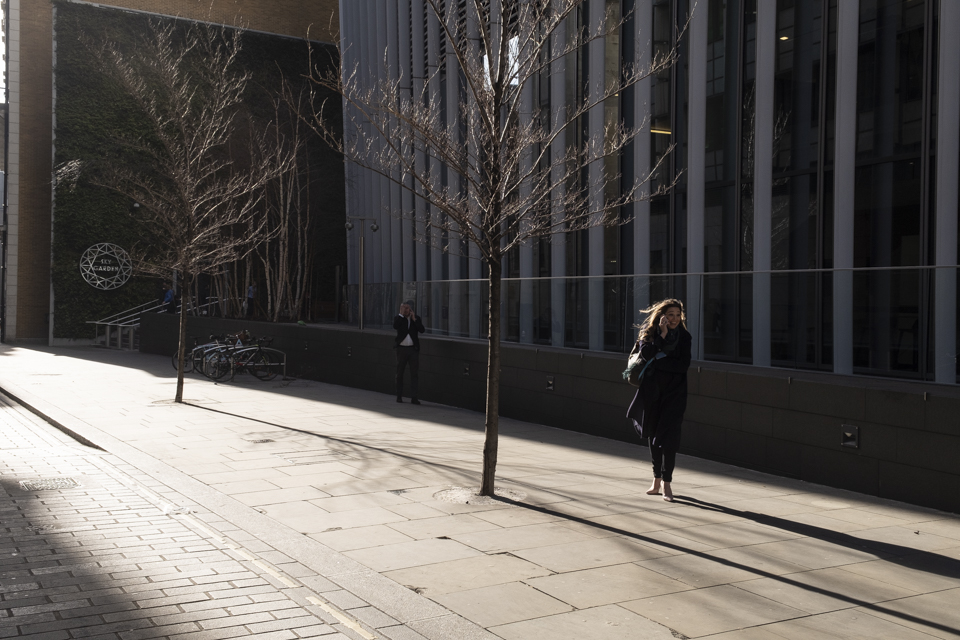

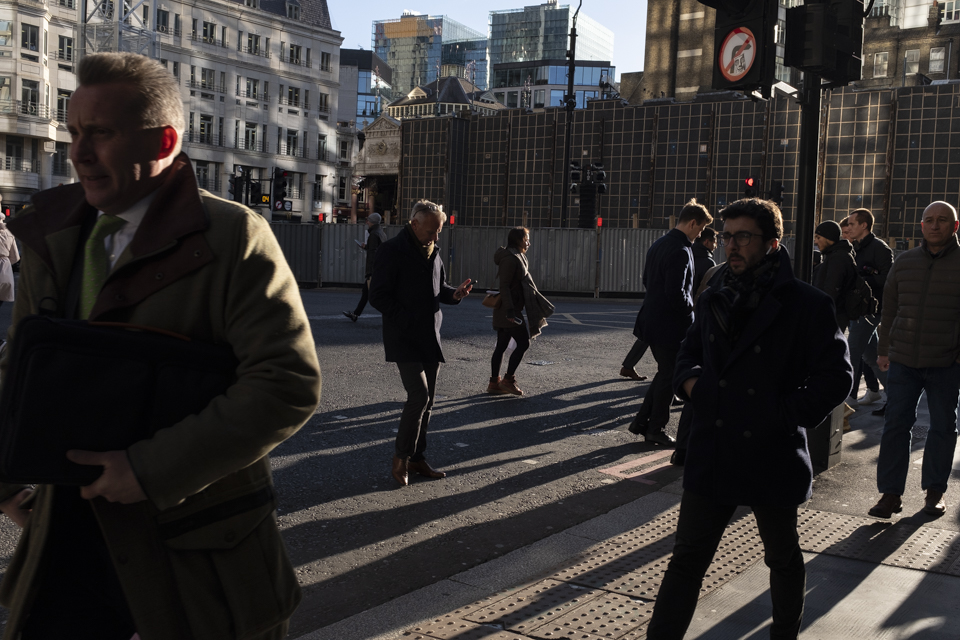
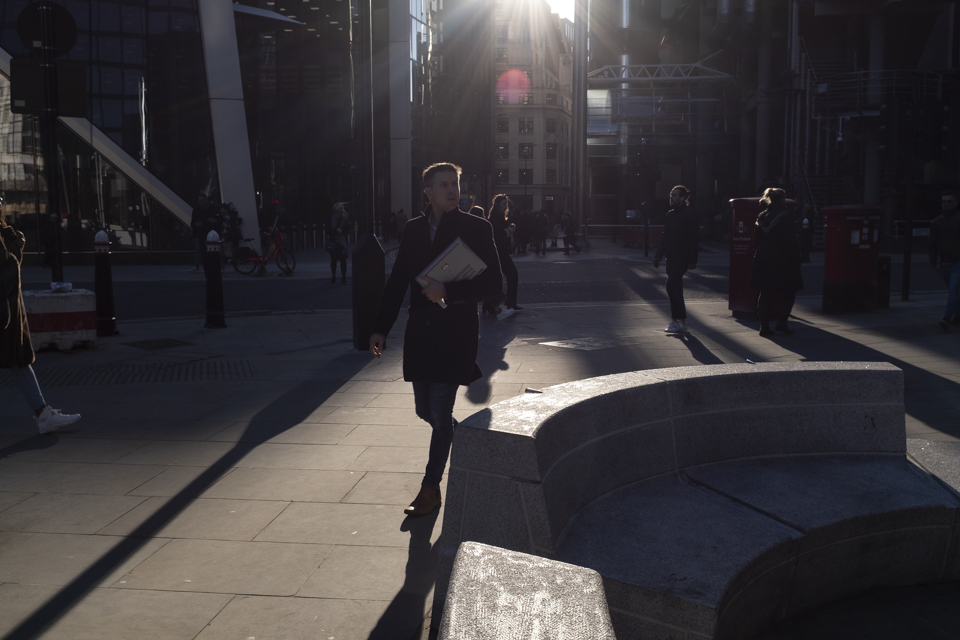
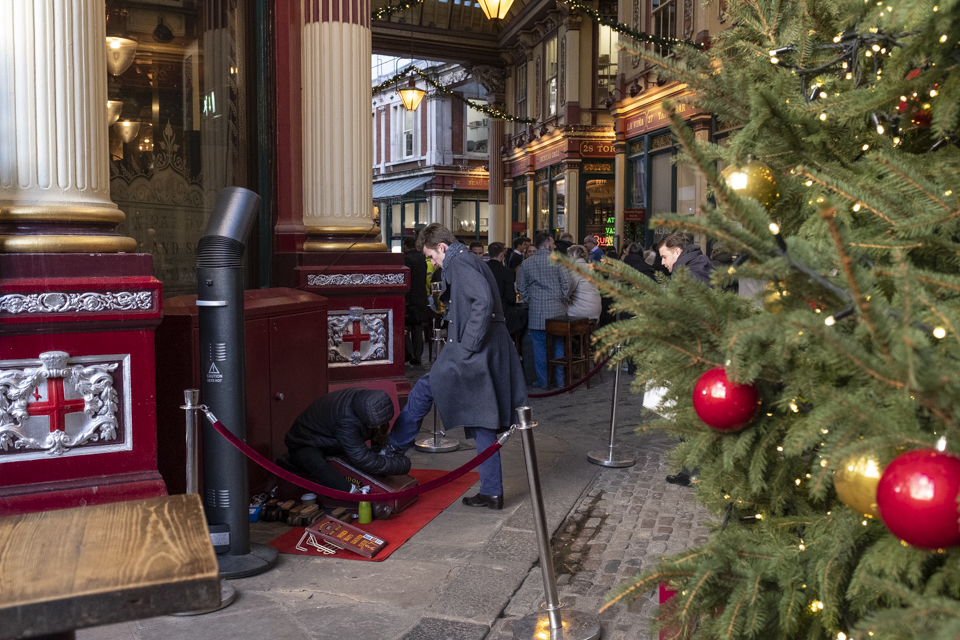
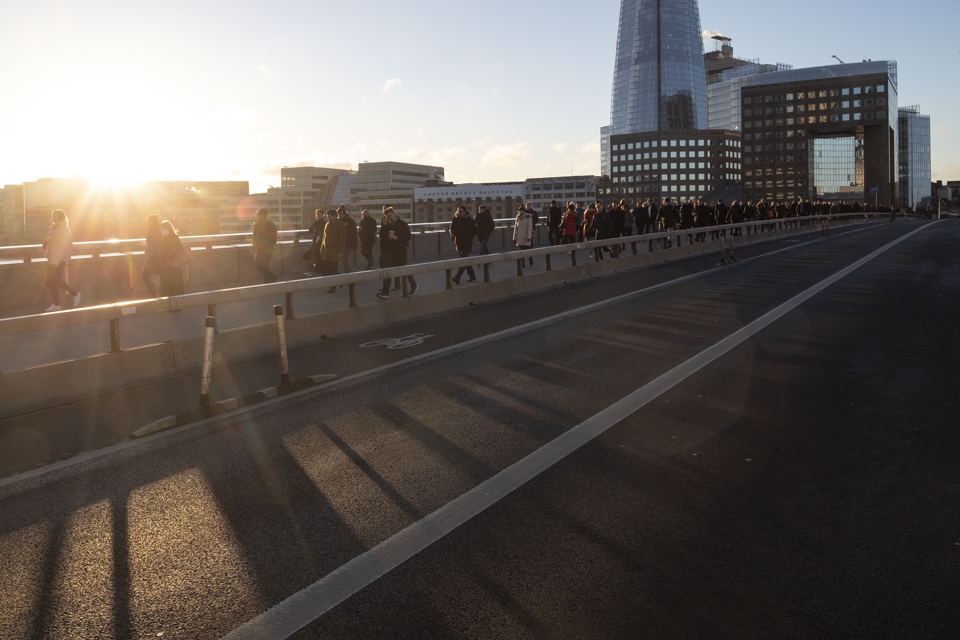
London, September – December 2021
I have documented the opening of the offices in the London financial district after a long period in lockdown. From September 2021, commuters started going back to the city offices gradually, few days per week.




























London, September – December 2021
Last week in Ethiopia we had the opportunity to visit the Addis Merkato, considered to be the largest open market in Africa.
Initially overwhelmed by the hectic scene, chaos, noise, myriads of business trading all sort of goods, we have adventured into the side streets which lead to various sections of the market.
Despite the large size, it is always possible to exit the market from different sides and join one of the main roads surrounding the area. From there it is easy to walk back to the starting point or look for transport.
Our guide, Joseph, a tourism student, is very knowledgeable about Addis and the Merkato, and helps us communicating with local. Gradually, the market starts to make sense.
We walked throughout stalls selling exotic spices and strong coffee beans. Primarily female and kids are working there and call us “faranji” as we pass by. To them, every foreigner is from China.
We learn about the Enset, “false banana” paste, a multipurpose crop feeding more people per square miles than any other cereal.
Perhaps the most interesting section is the “recycling” area where things get fixed and eventually traded back in the market. The sound from hundreds of workers chiselling hard material, joining metals part, fixing pots, is like a restless jazz orchestra. In the Merkato, everything gets recycled.
People welcome us with curiosity. Some smile and do not mind our presence; others let us understand, in a polite way, that photographs are unwanted. Kids are excited at meeting foreigners and like the engagement. Some wants to take photos with us.
At the end of our visit, just before sunset, leaving the market means wanting to go back soon to understand more.
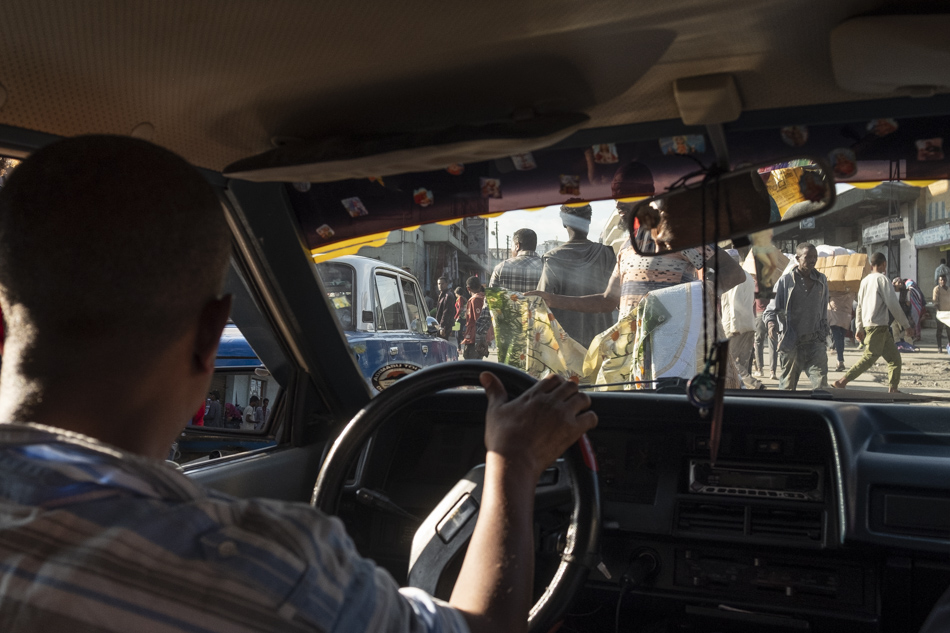
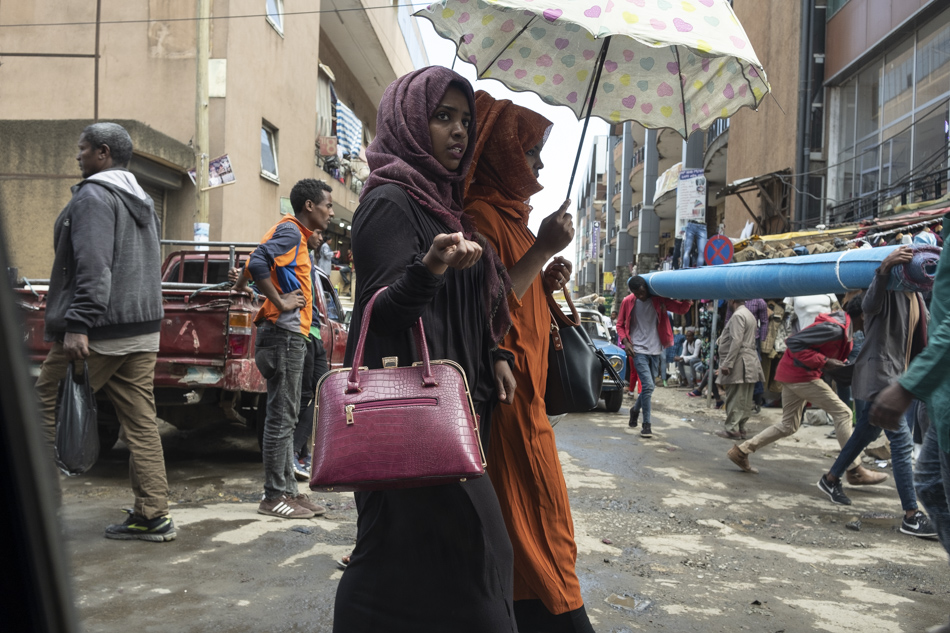
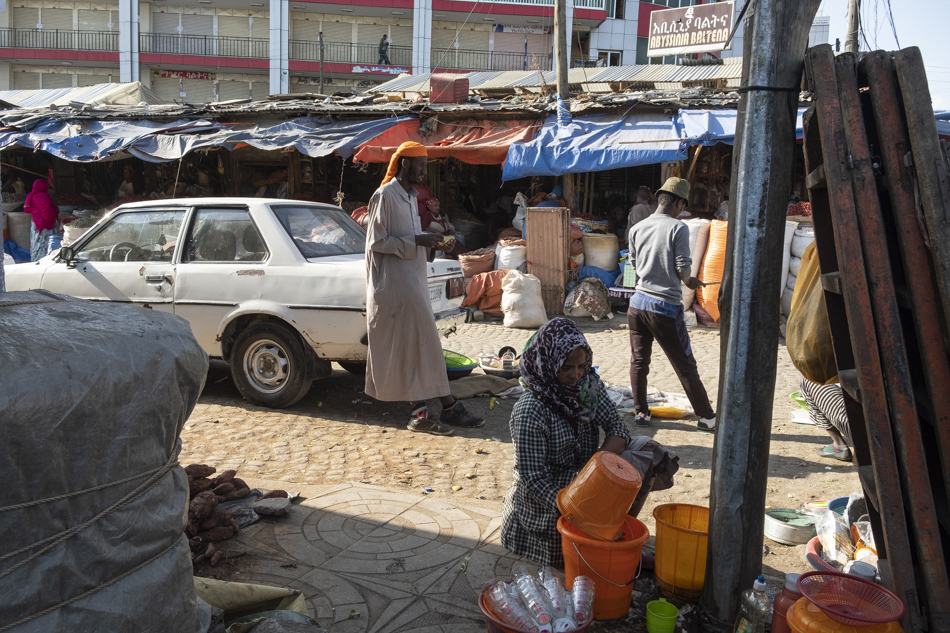
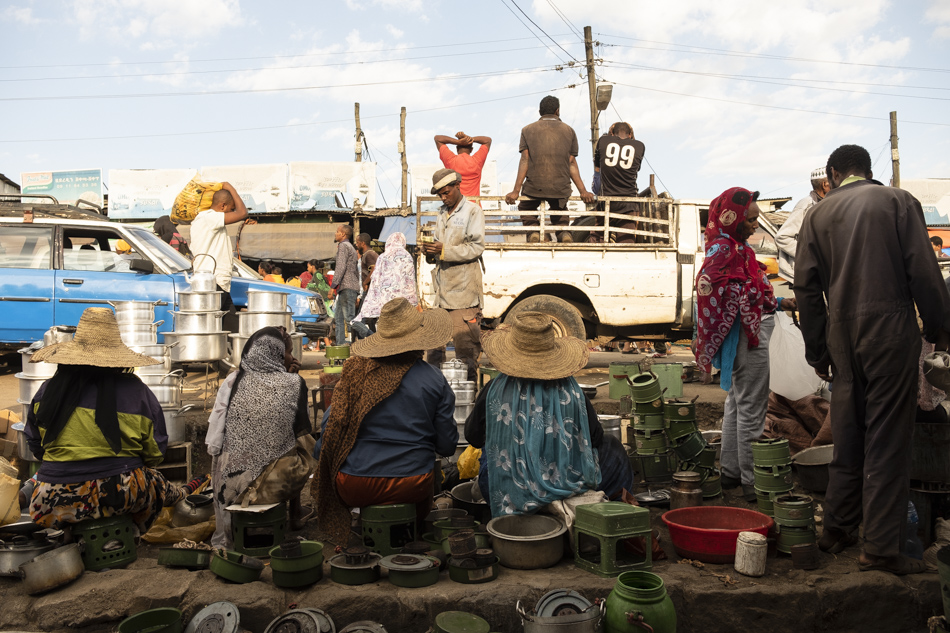
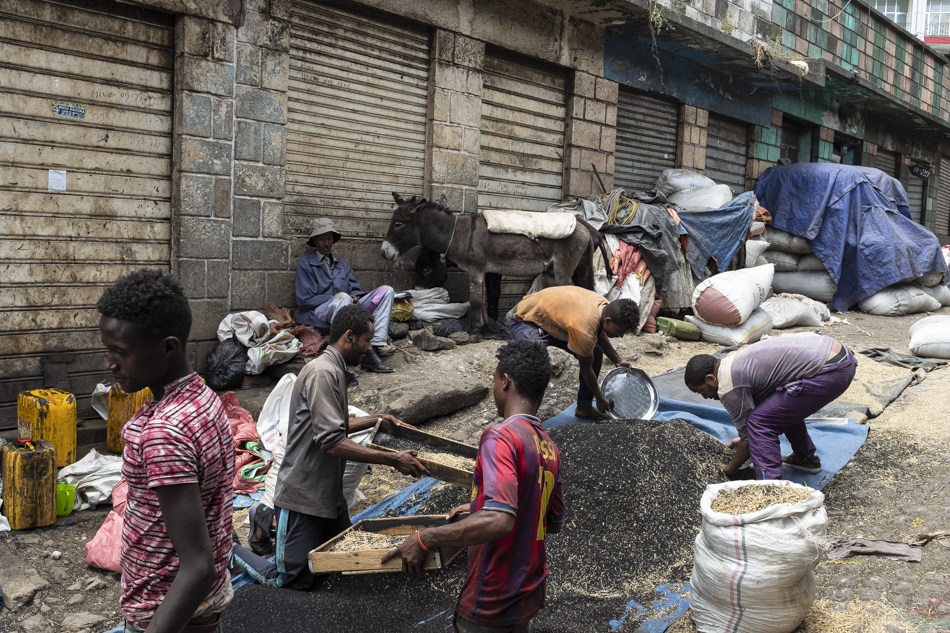
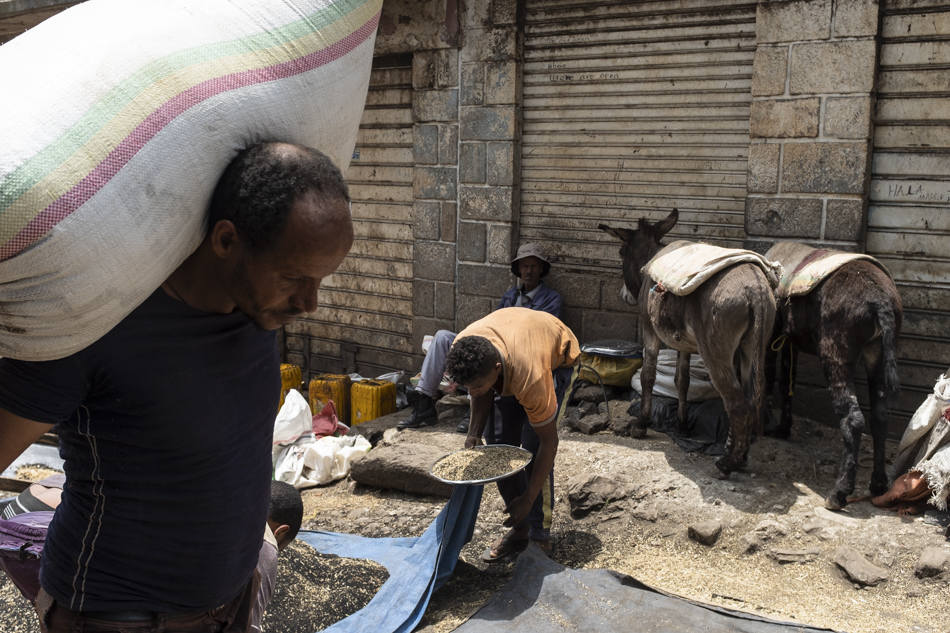
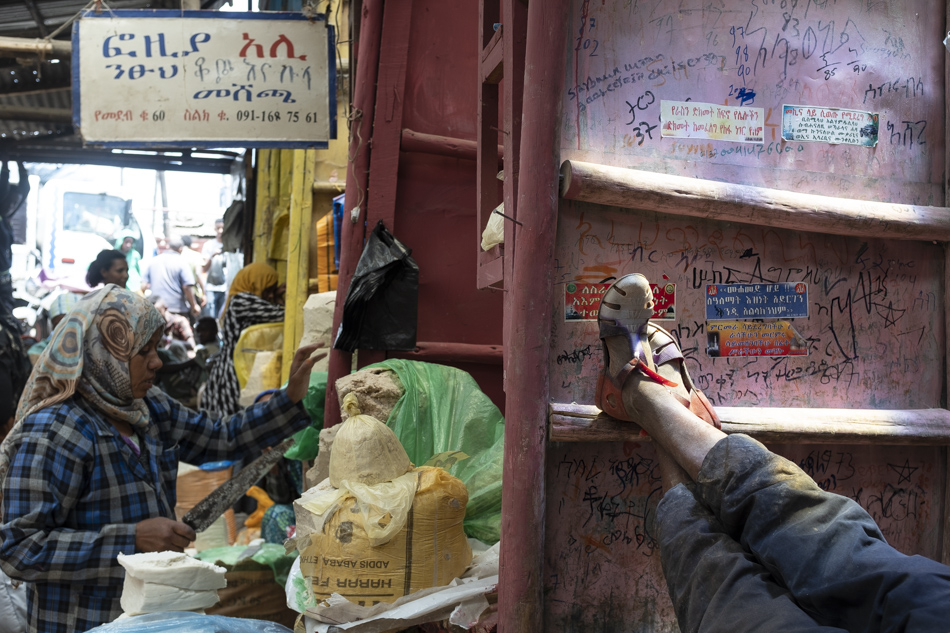
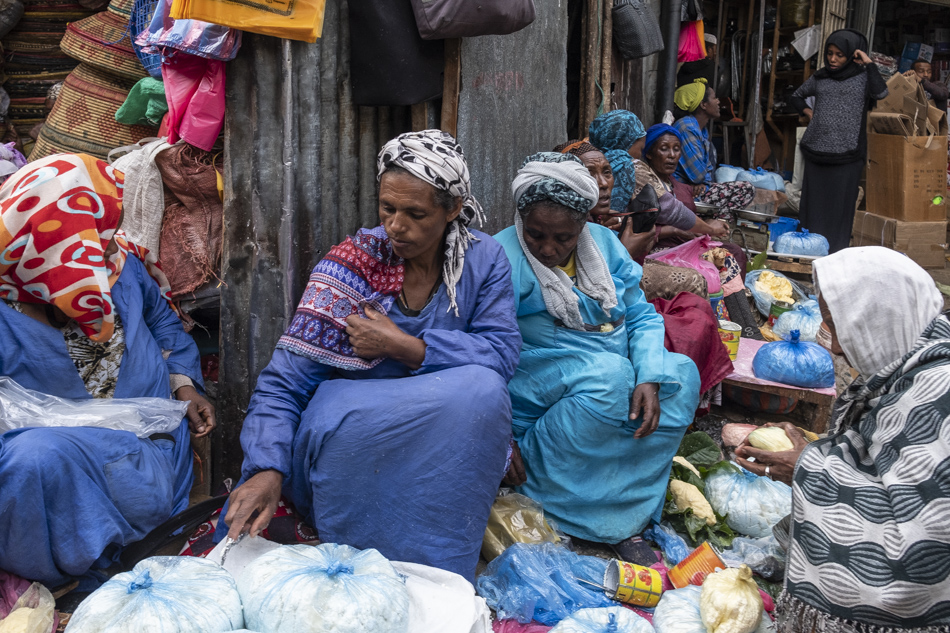
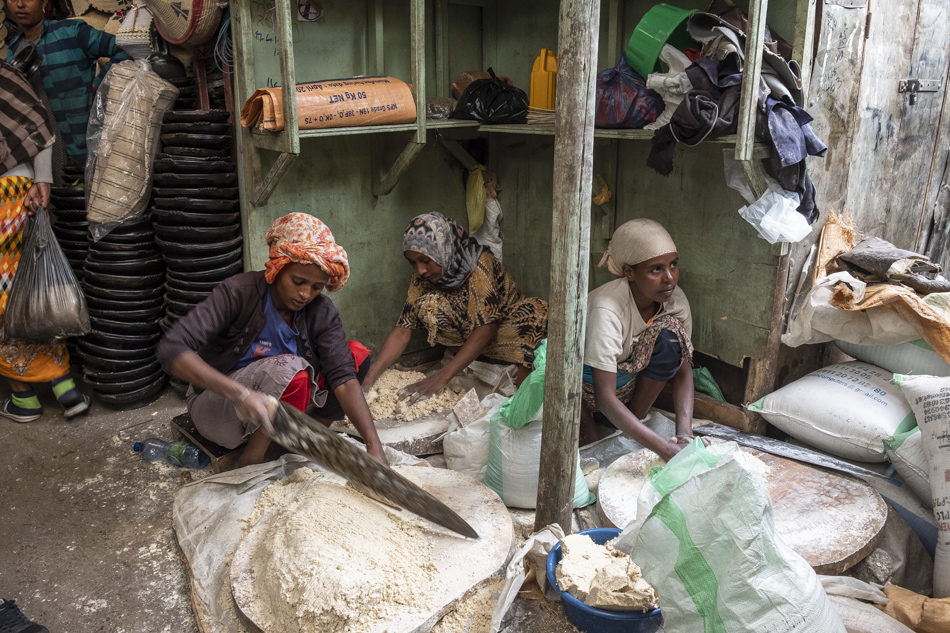
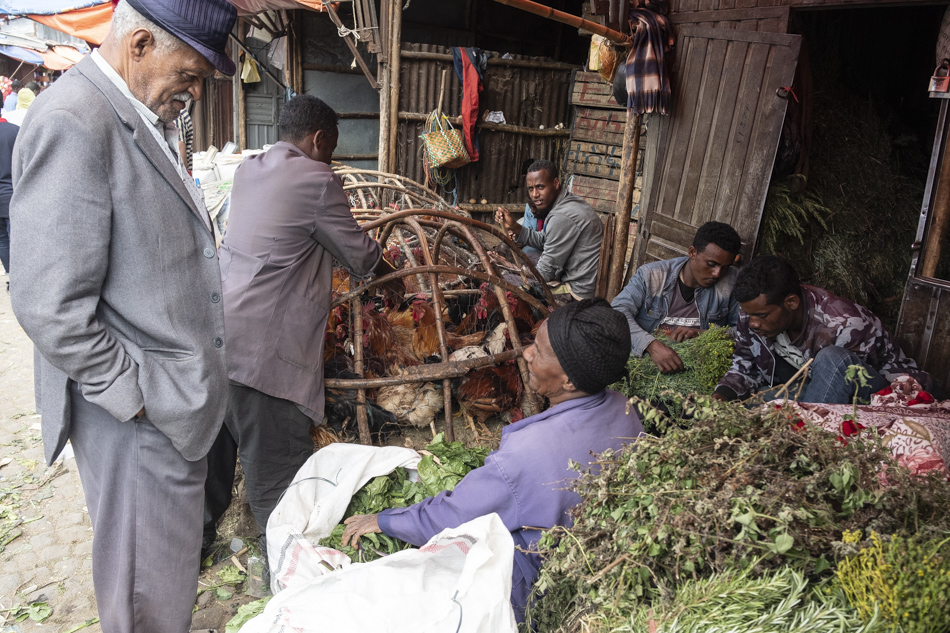
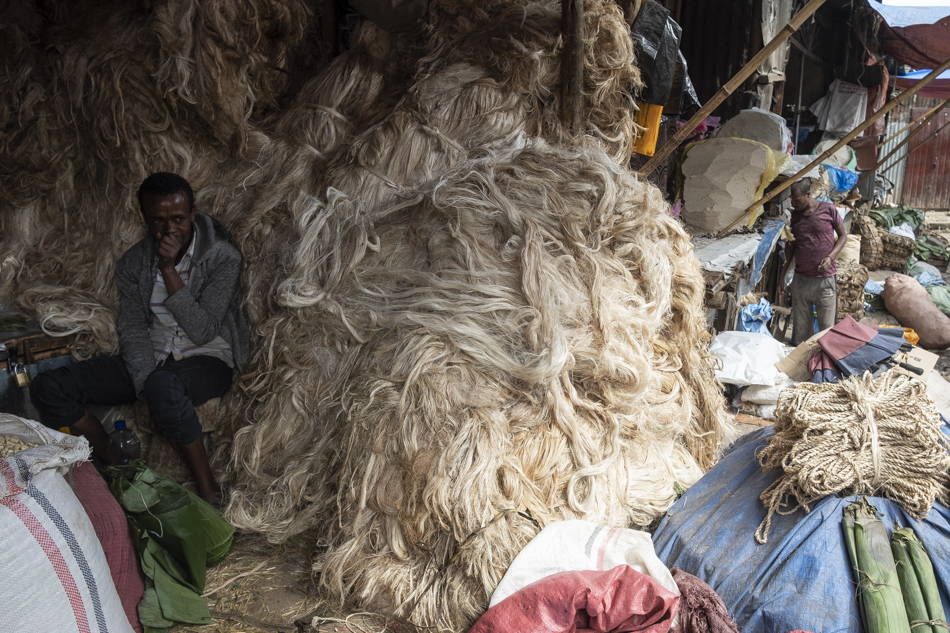
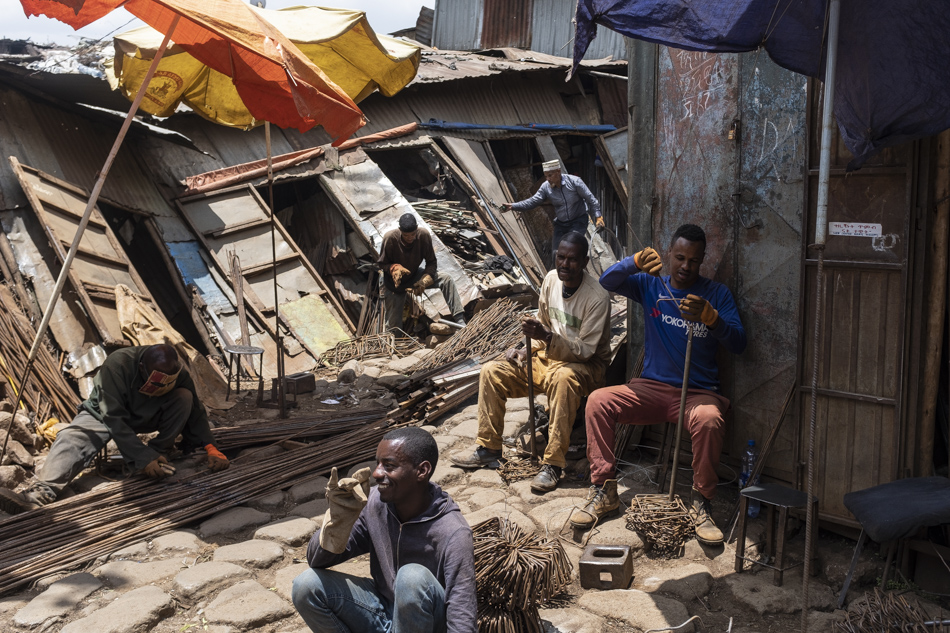
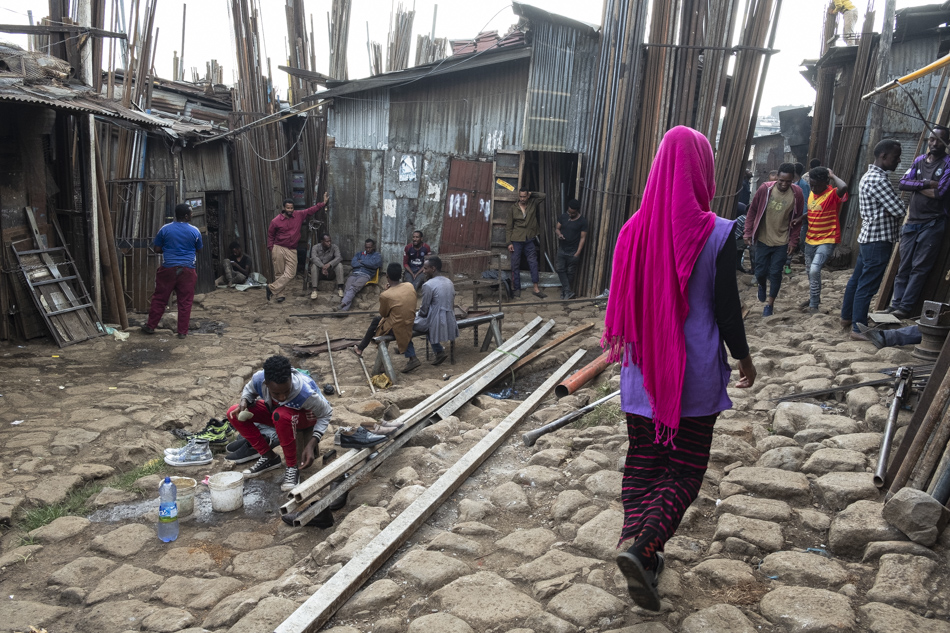
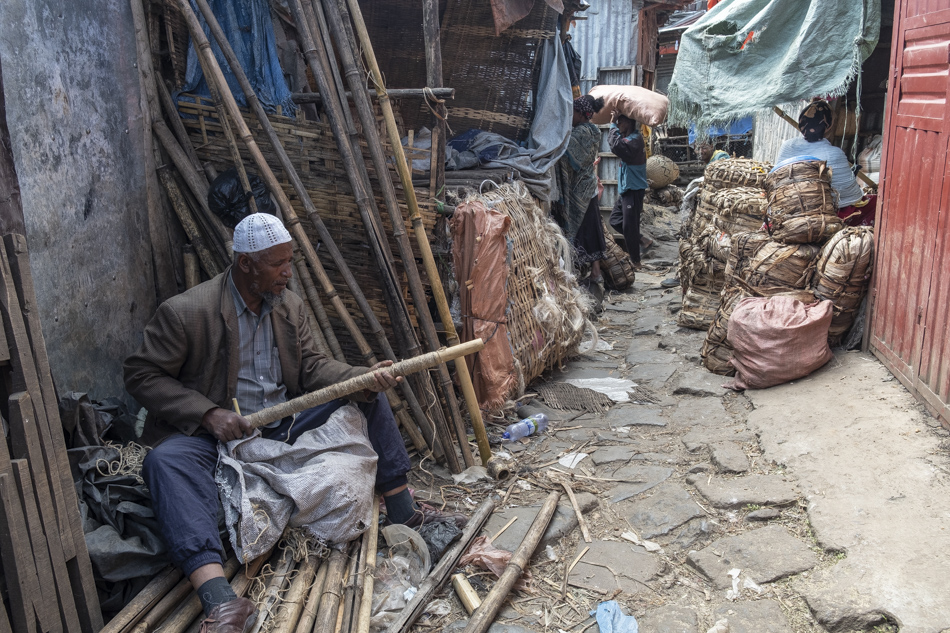
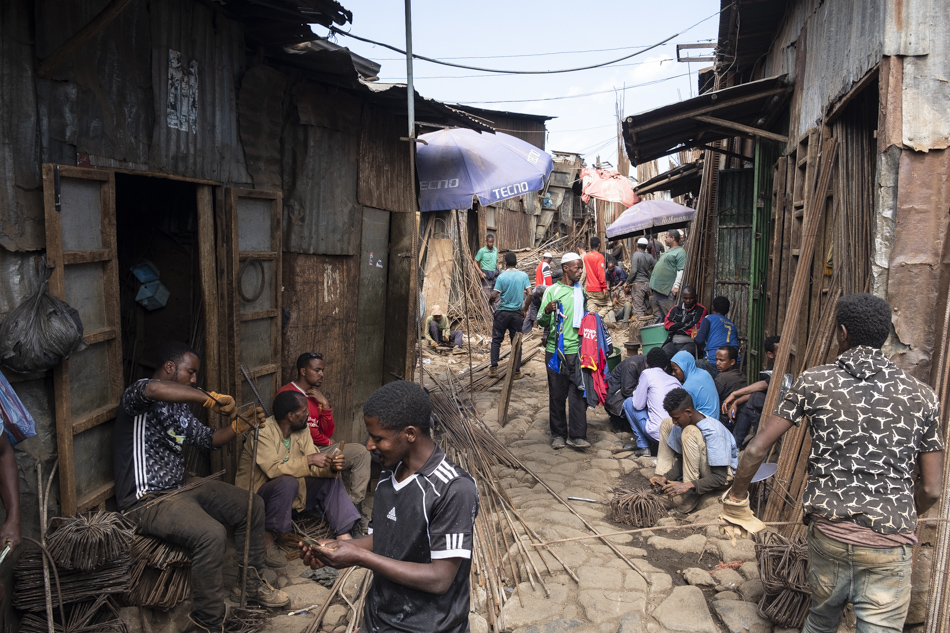
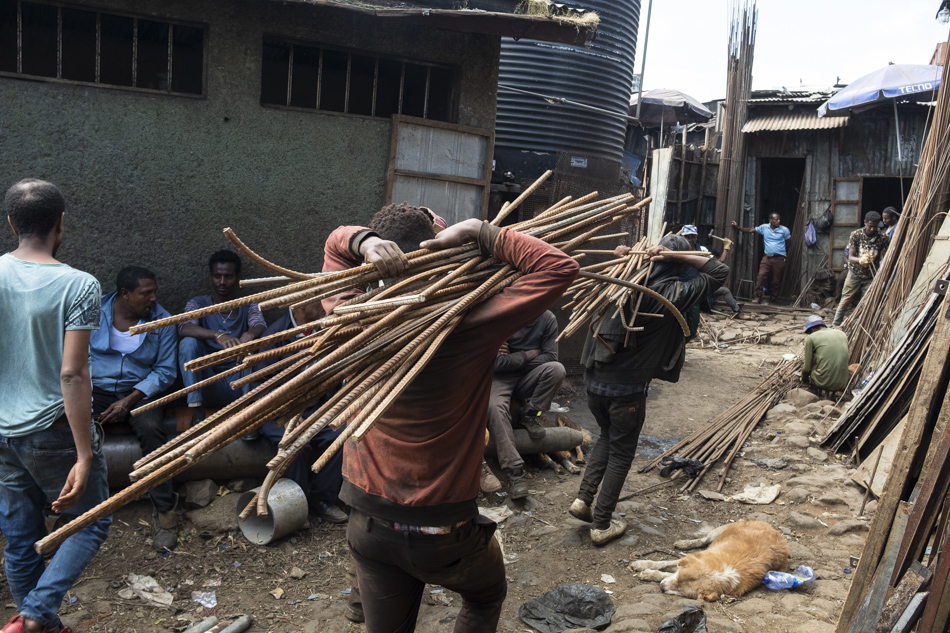
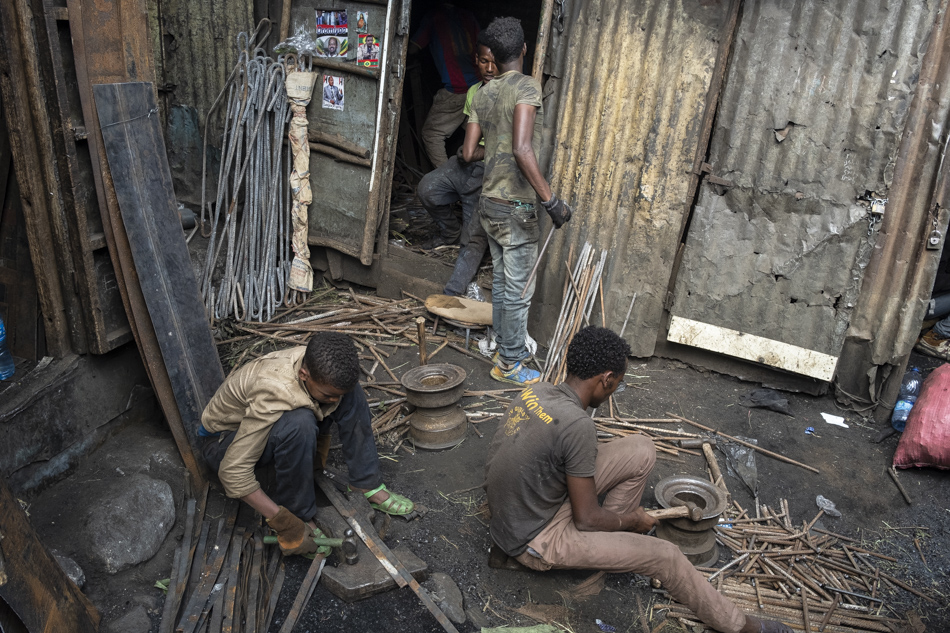
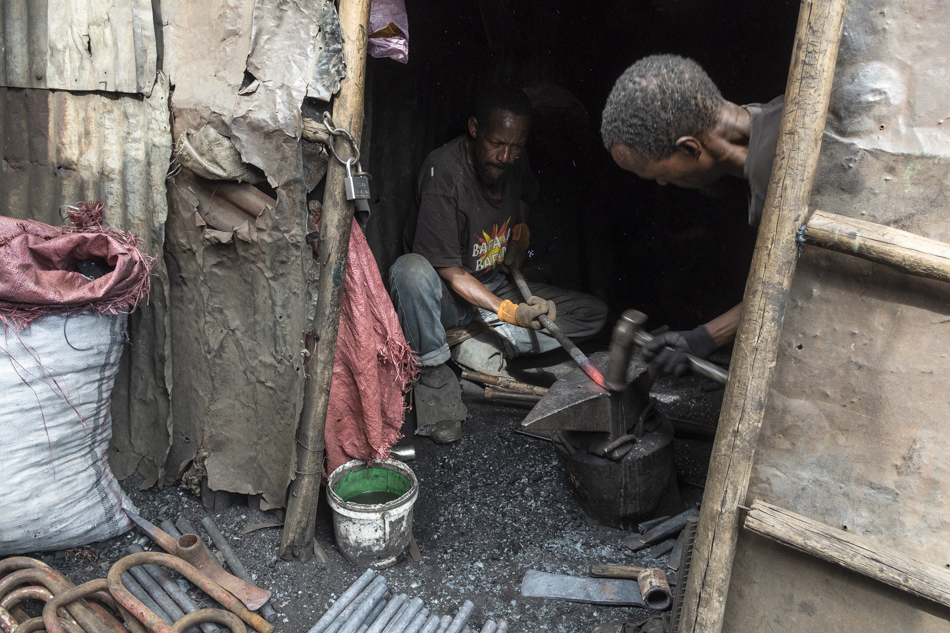
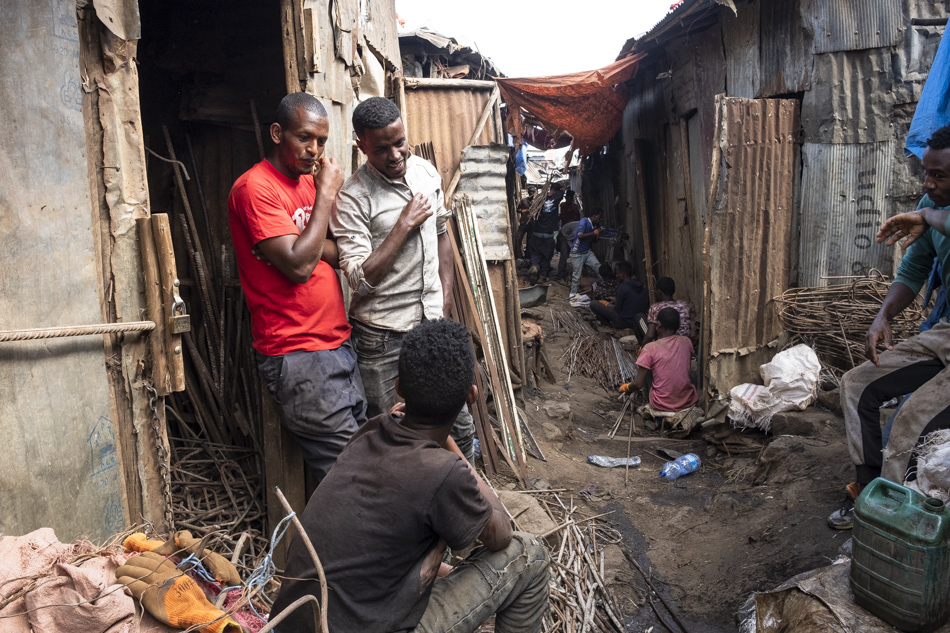
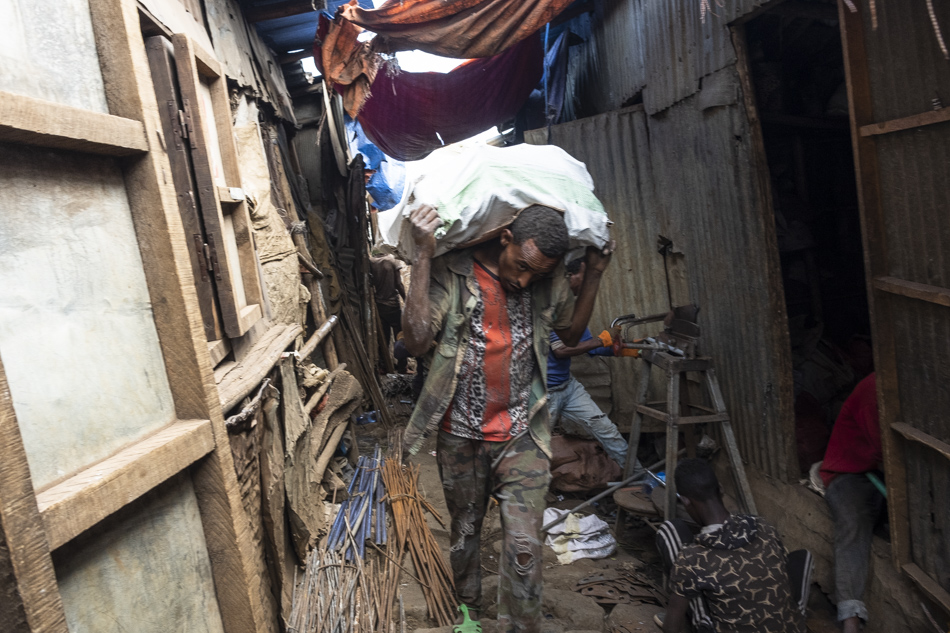
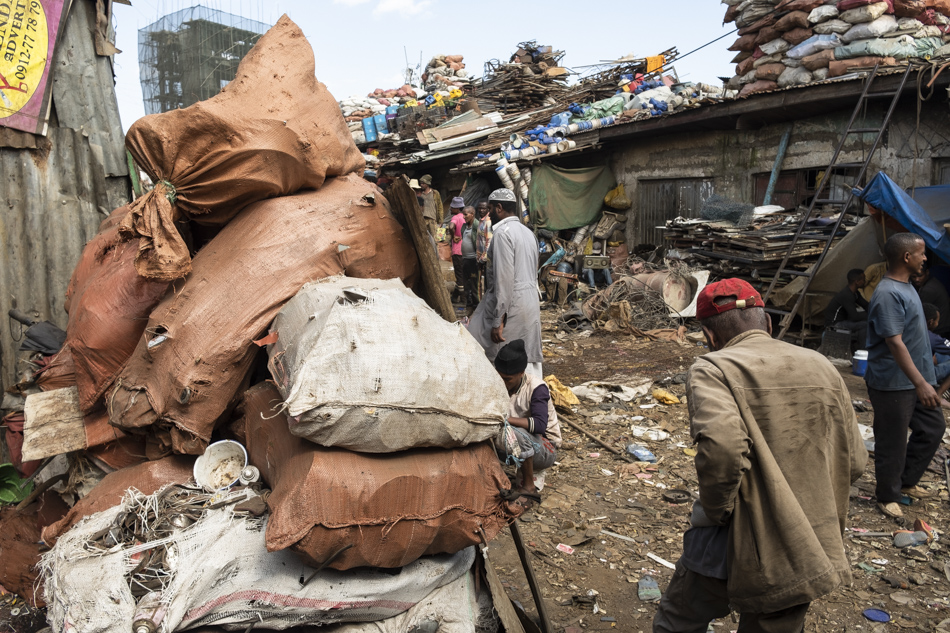
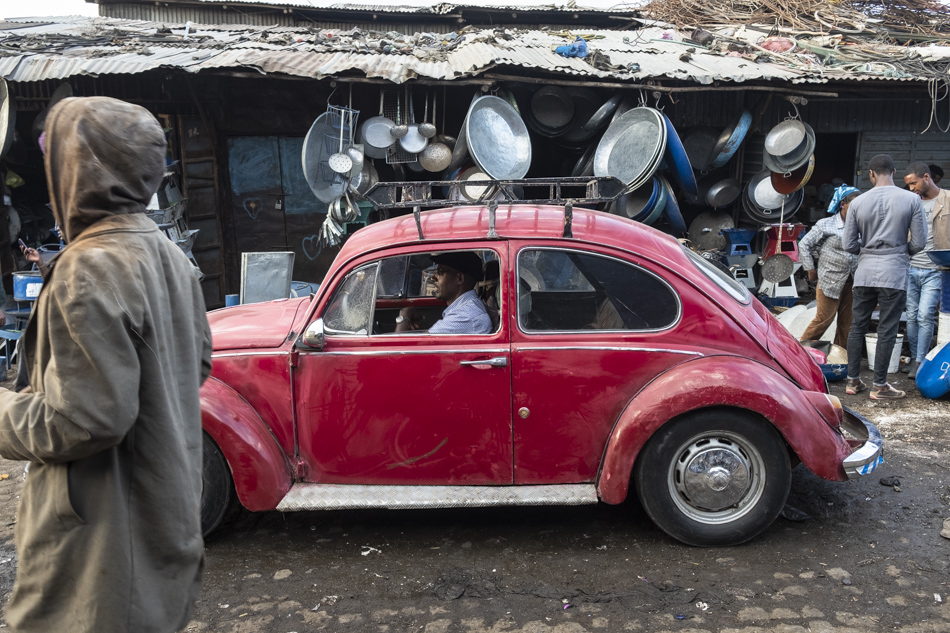
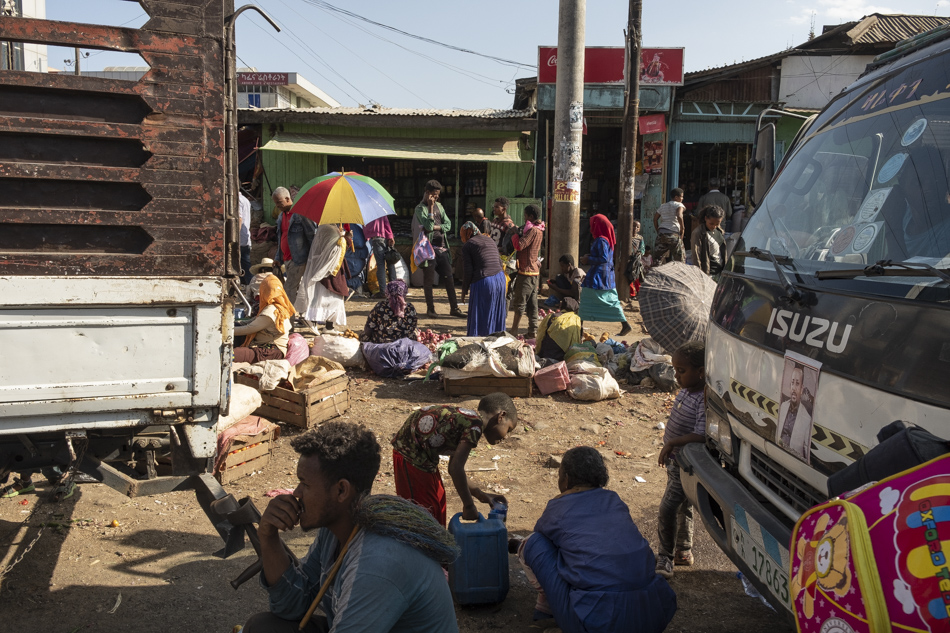
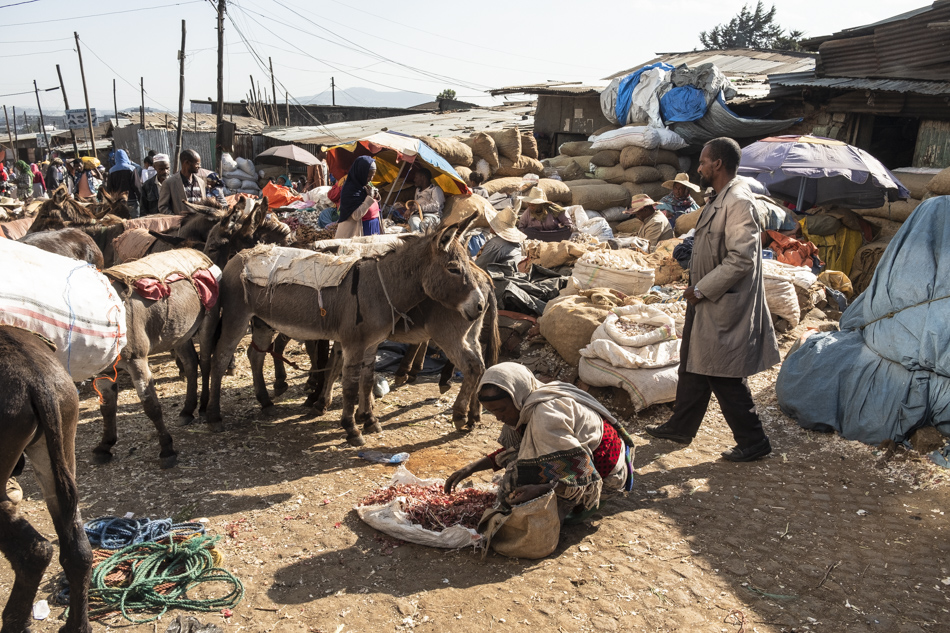
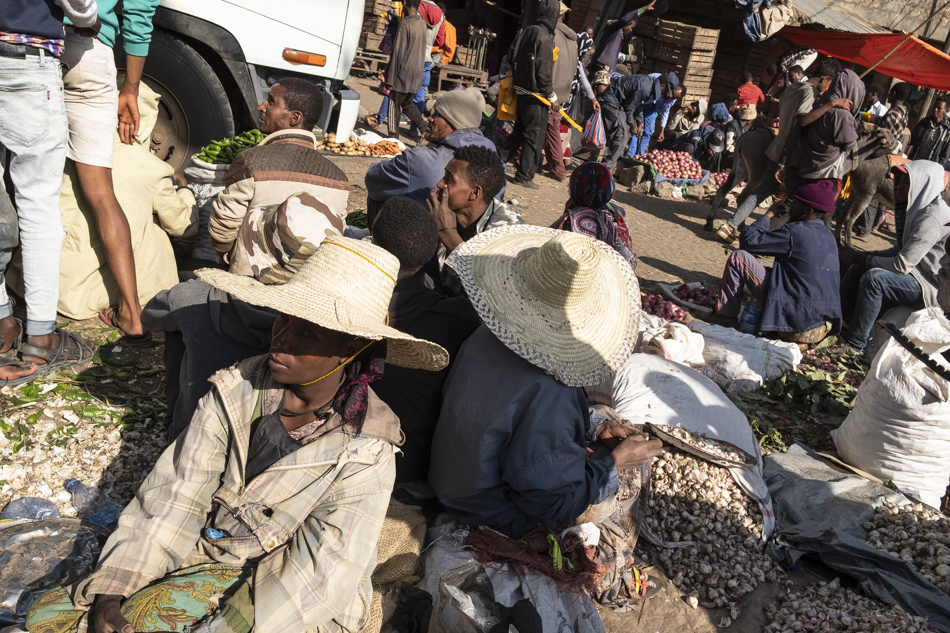
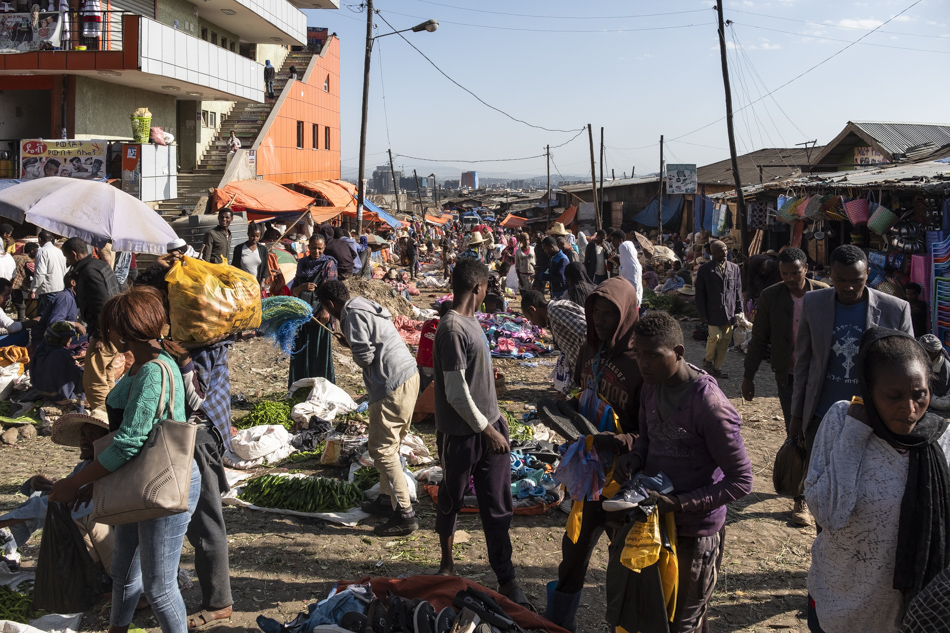
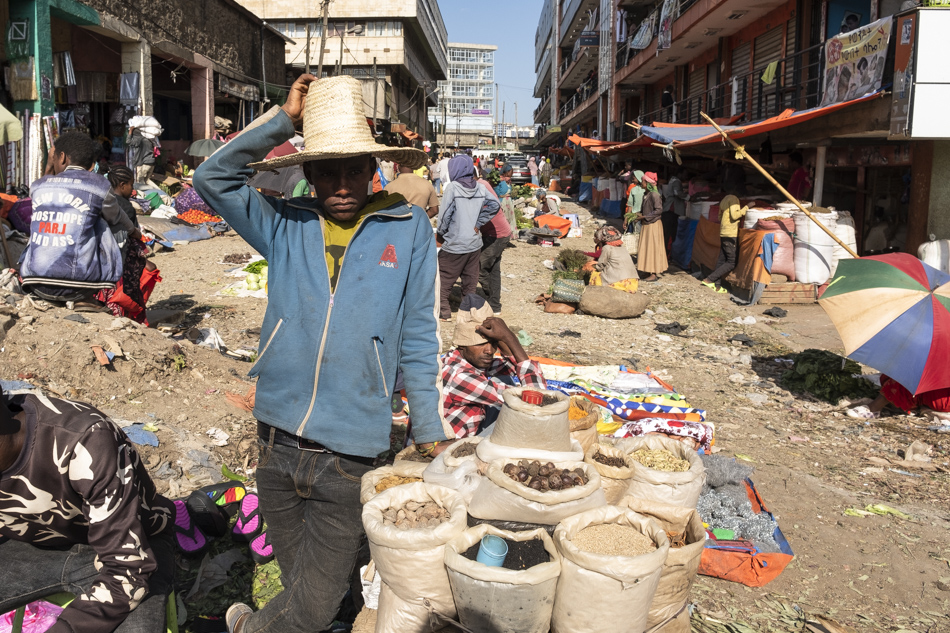
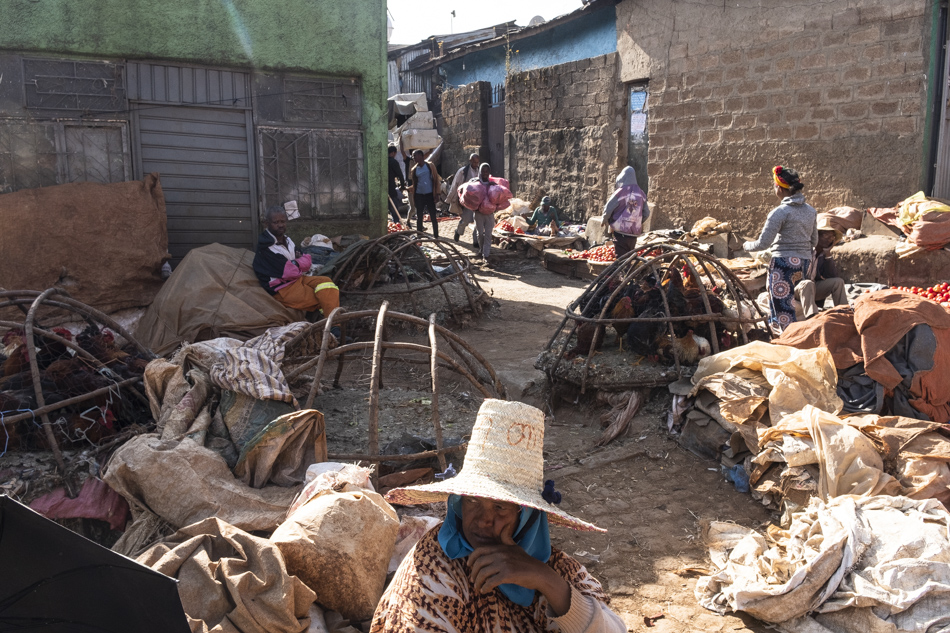
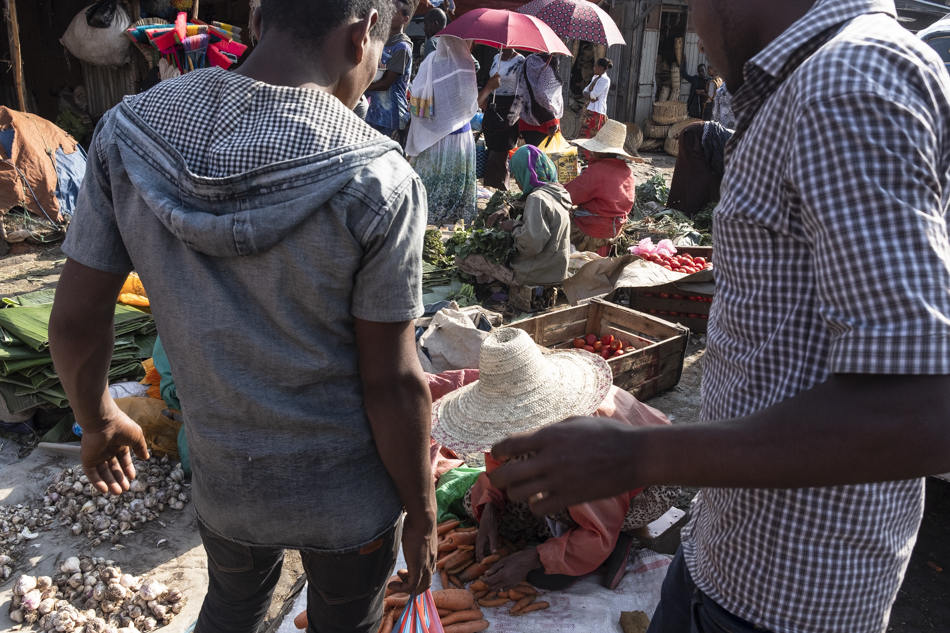
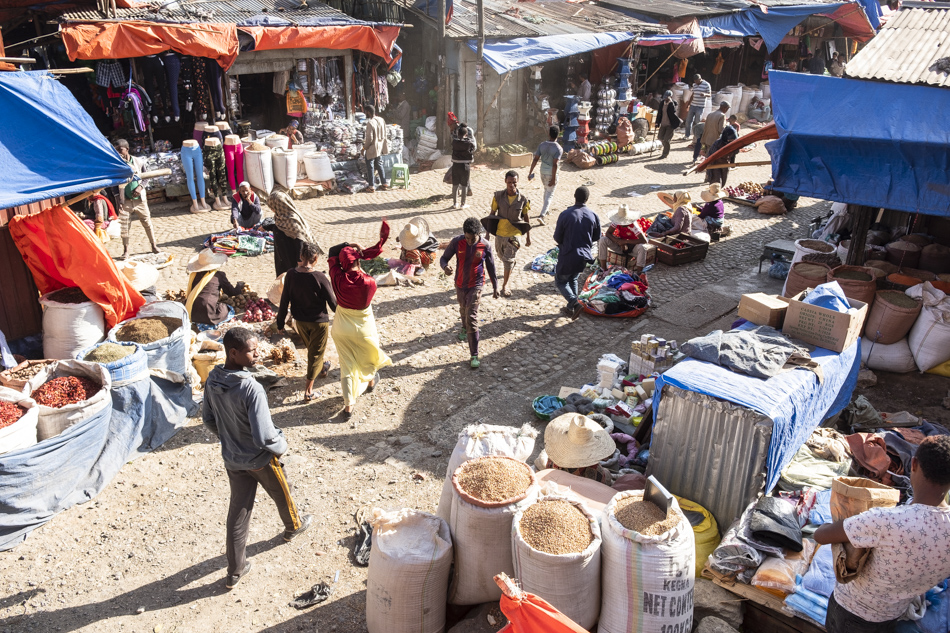
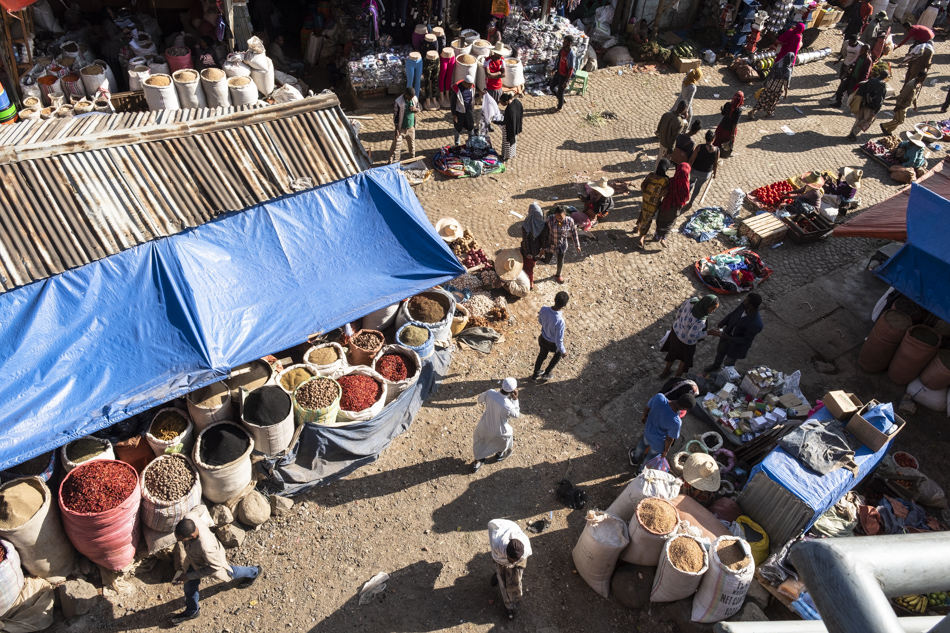
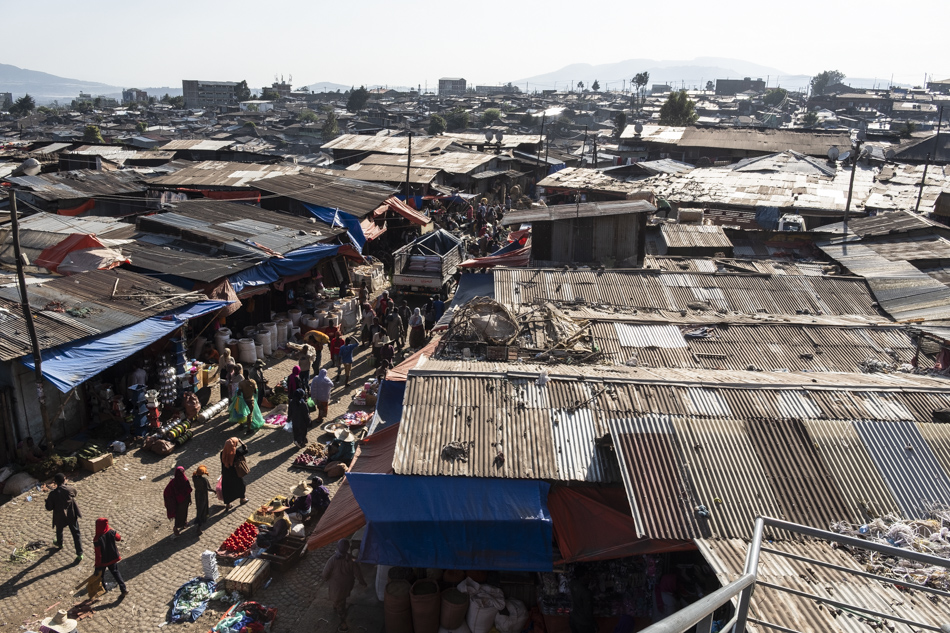
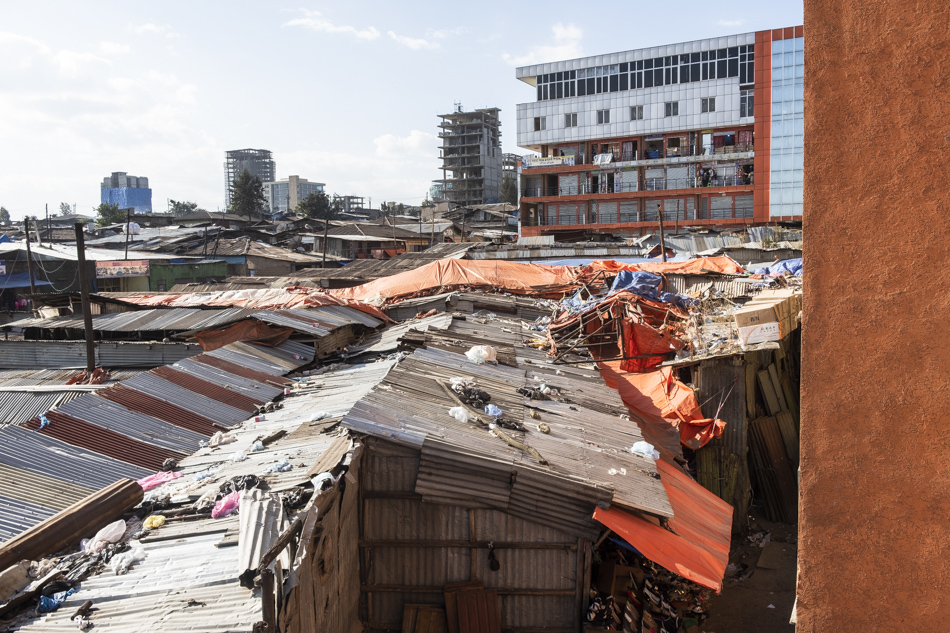
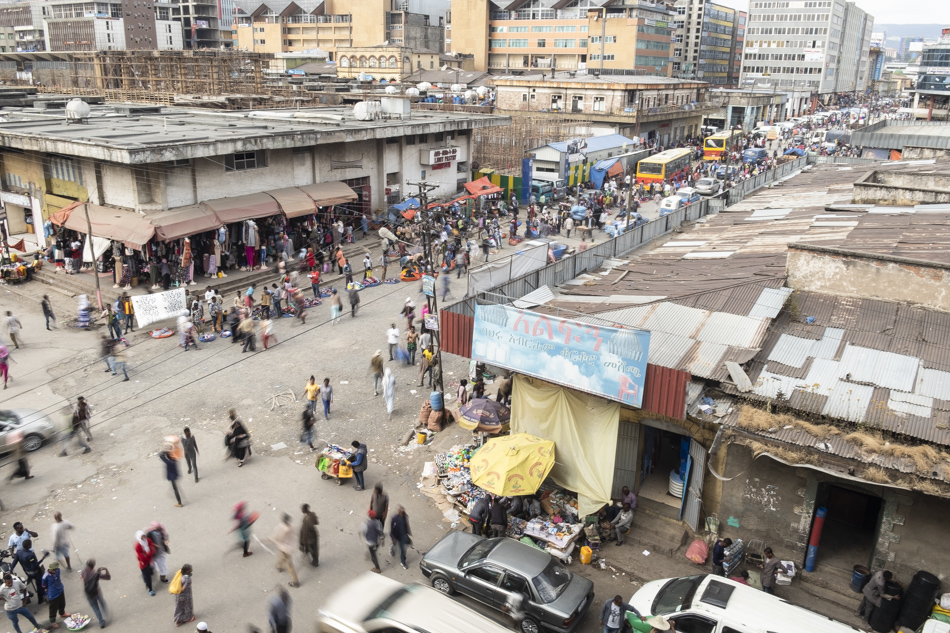
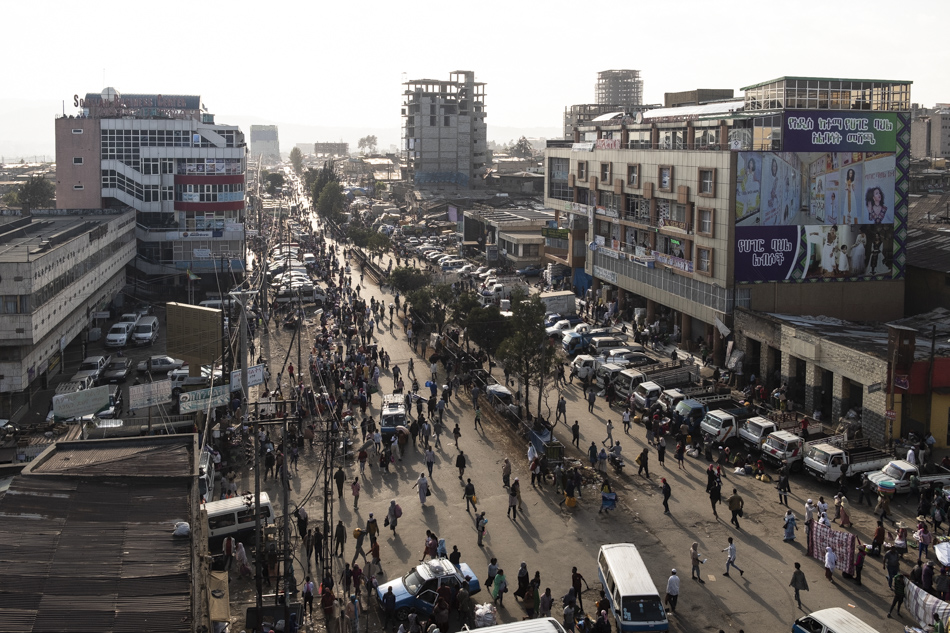
After a two years gap, we were back in Istanbul again for a week.
As always the town is warm and welcoming to visitors, and there is a lot to see beyond the traditional touristy locations.
These are few photos randomly taken during the trip, exploring the areas of Eminön, Balat and Fener.
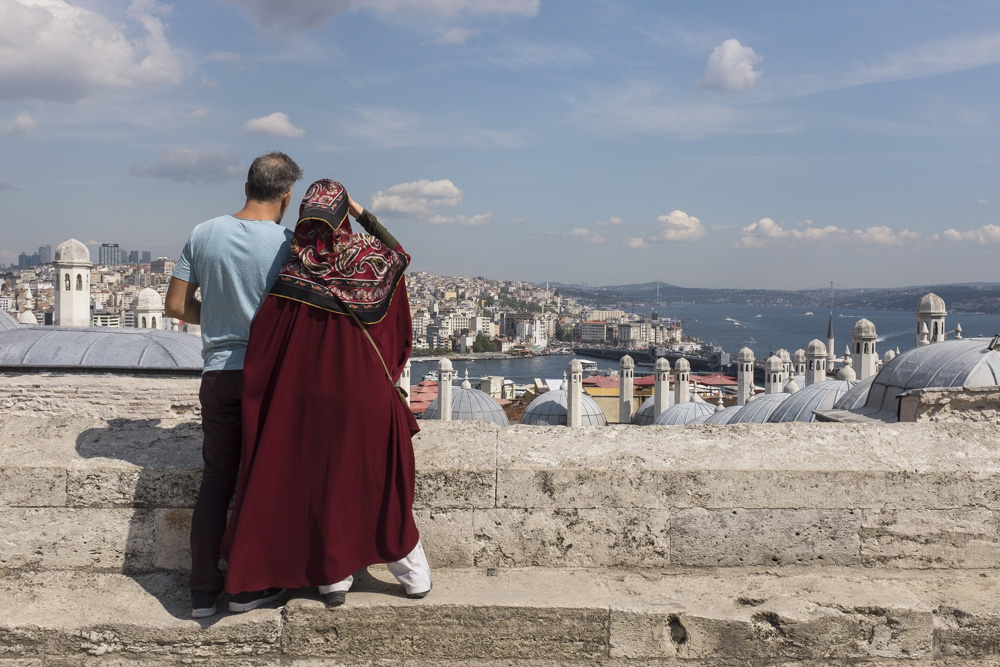
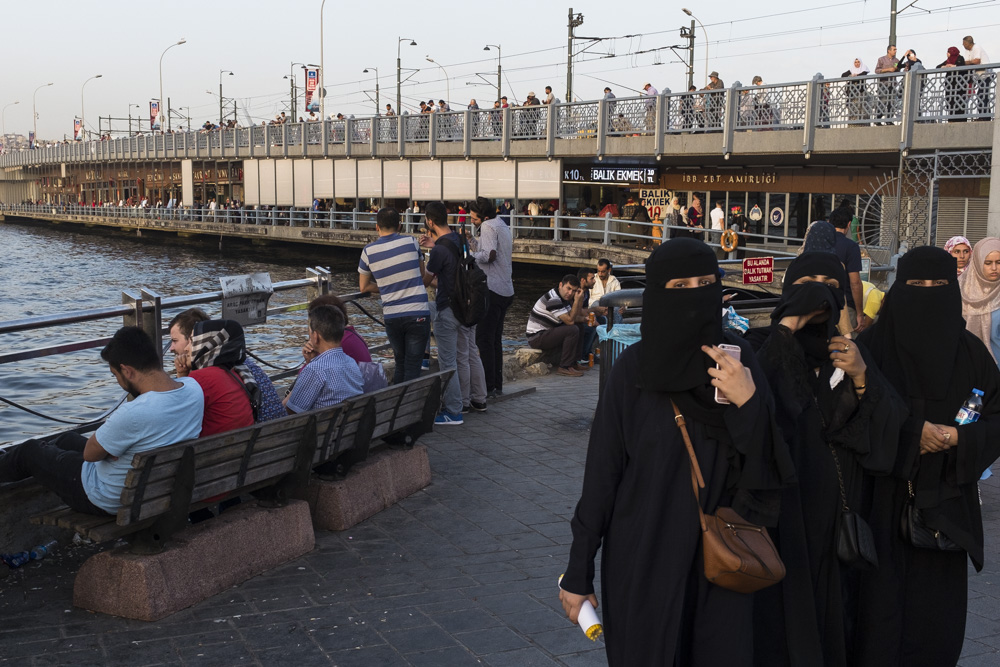
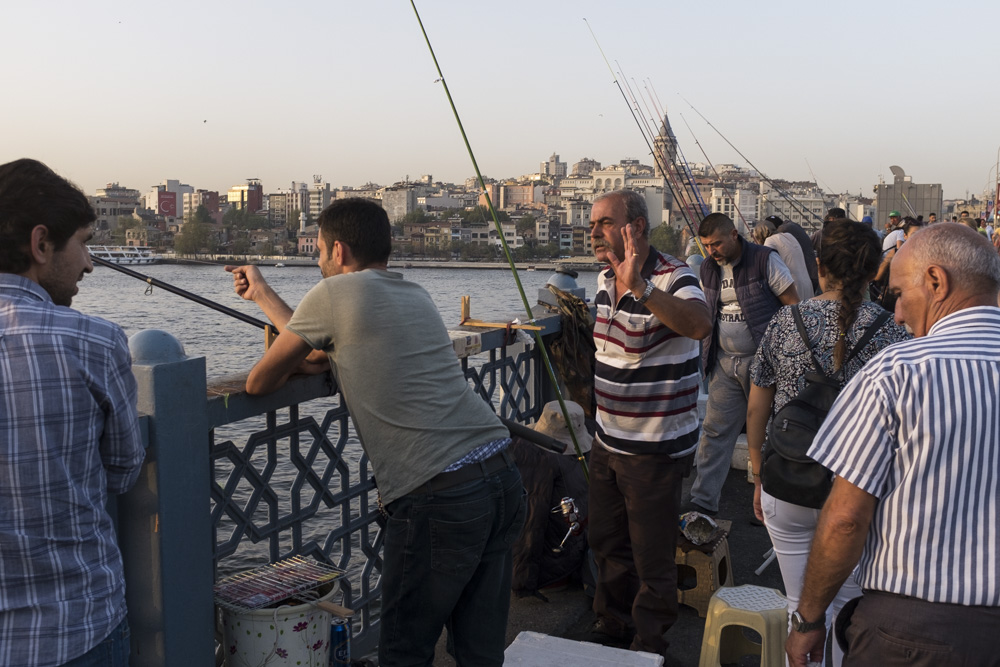
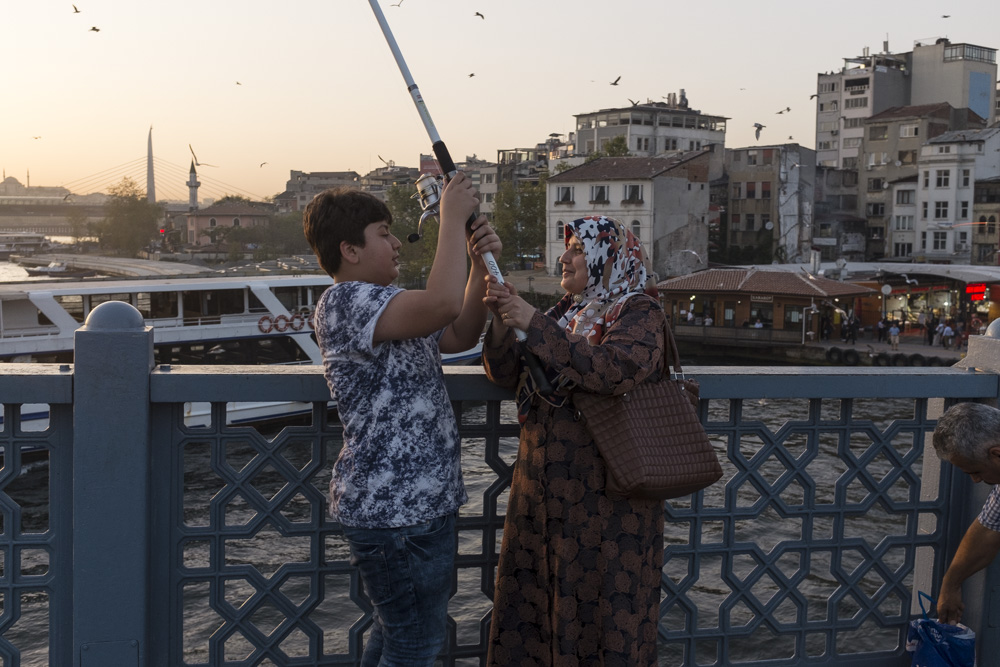
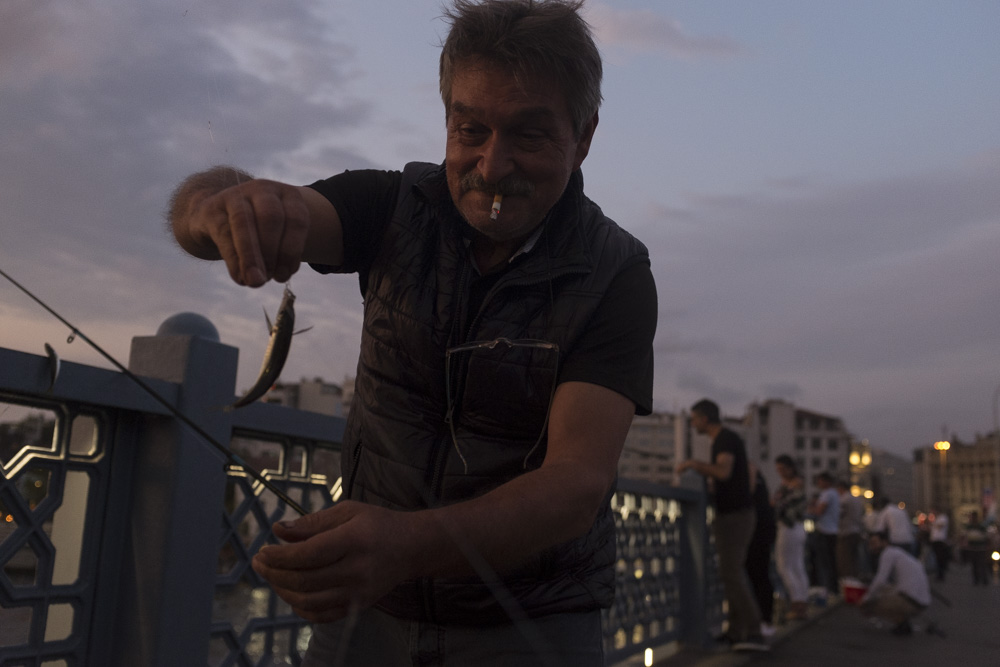
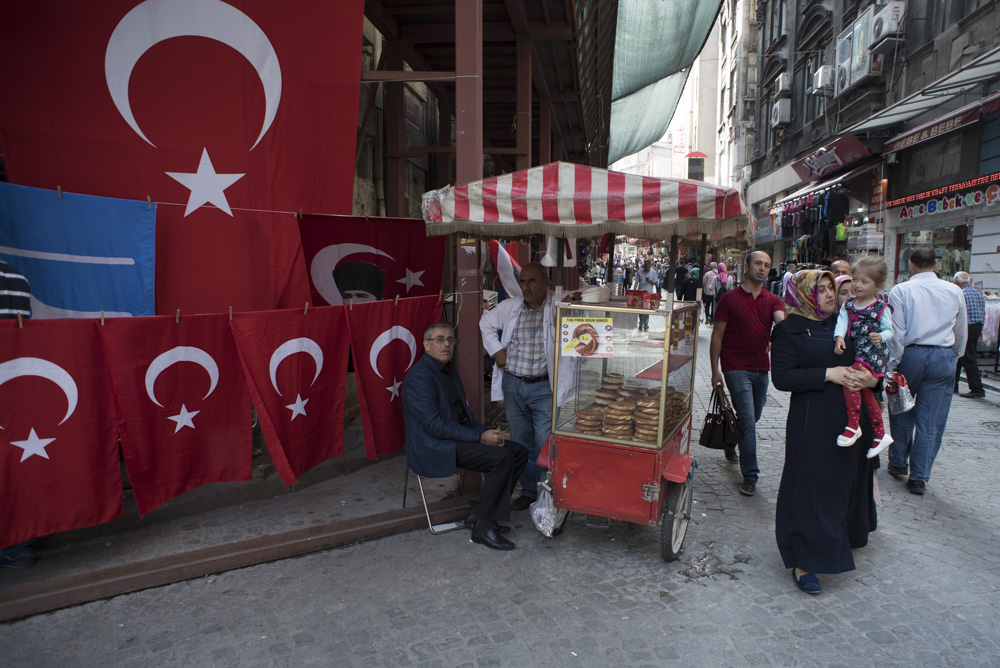
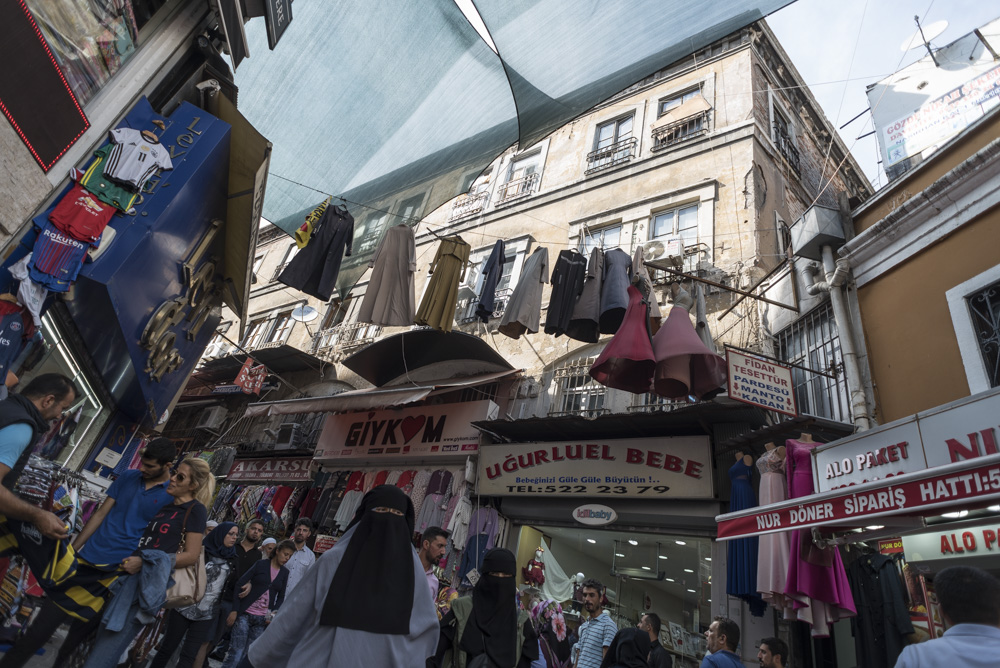
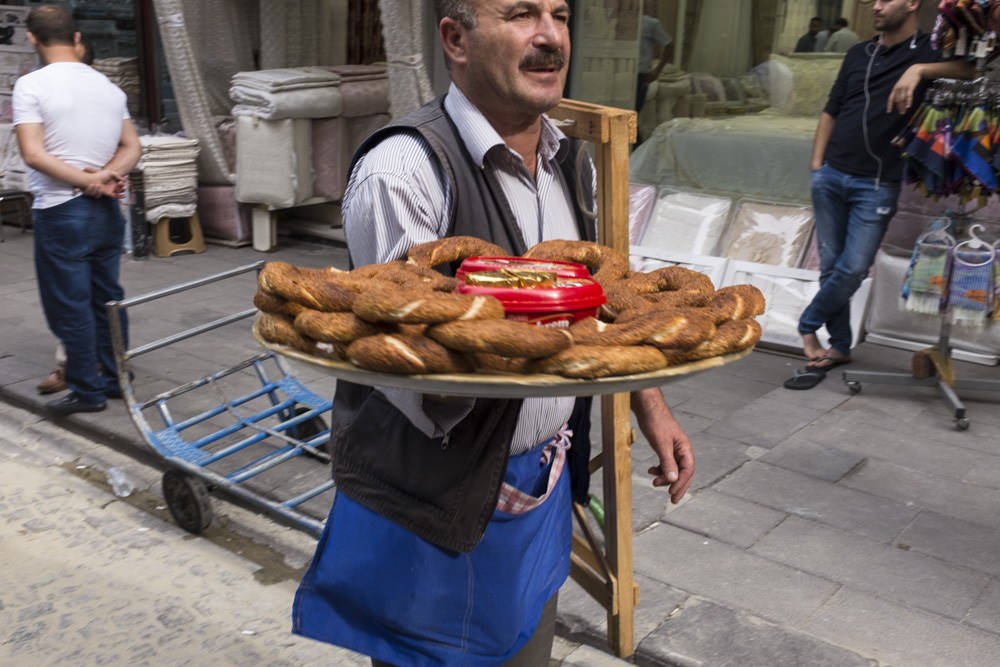
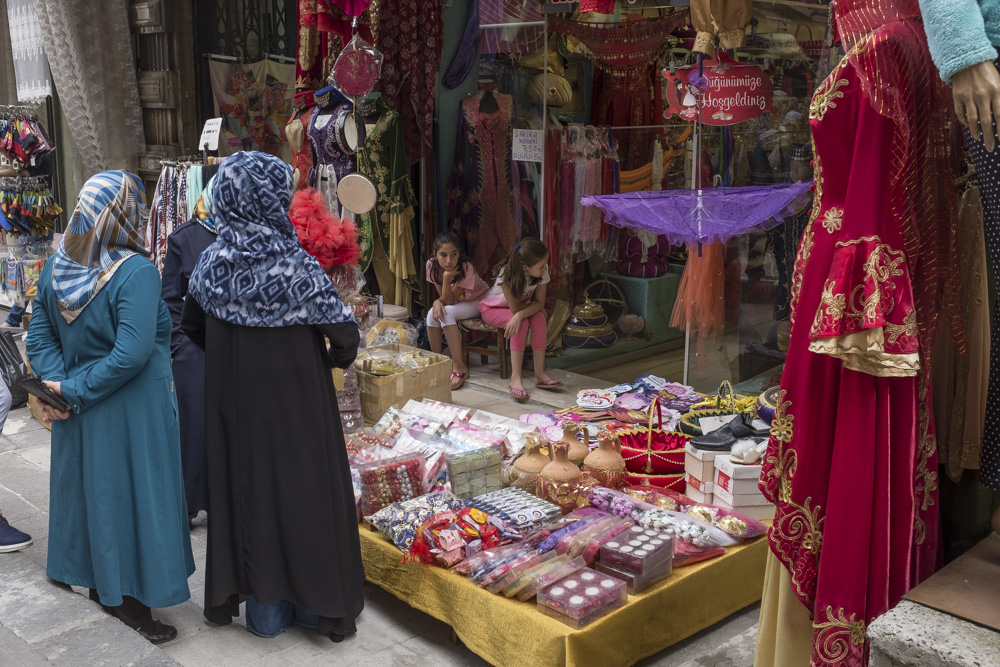
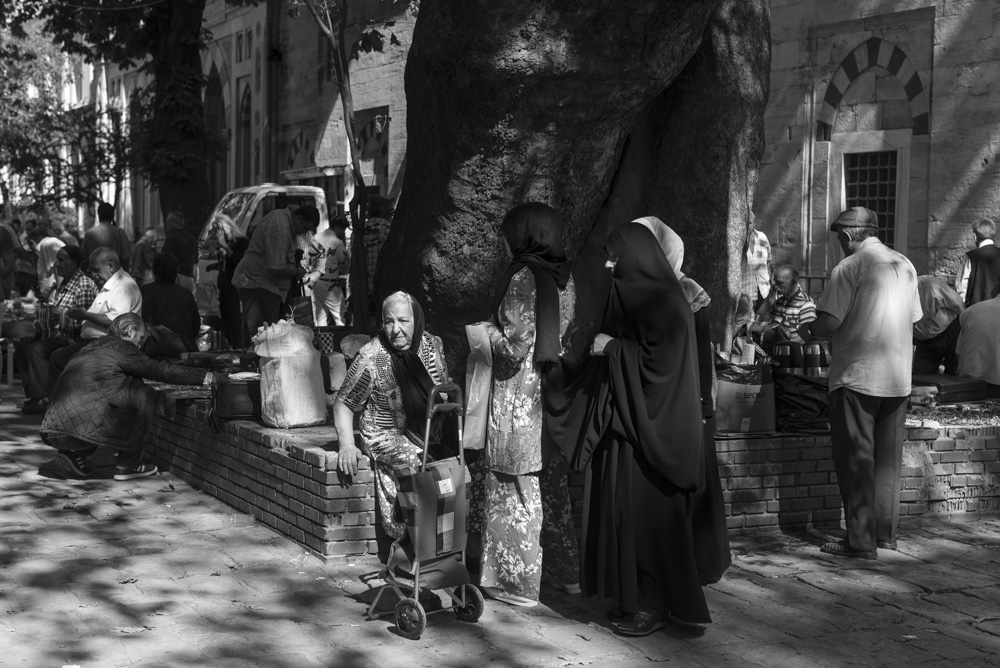
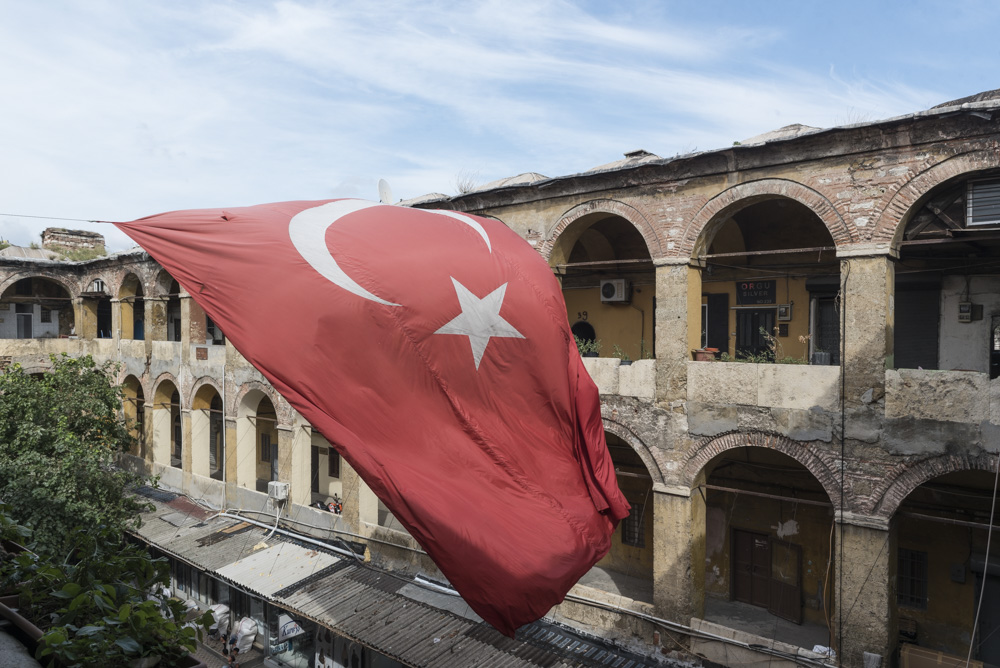
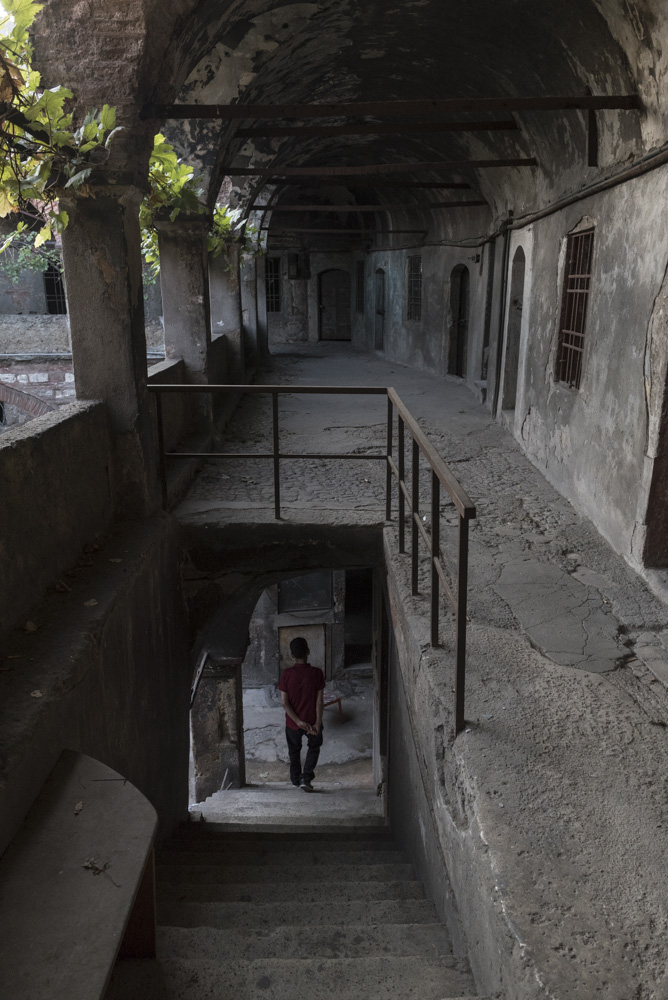
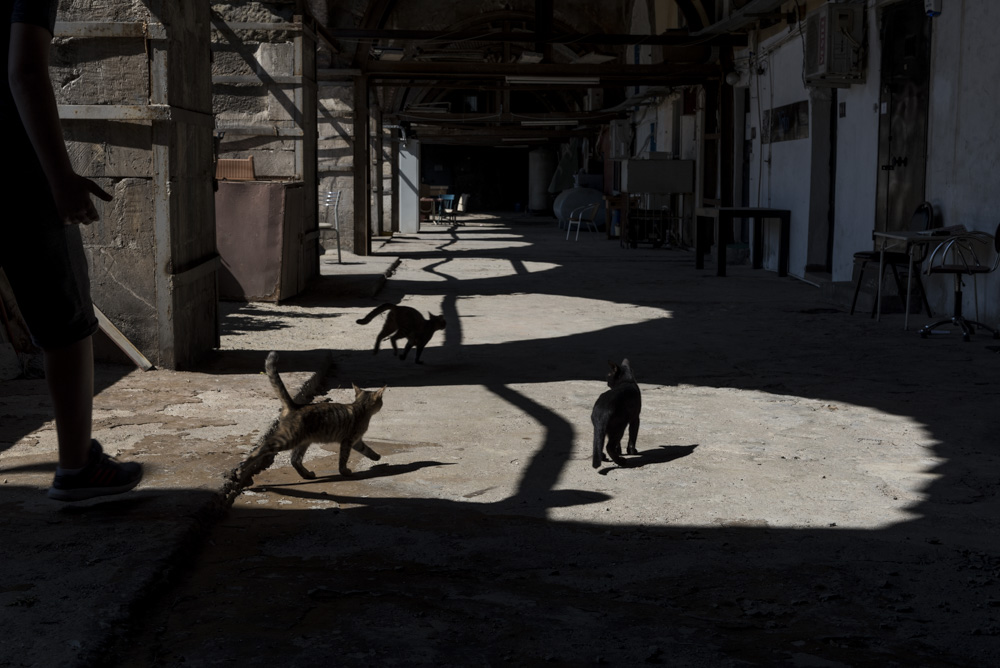
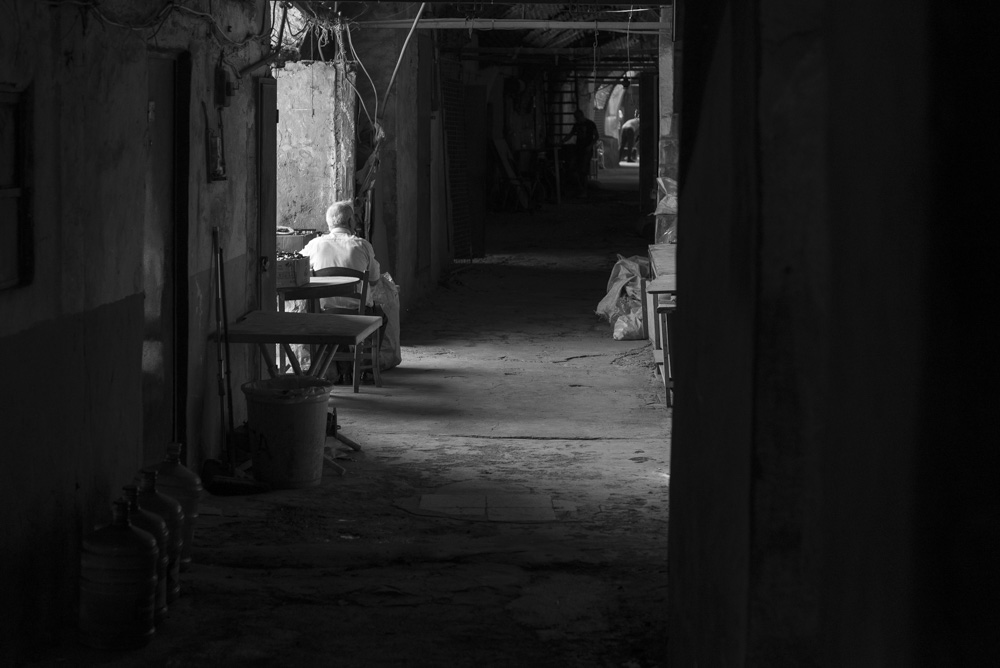
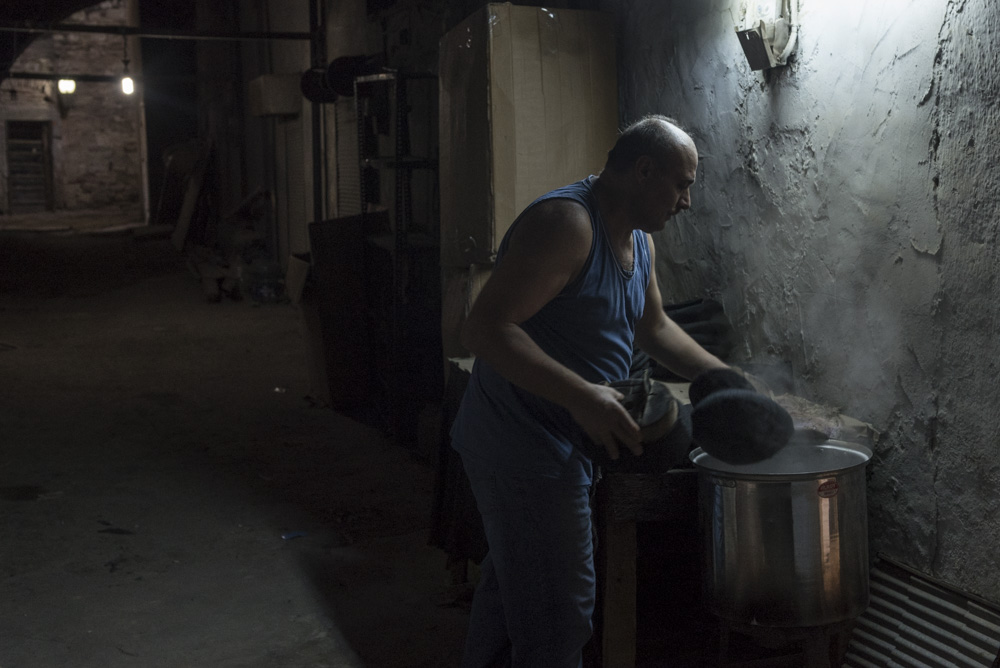
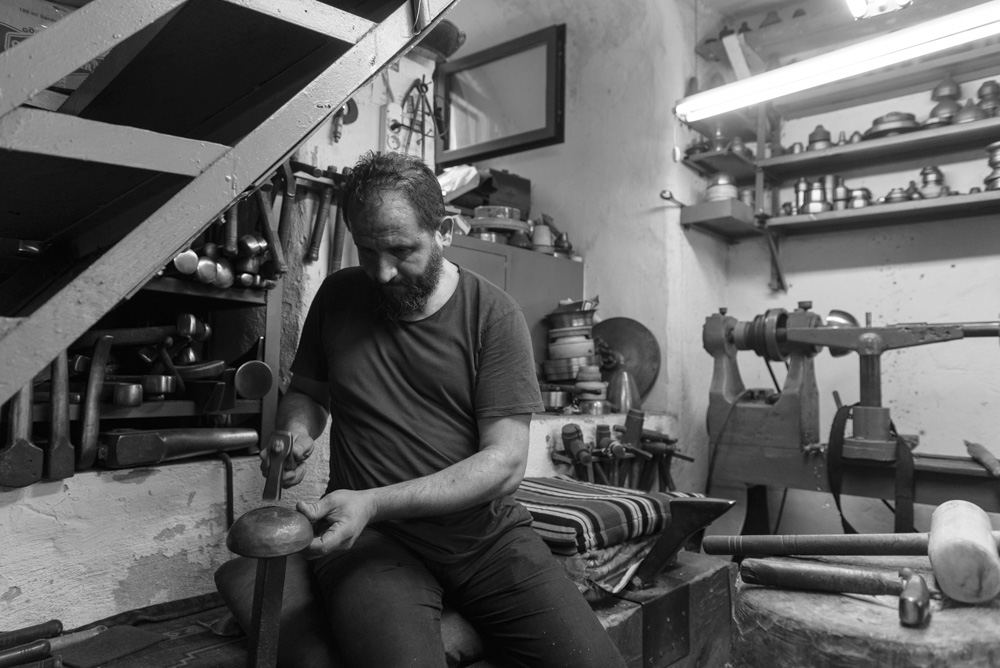
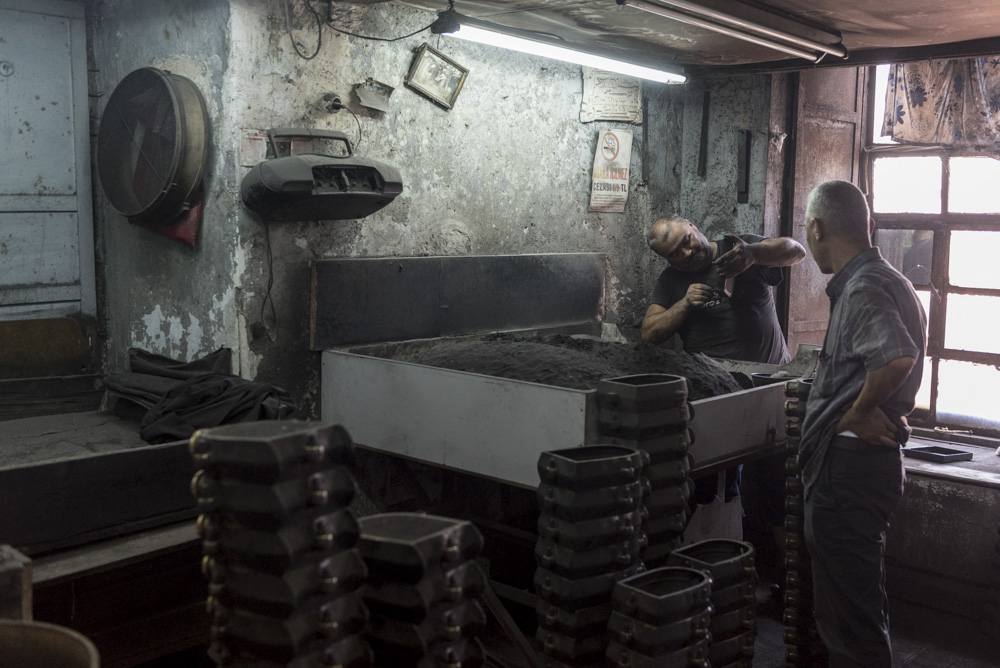
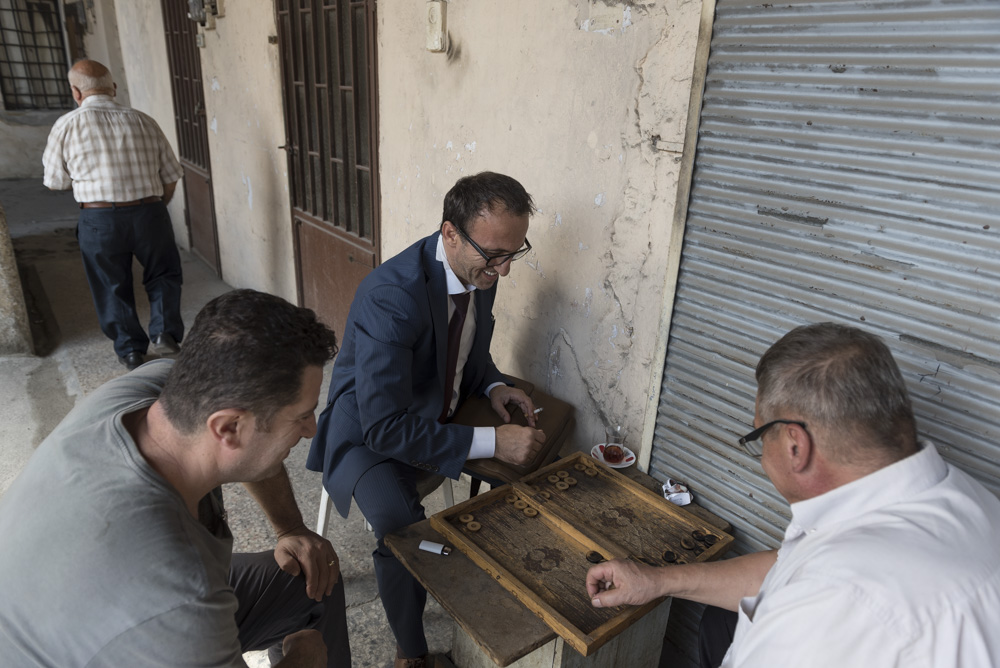
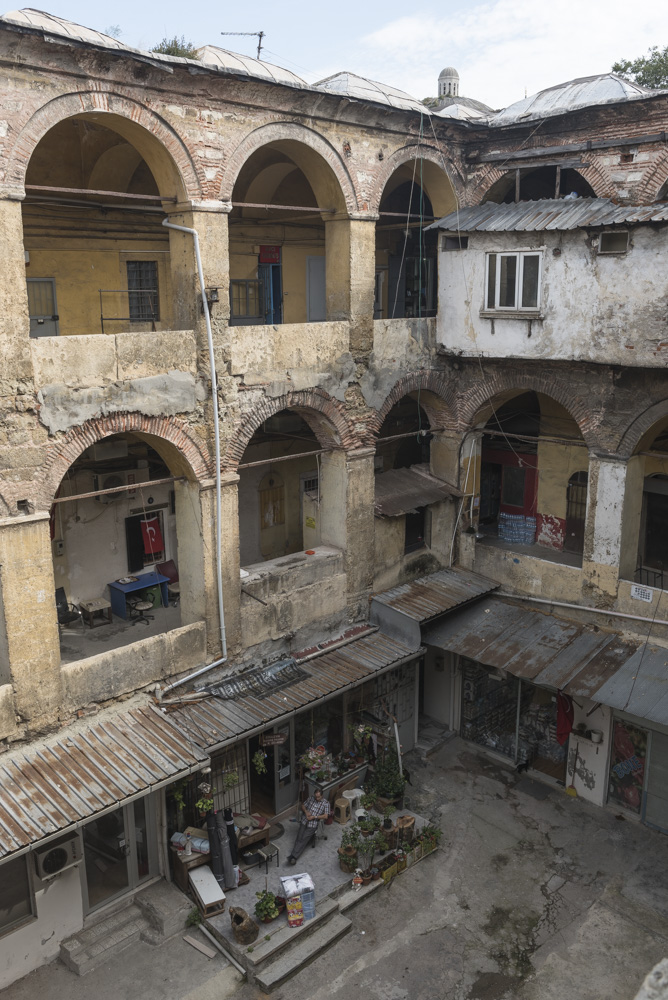
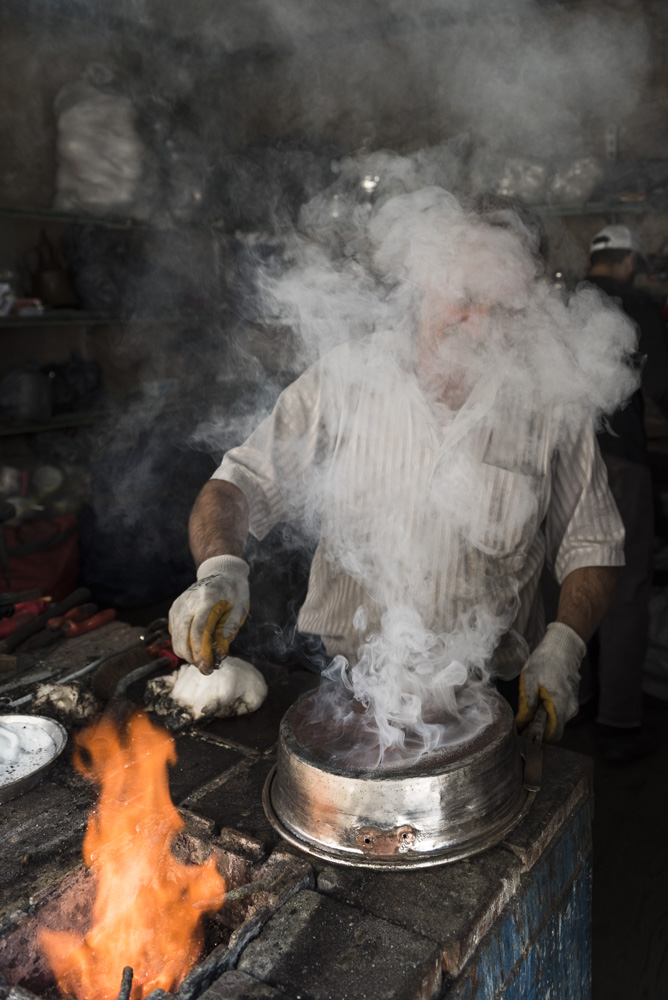
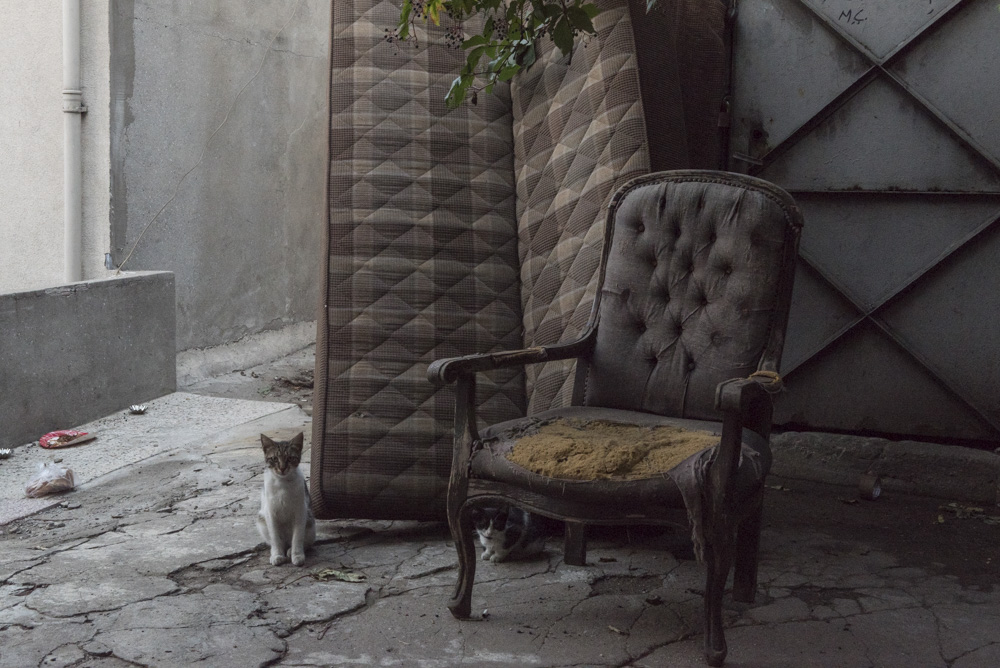
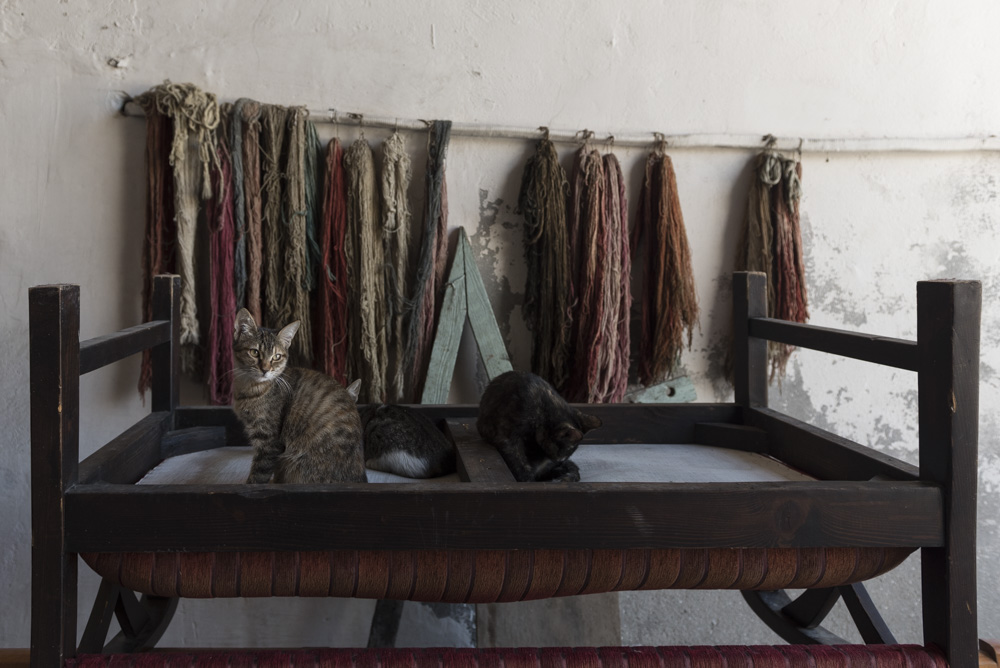
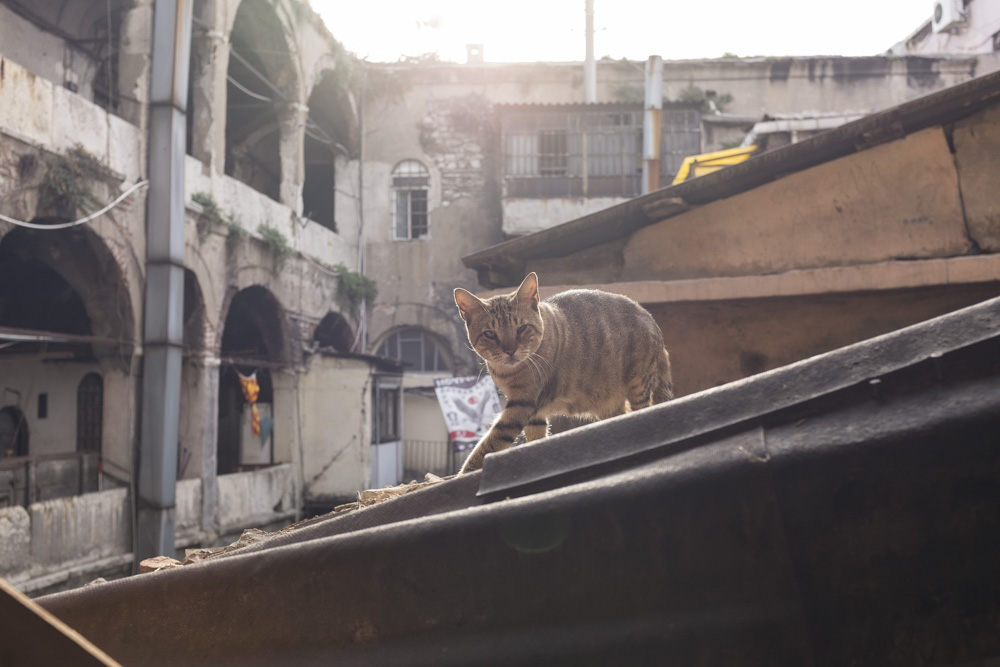
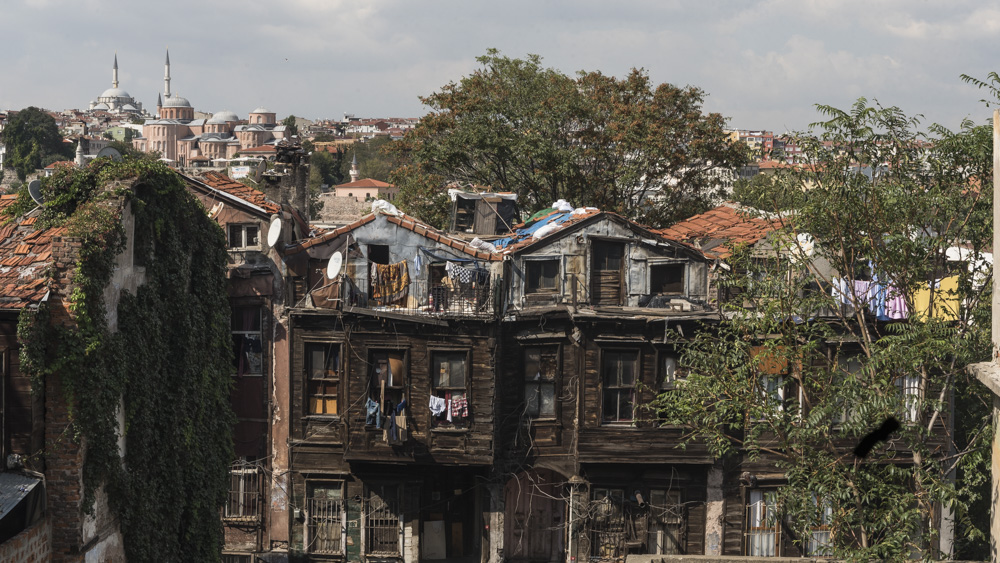
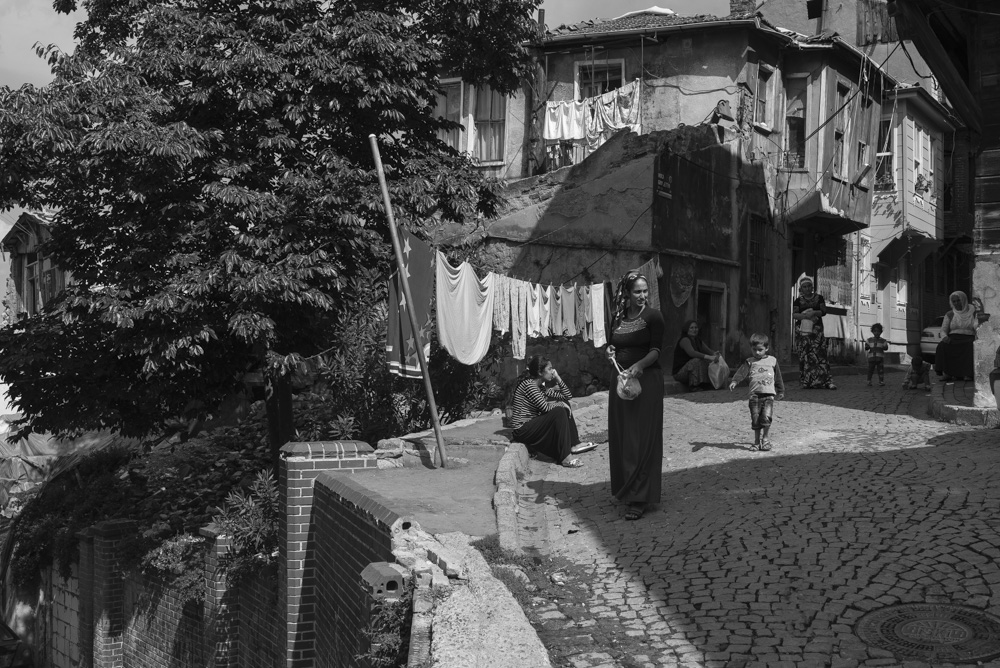
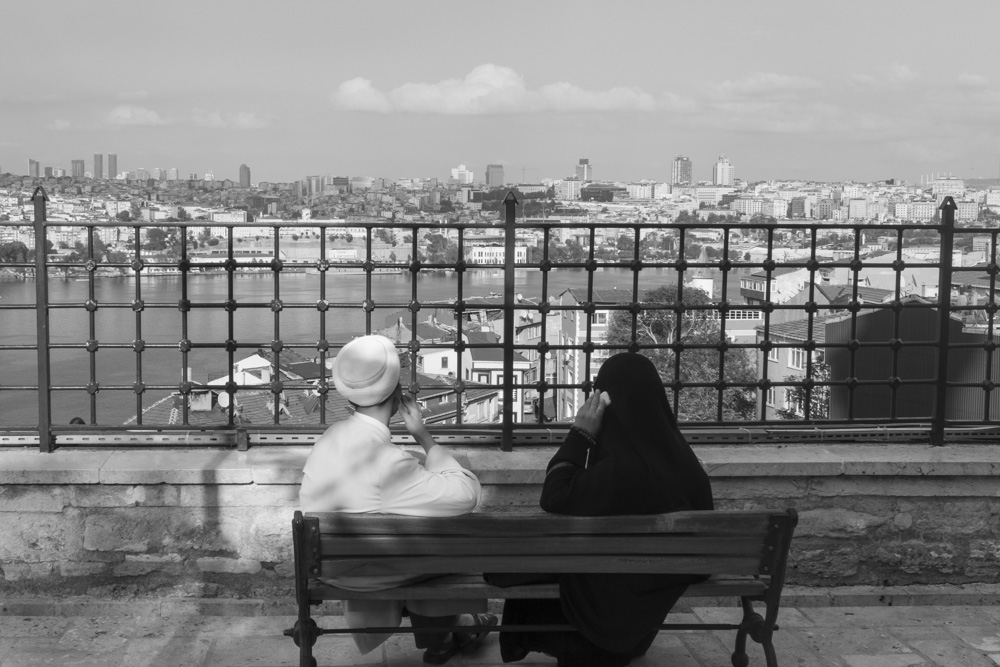
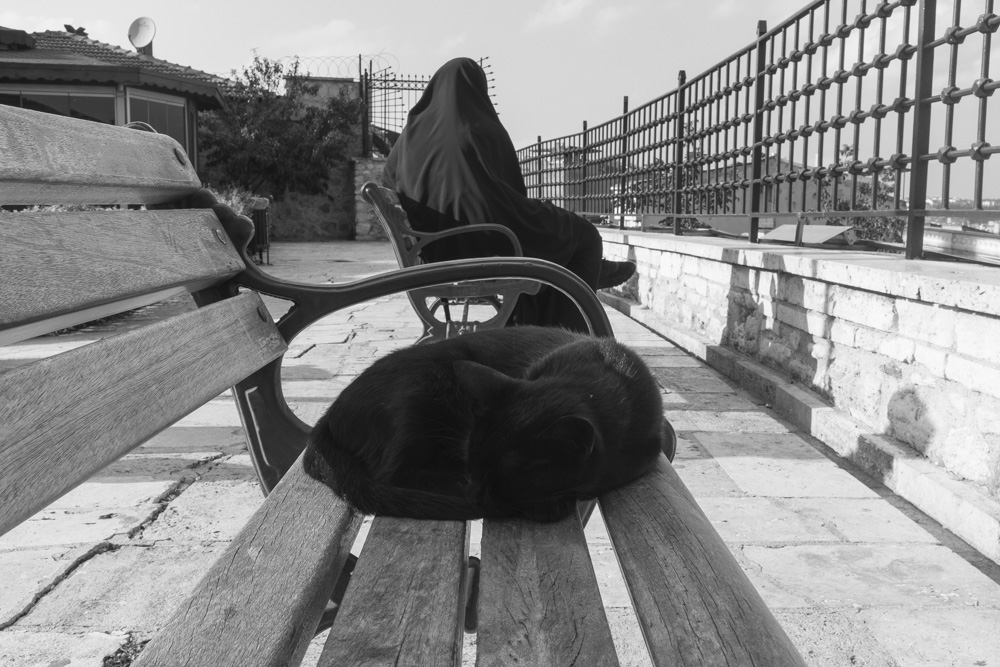
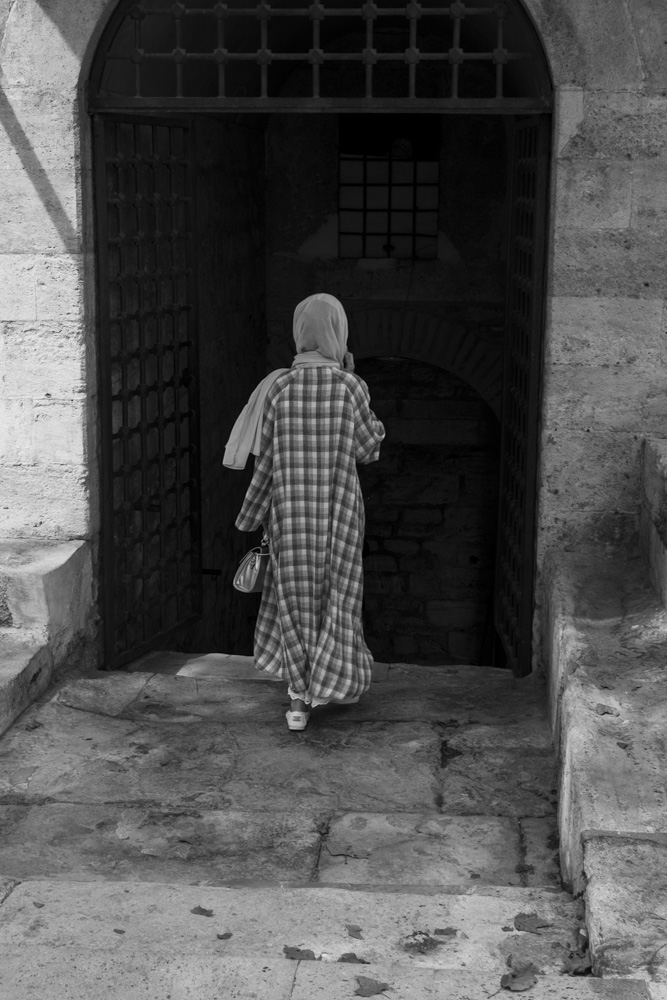
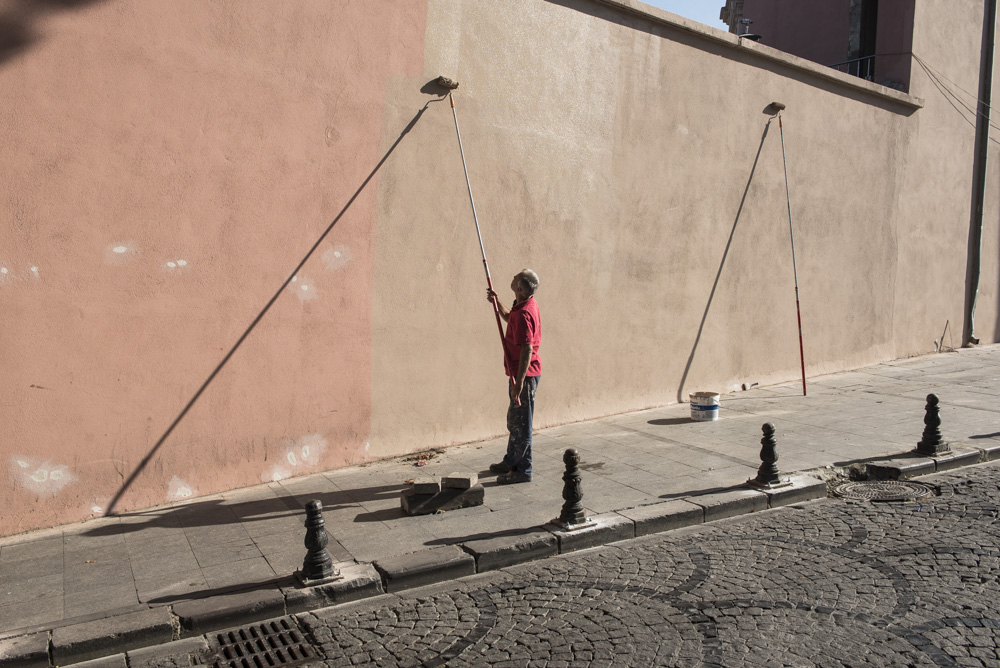
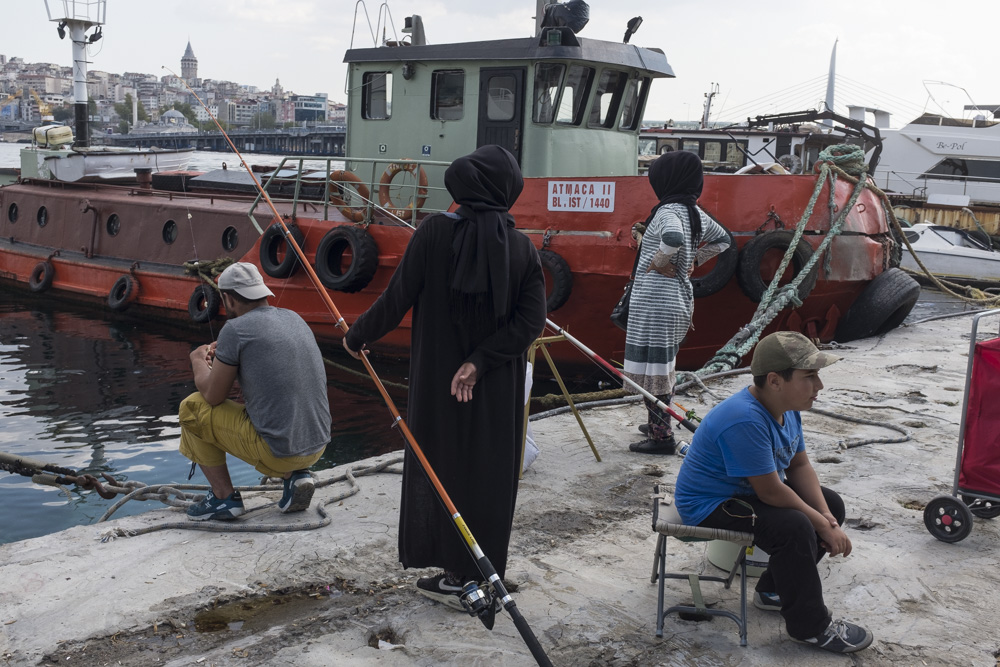
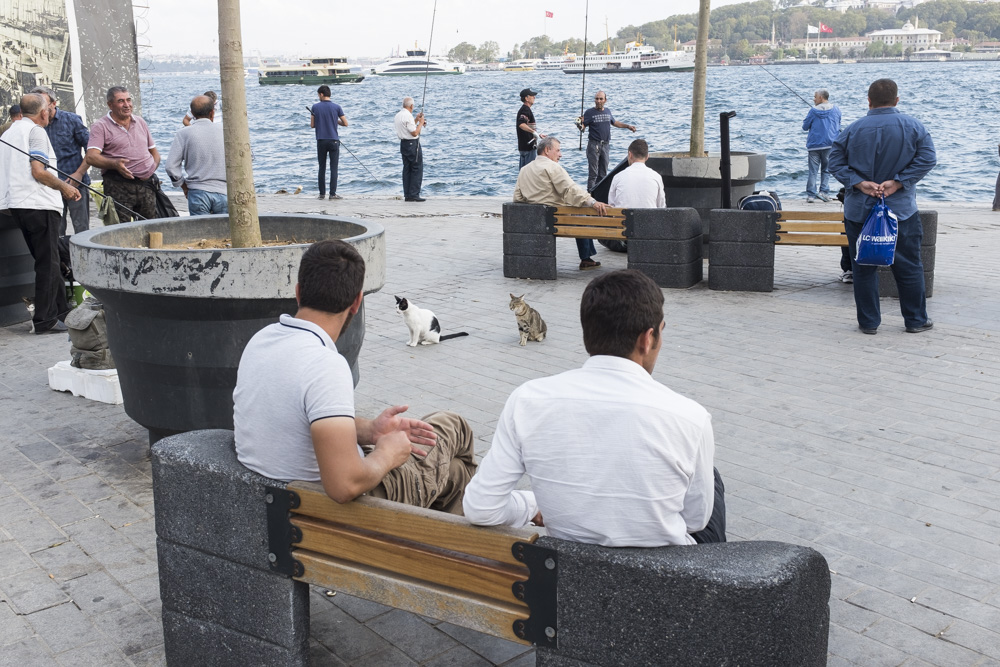
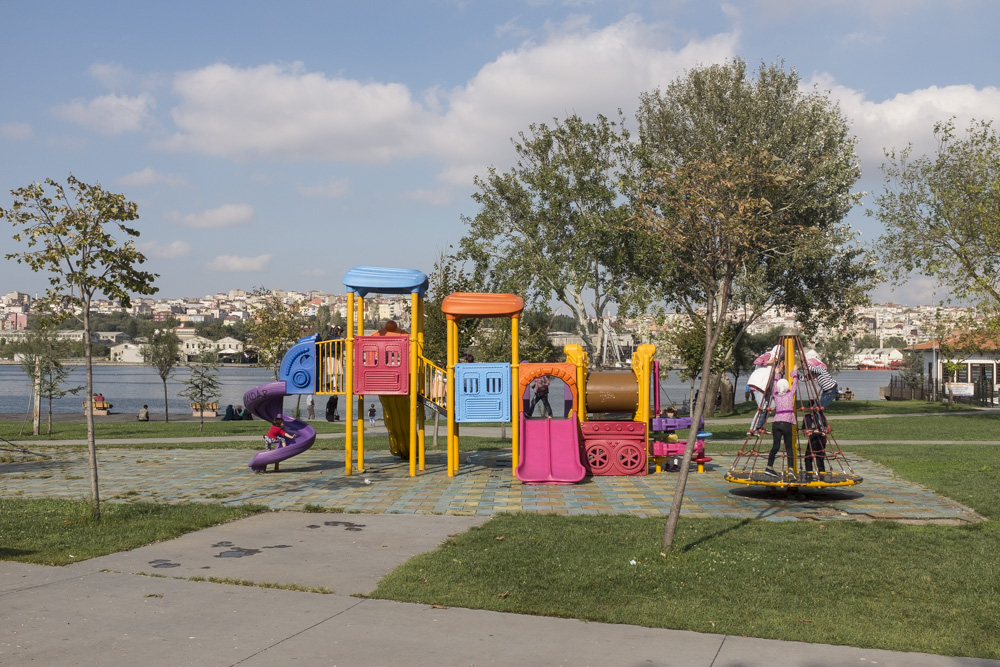
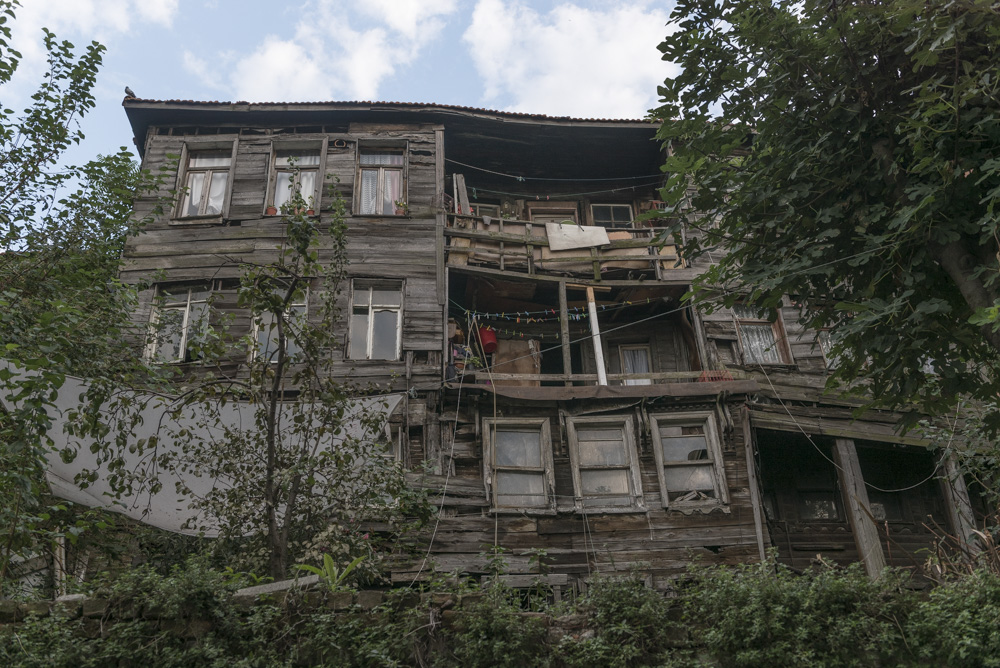
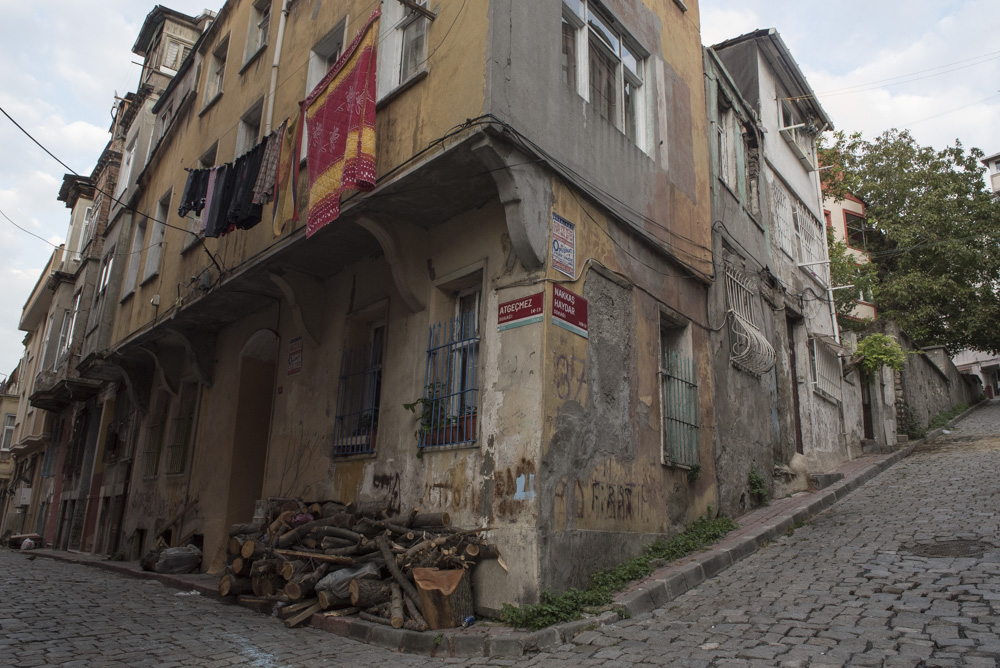
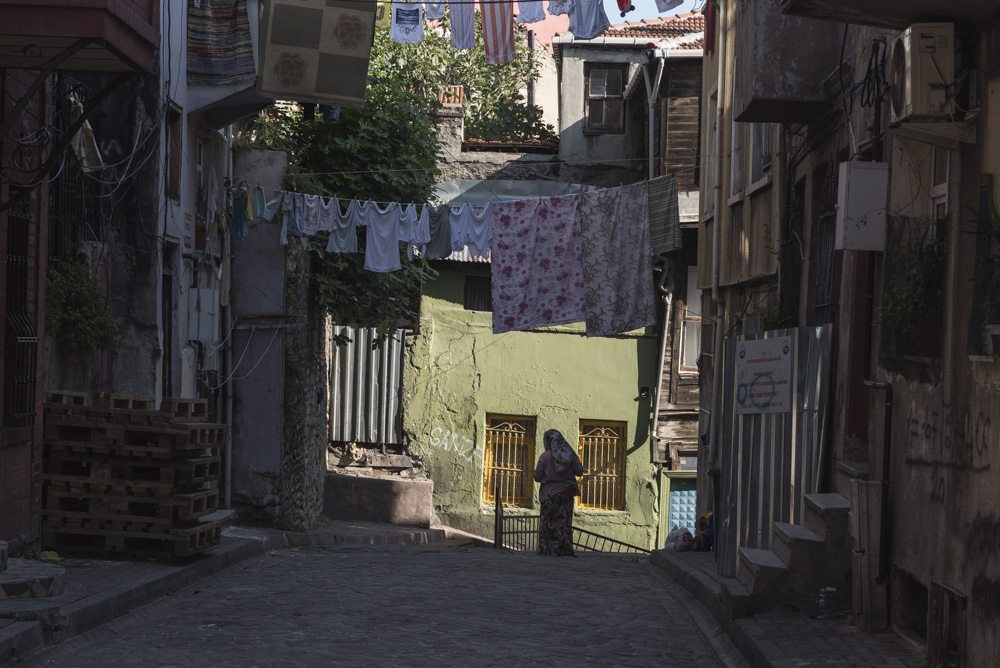
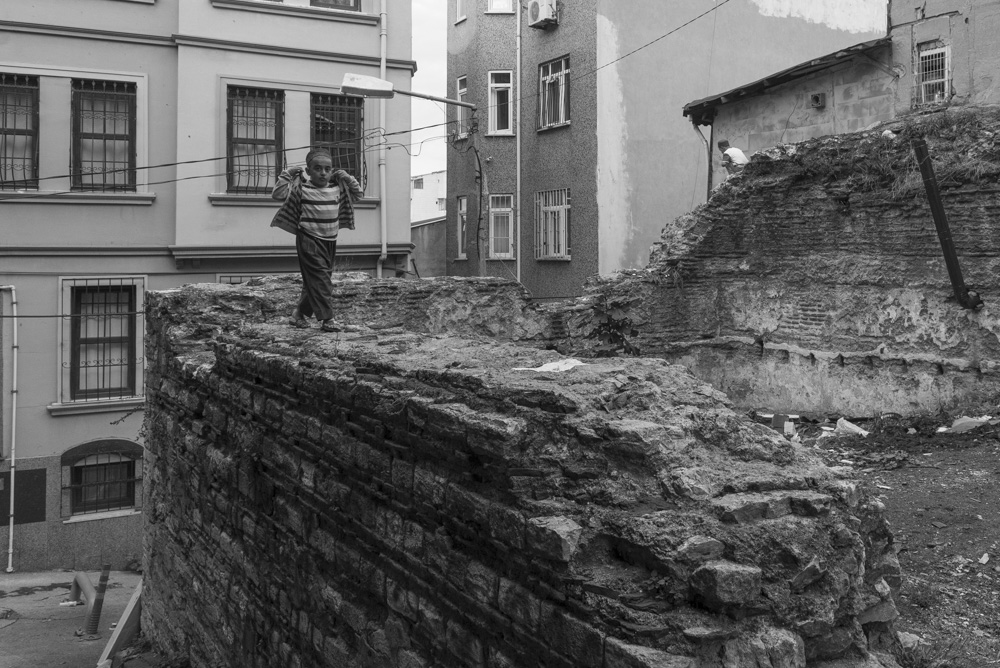
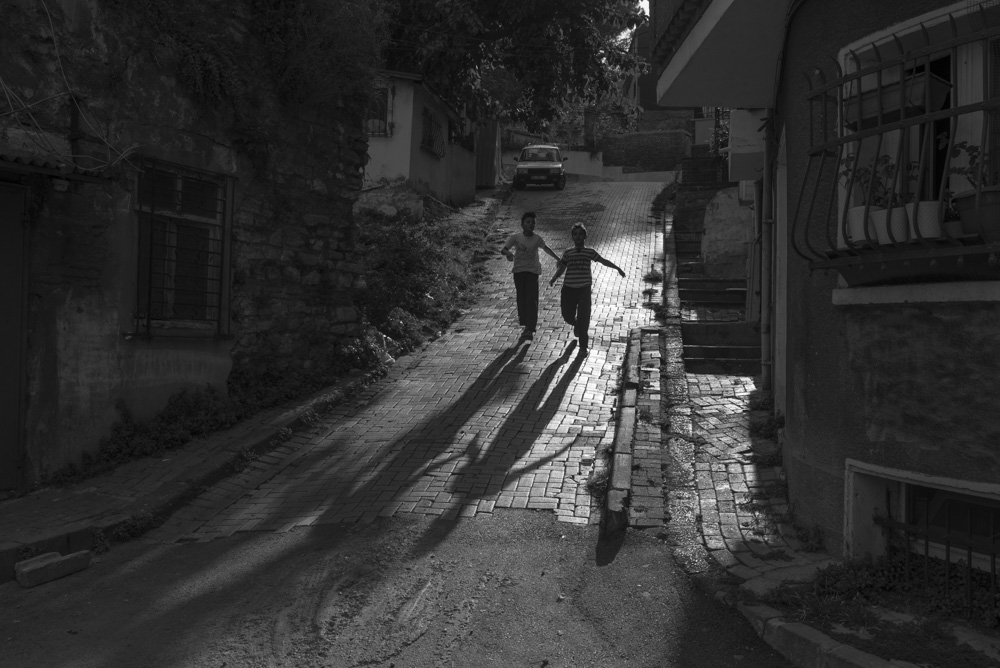
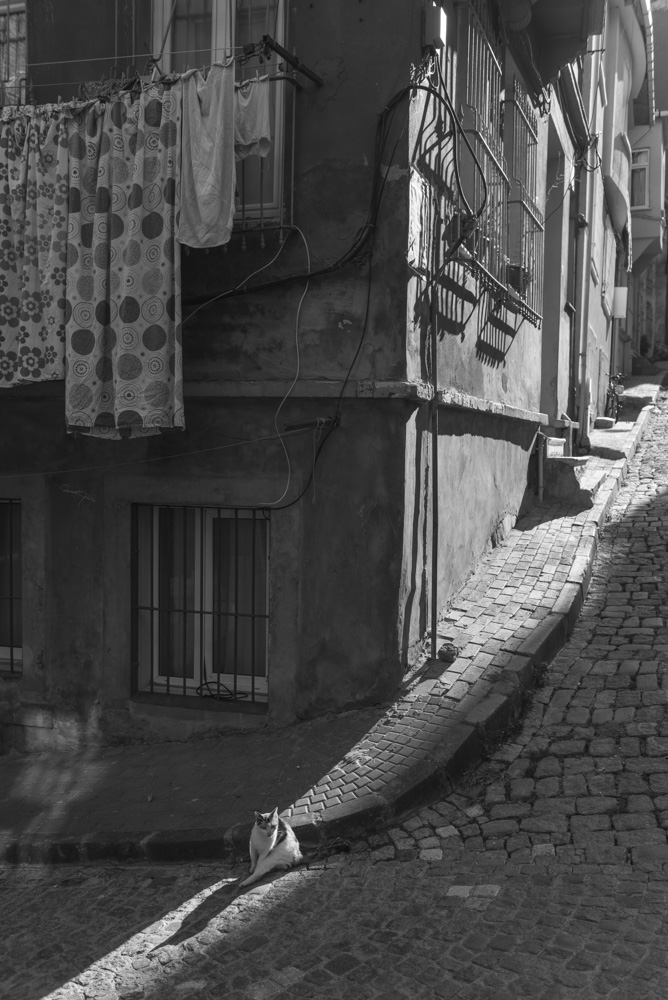
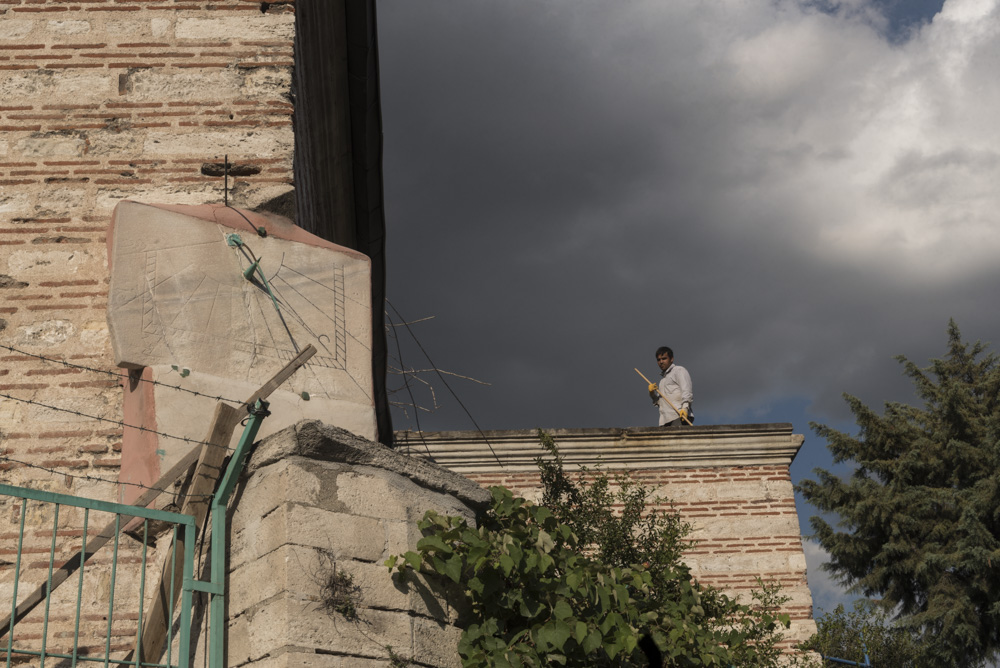
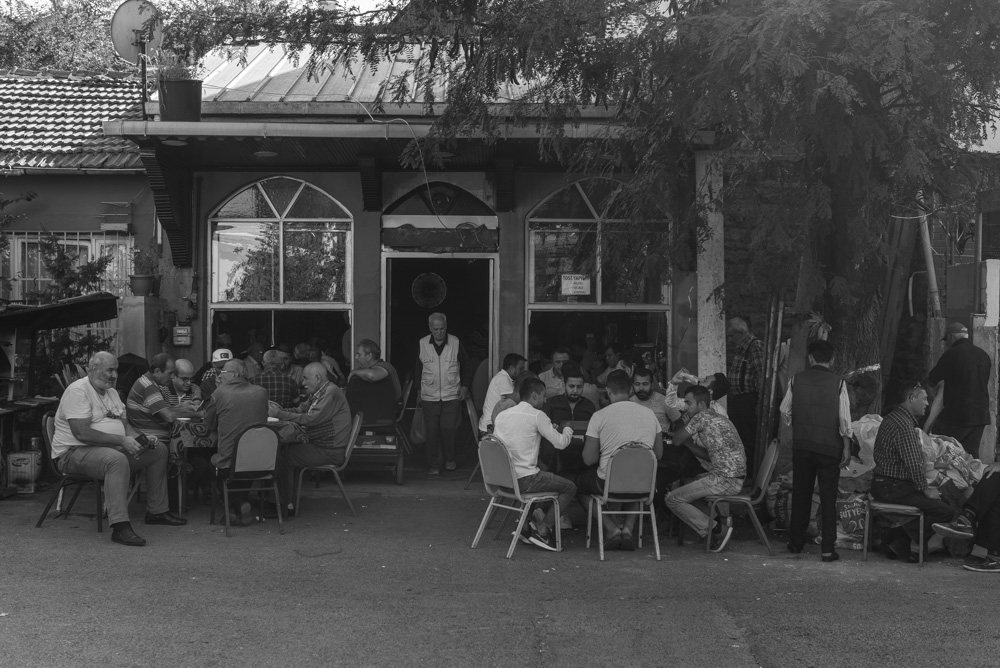
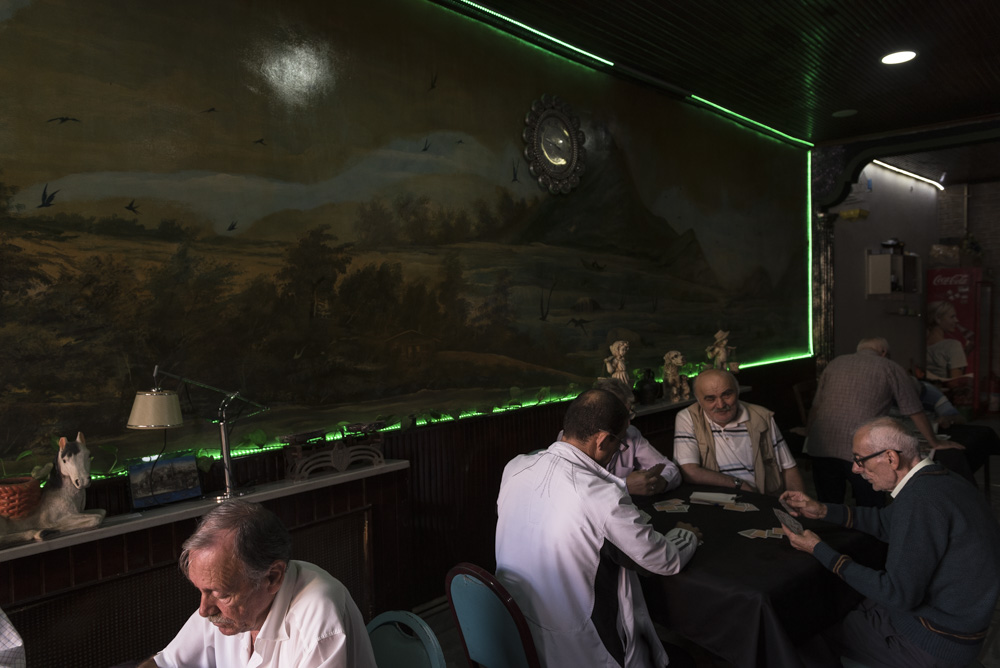
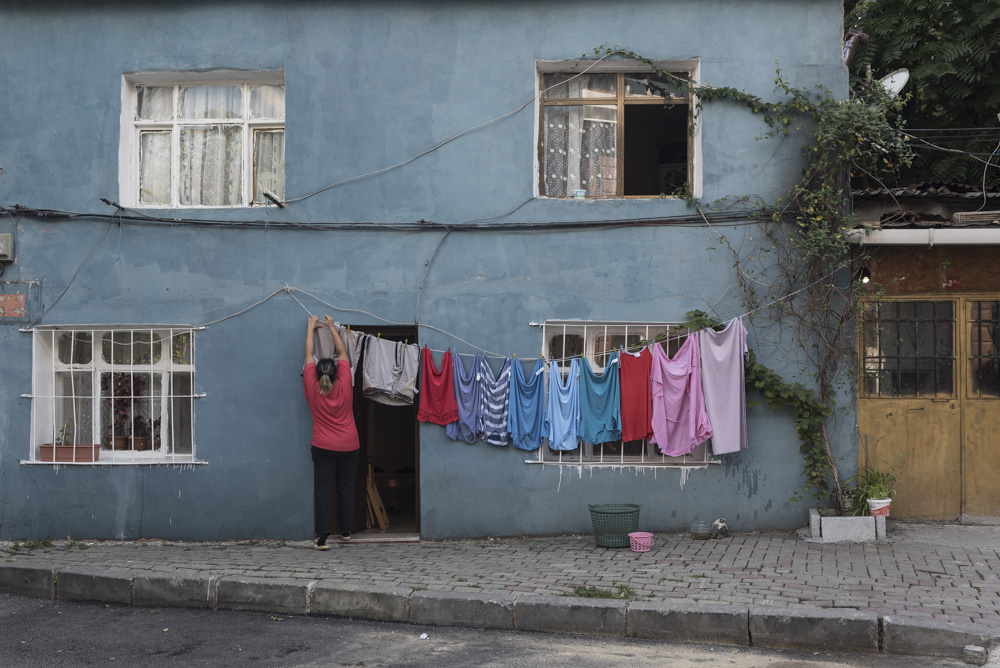
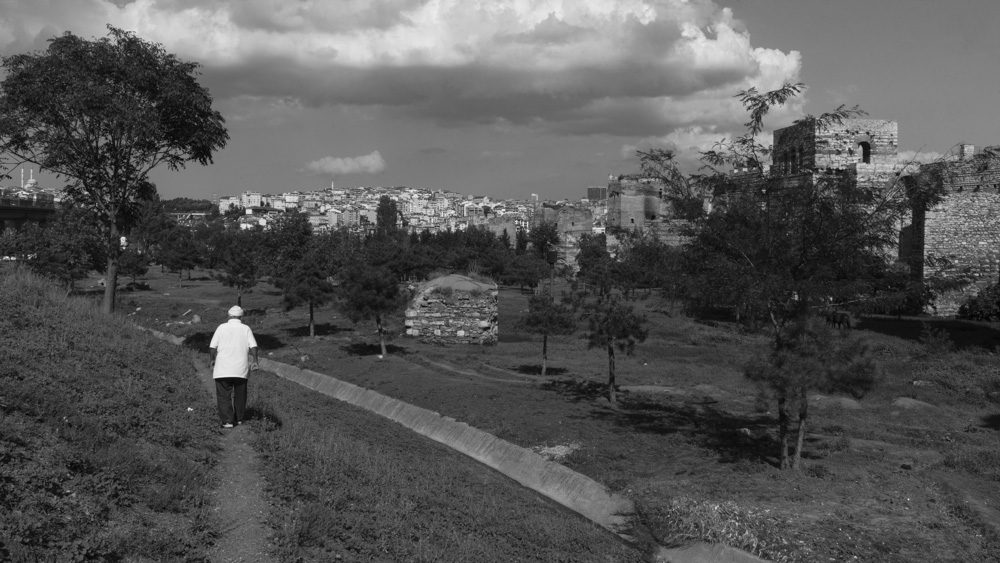
Thanks to artist and photographer Timurtaş Onan for taking me around and showing little hidden gems.
His website www.timurtasonan.com/en/ and his art gallery in Istanbul at www.istanbul-fotografgalerisi.com/sanatci/
Bosko Petrovic, called Bole – Piroćanac, was born in 1940, and has been working since the age of twelve. As many pottery masters in Serbia, he comes from Pirot, eastern Serbia.
A specific aspect of the Pirot’s school of pottery making is that the potter is positioned next to the wheel (on the right hand side), whilst in other schools across the world potters turn the wheel that sits between their legs.
Bole tells us that he finished the school for the crafts at 16, and took him 4 additional years of apprenticeship to become a master or ‘Majstor’.
In 1956, the business he was working for had to close following the introduction of very large taxes. As many other skilful pottery masters from Pirot, he continued to get contracts across former Yugoslavia and used to work from spring to autumn. In 1966 he opened his first own business in the outskirts of Belgrade, and he was advised to sell at the Kalenic market.
I asked Bole how he could still make pottery at his age. Forty years ago Bole began a daily program of one hour exercise before going to work, following a doctor’s advice. Bole is, indeed, full of energy and strength, and he still works about four hours in the workshop every day.
Bole’s son, Dejan, has taken the workshop over in 1985, and invested in development and research of material and ways of firing the pots.
Bole and Dejan welcomed us at their workshop. After taking the photos we were offered Turkish coffee in beautiful and well-kept house garden. I asked Dejan, father of two daughters, if he has any apprentices keen to learn the art. He reckons that, as it takes about ten years to become a master, it is more convenient for young generation to continue studying at university.
The family business sells at the Kalenic market, in Belgrade.
Their website at http://www.grncar.rs/
The Shepherds Bush Market is more than hundred years old street market and historical landmark within the West London community.
Intrigued by the vibrancy and multicultural dimension of this community of traders, many of whom have been here for generations, this project examines the social history of the market through a comparison between the present and the past of the market and some long-serving traders.
The outcome from this research is diverse. On one hand, it emerges a nostalgic feeling about its best years in the 70s, 80s up to the middle 90s. On the other hand, traders welcome a renovation of the market to help rejuvenate the already vibrant and multicultural area. They hope to bring new diverse businesses and more customers.
There is a general awareness that a collective effort from the community and other parties involved is needed to protect the cultural heritage of the market, quite unique with its long social history.
Ultimately my research makes me wonder, on a more abstract level, how, or whether, historical landmarks could coexist with gentrification and other changes in the consumer world.
For this project, I have asked the people portrayed to let me have an old photograph of them made at the market, in order to compare “Now and Then”. Old photographs, either from the traders or from the archive, are displayed on the right hand side.
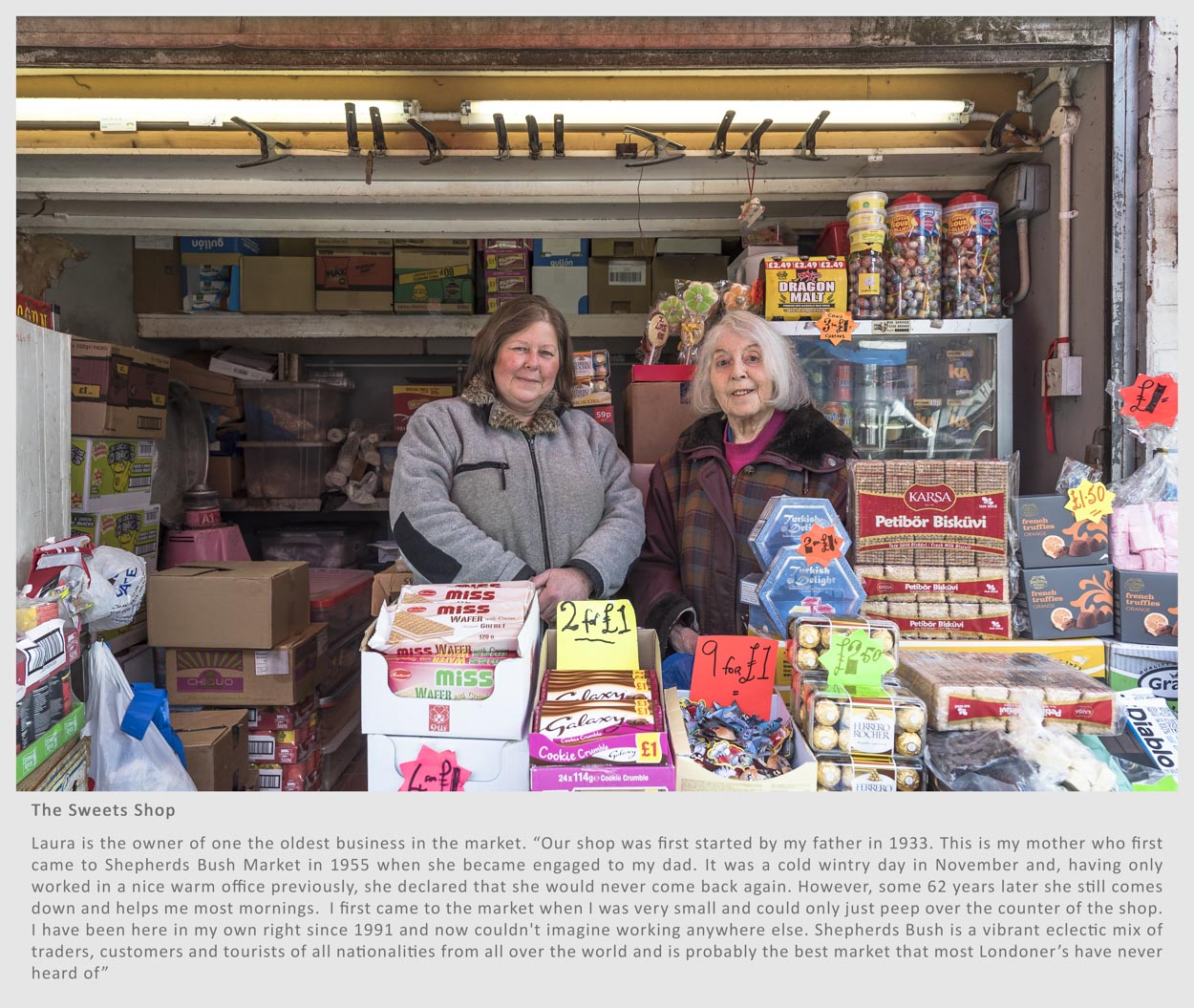
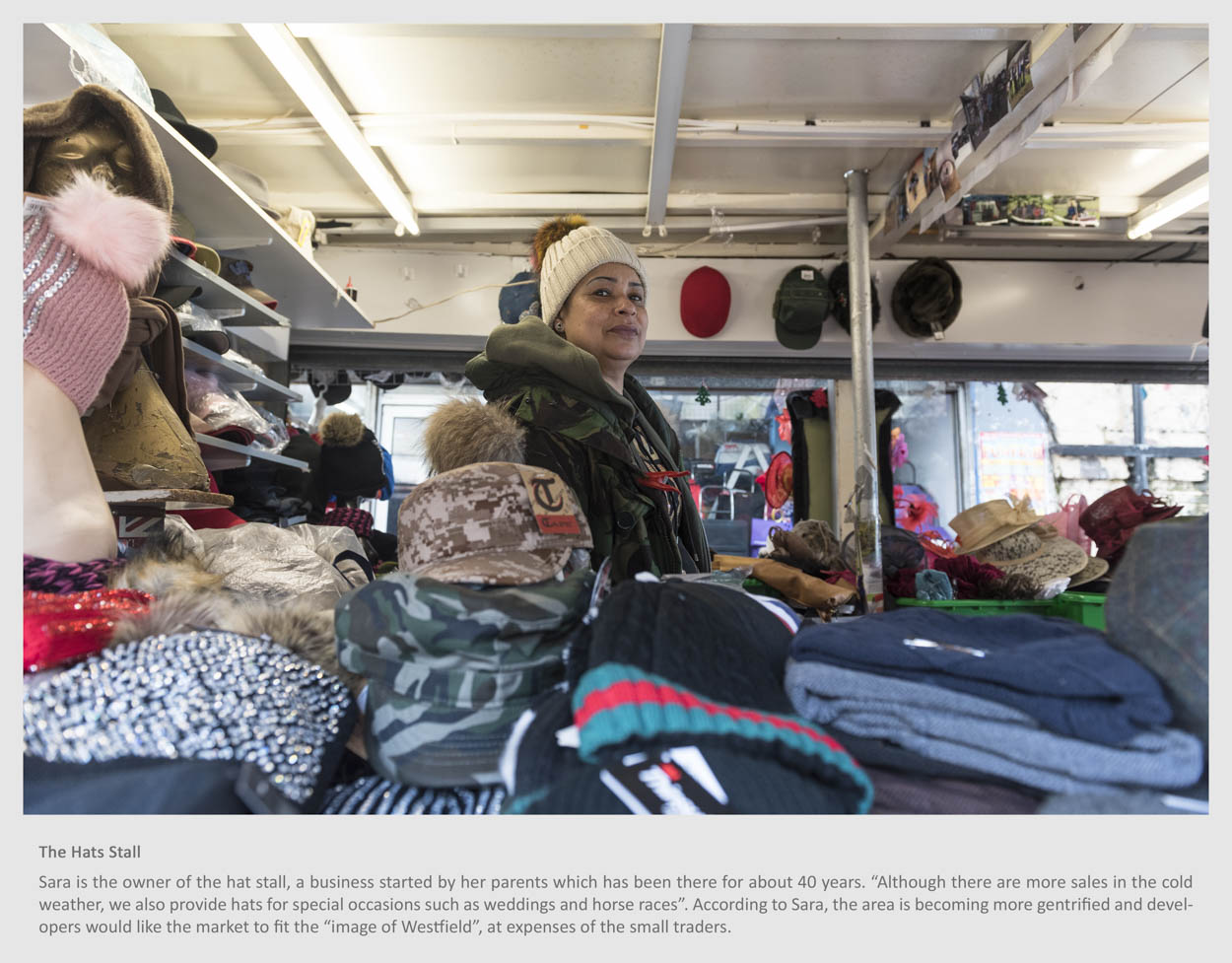
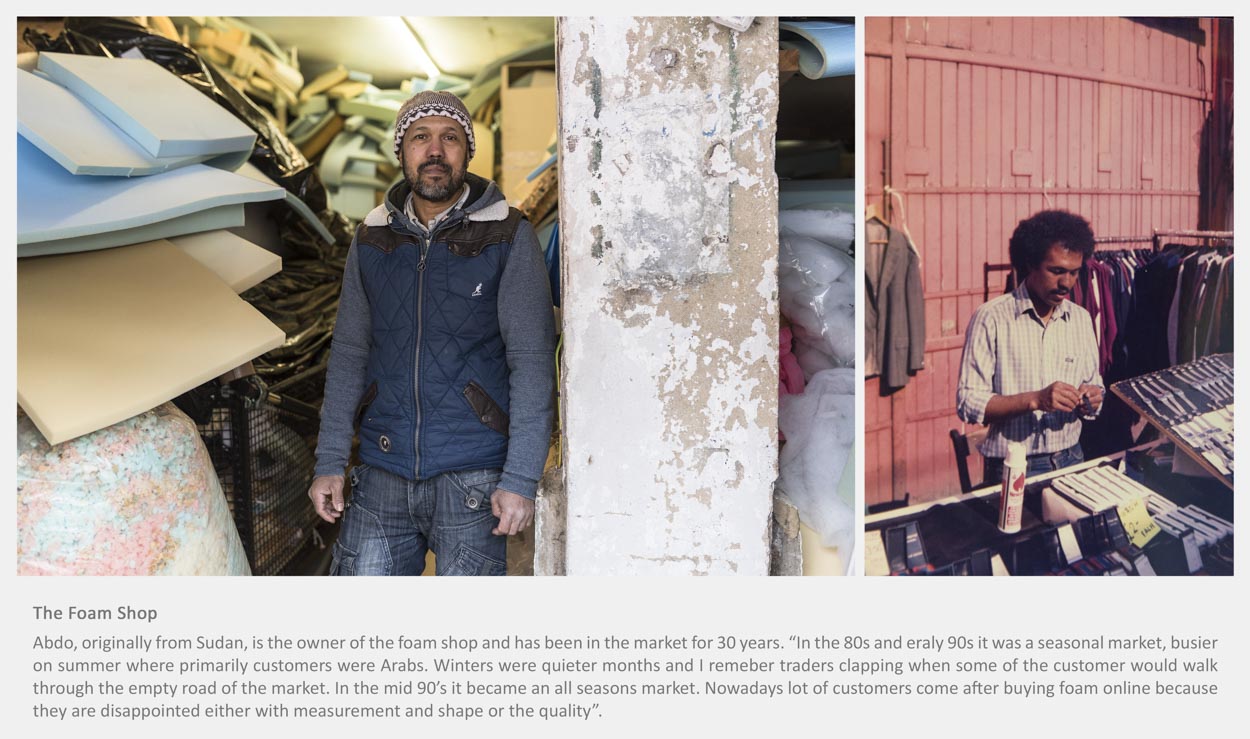
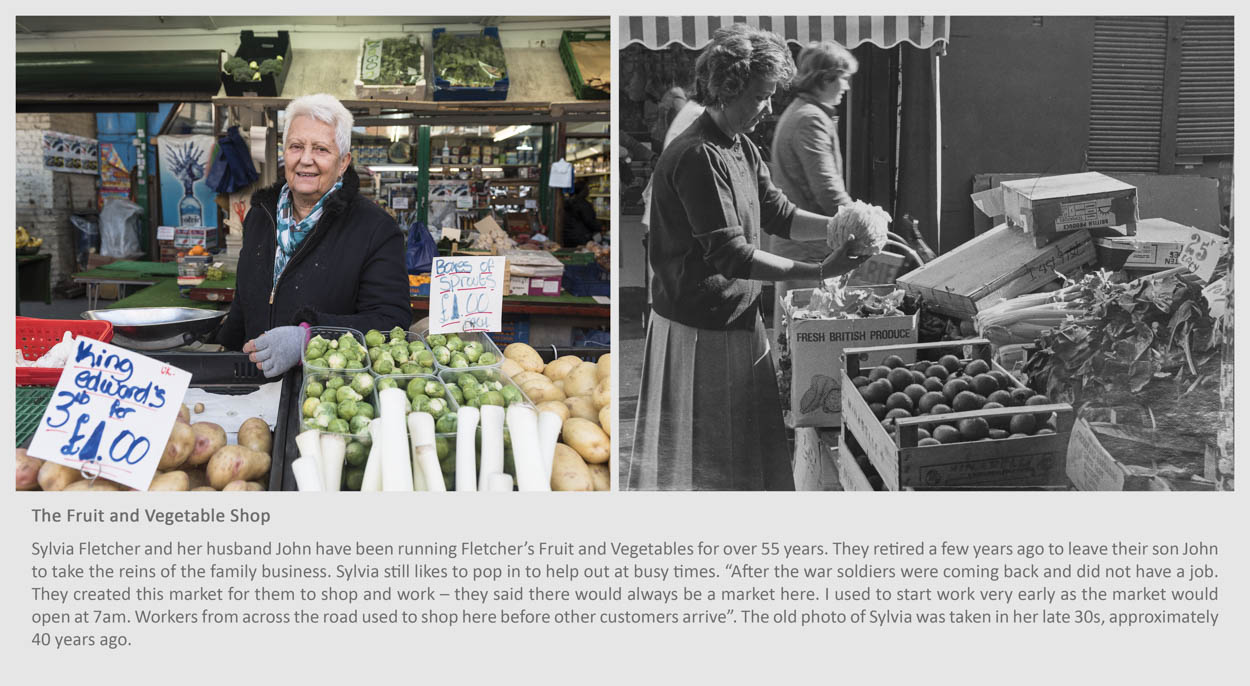
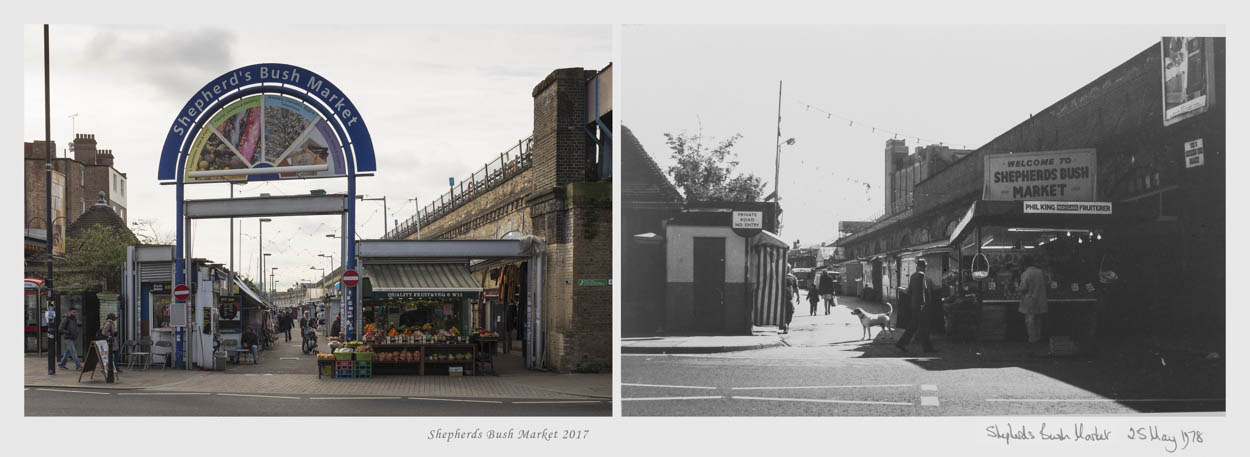
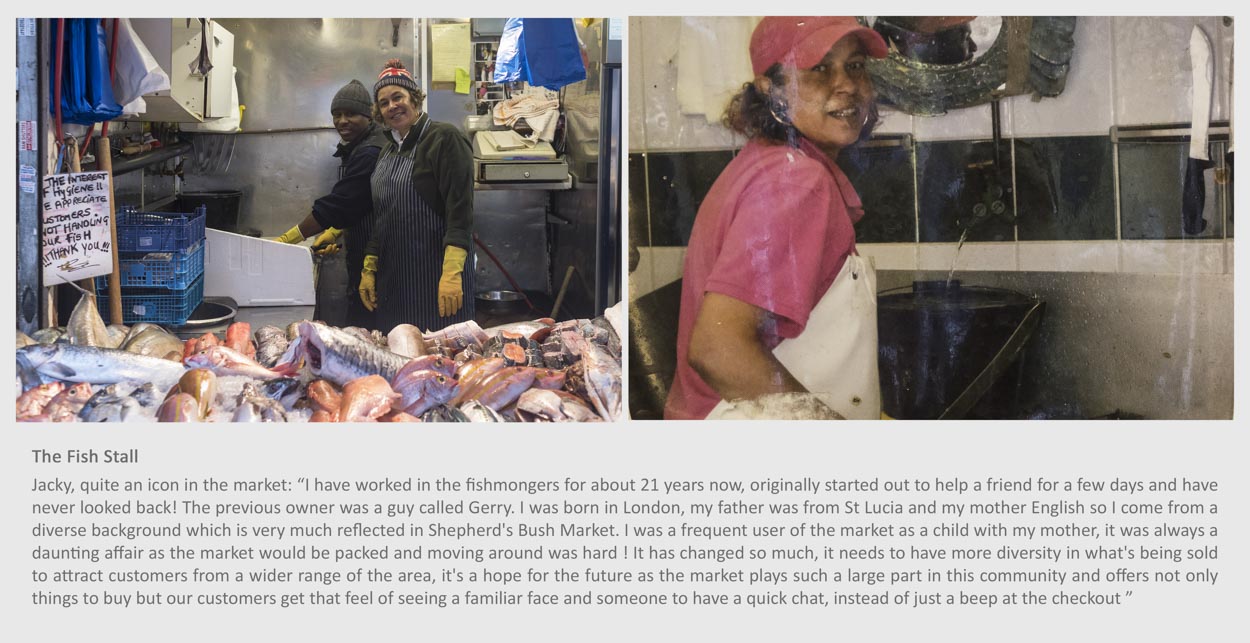
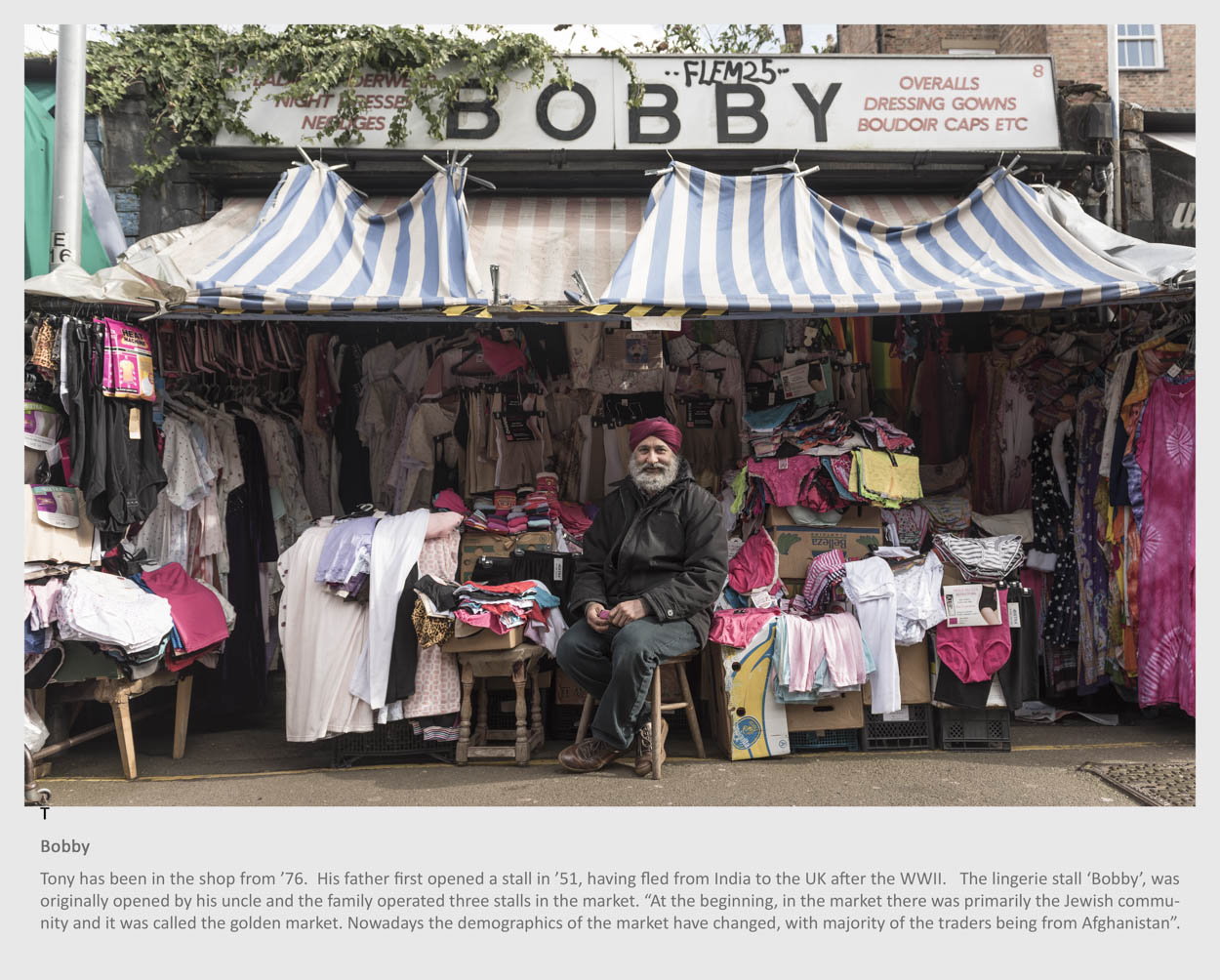
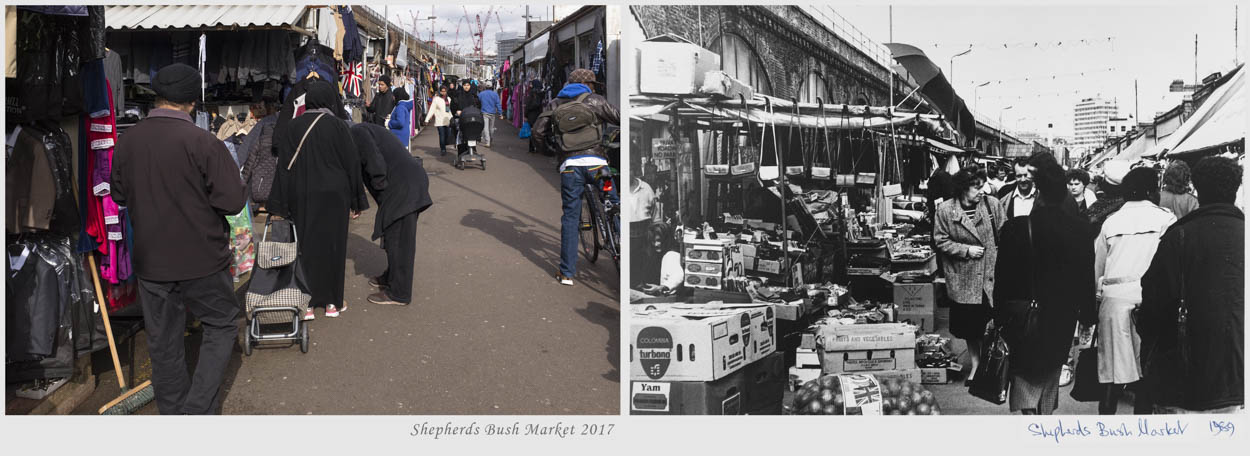
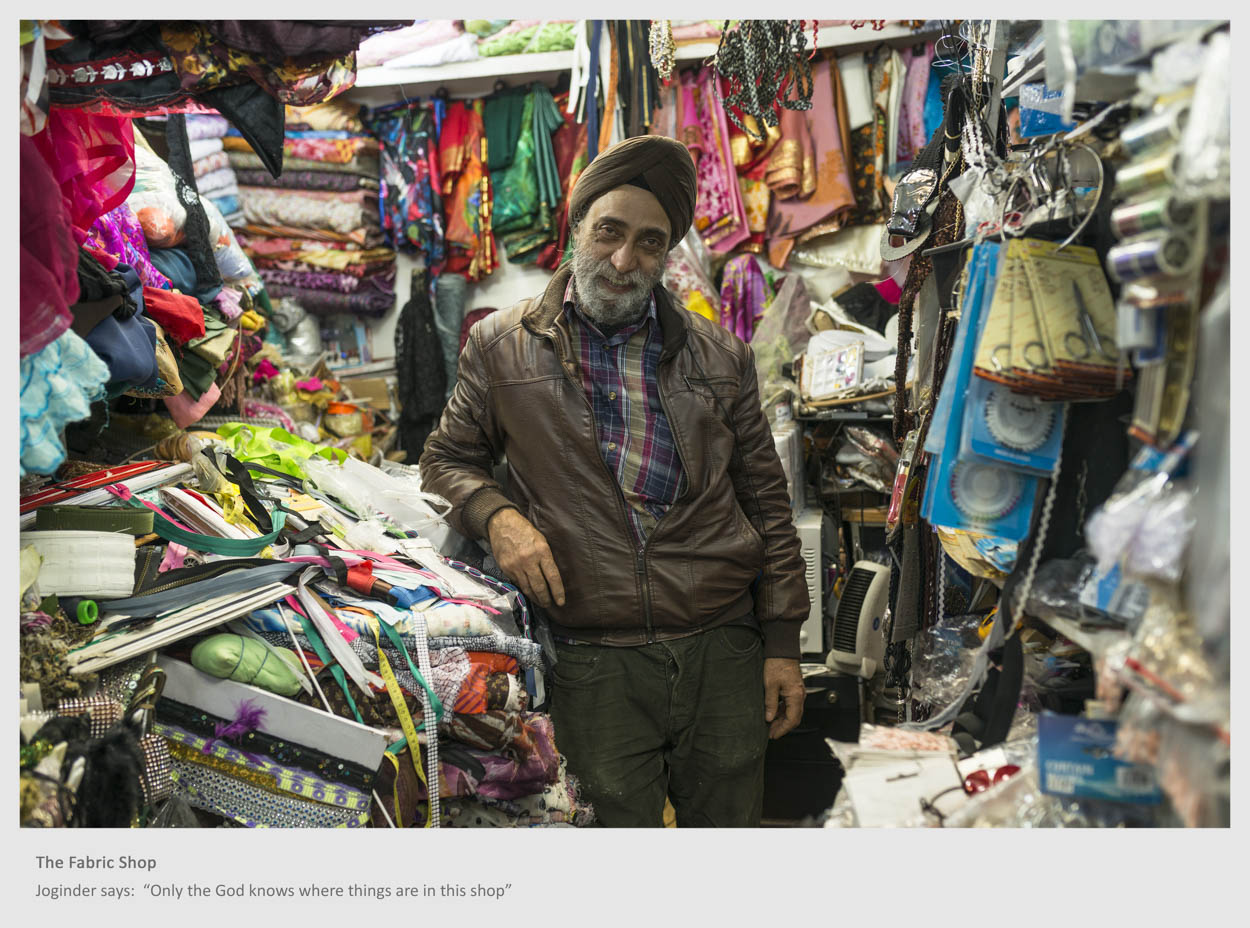
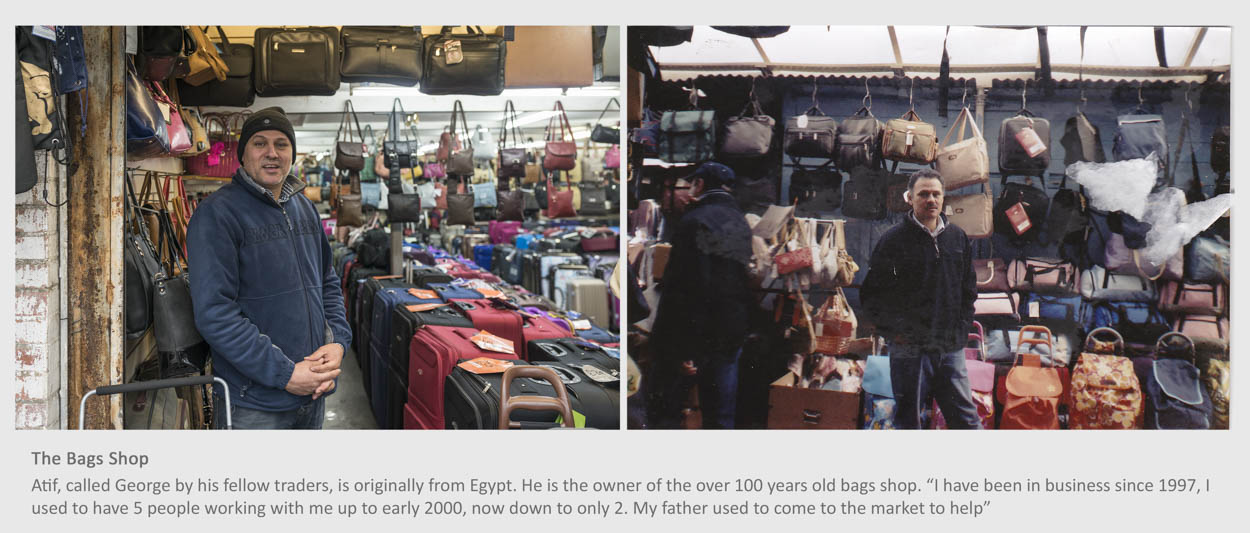
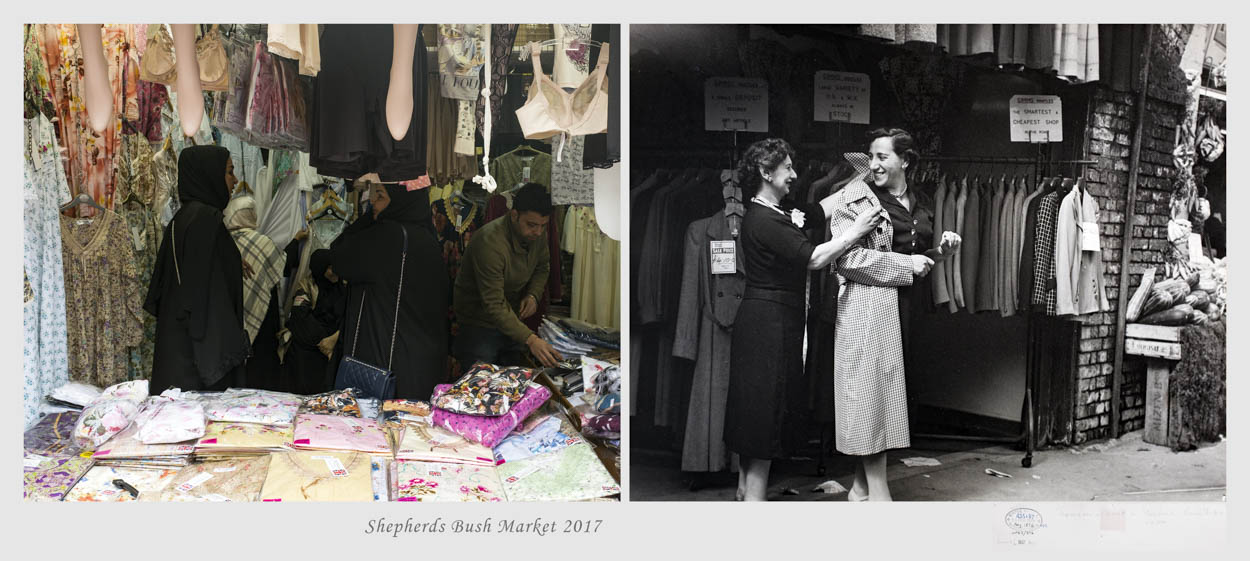
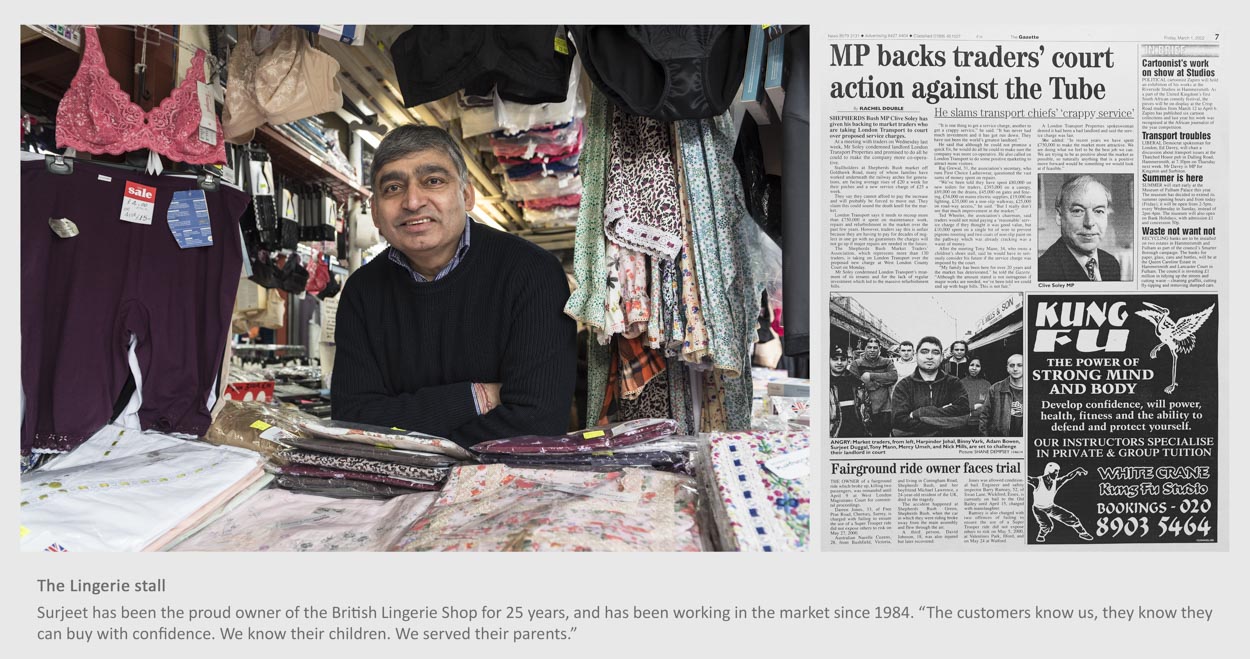
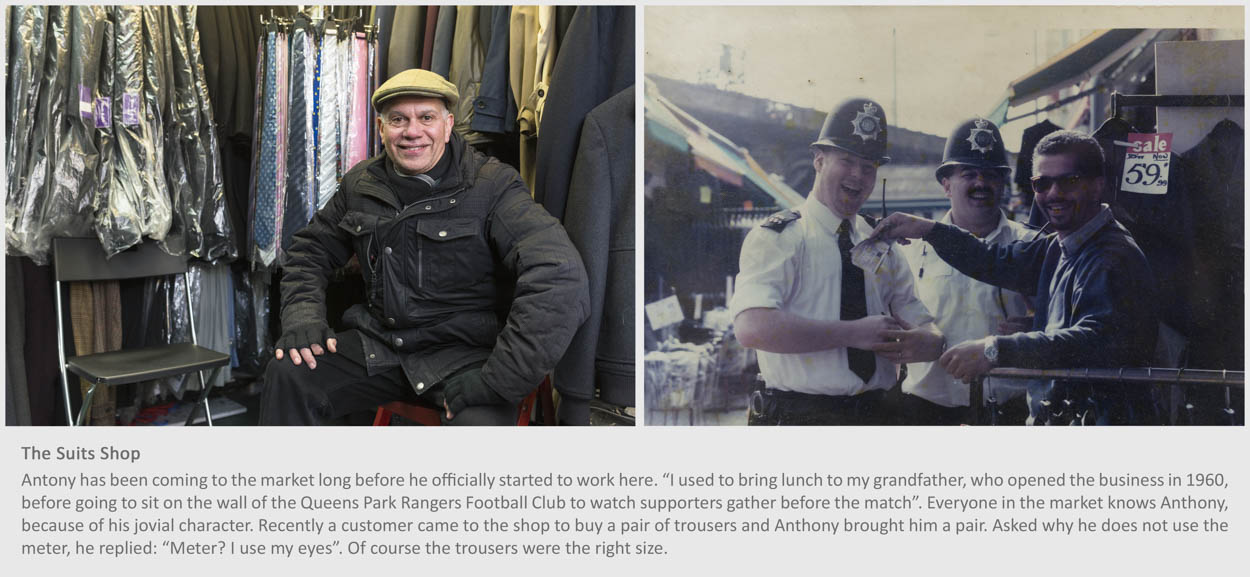
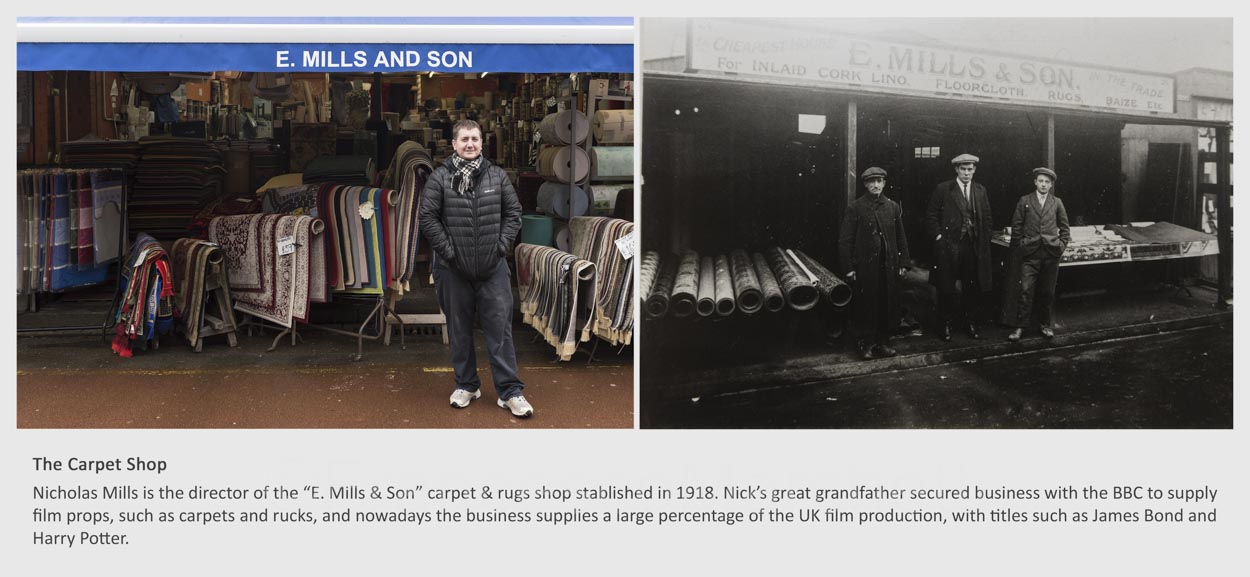
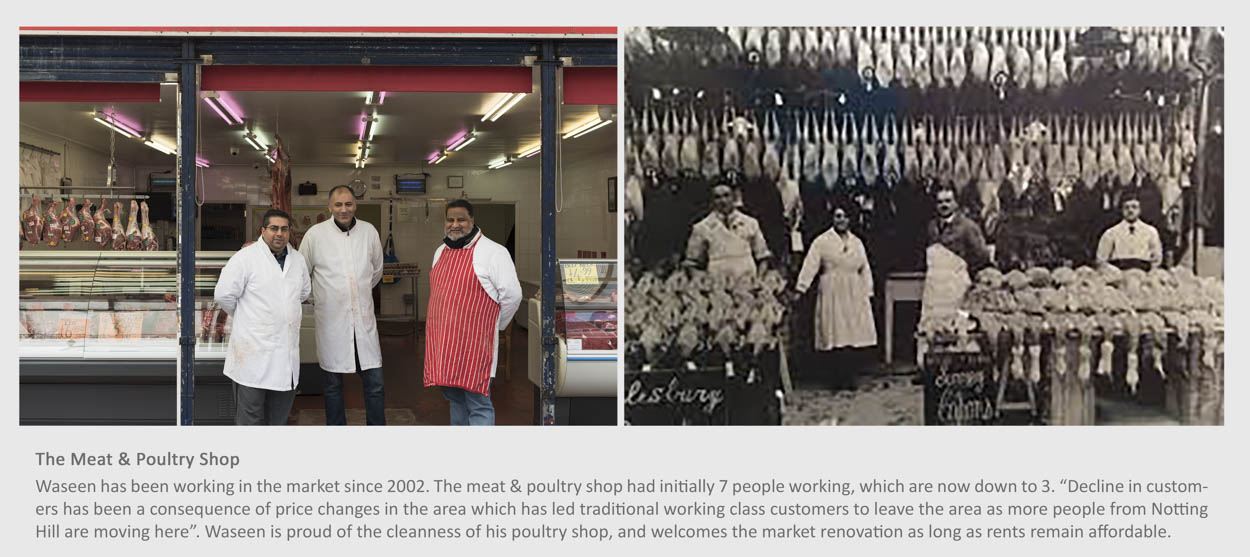
Jackie: “it’s a hope for the future as the market plays such a large part in this community and offers not only things to buy but our customers get that feel of seeing a familiar face and someone to have a quick chat , instead of just a beep at the checkout”
Laura: “Shepherds Bush is a vibrant eclectic mix of traders, customers and tourists of all nationalities from all over the world and is probably the best market that most Londoner’s have never heard of”
Old photographs of the market are copyrighted material from the Hammersmith & Fulham local studies & archives (LBHF).
Huge thanks to all traders who kindly provided me with their old personal photographs.
Francesco
Looking for old craft places in Belgrade, I have passed by this little watch repair shop located in Stari Grad.
Petar Pavic, an expert in the art of repairing old mechanical watches, is the 3rd generation running this business having decided to take on the tradition started by his grandfather in 1948. He currently works with his mother, not present at the moment of our visit, who offers a complete watch restoration.
When I was invited behind the counter, my attention was caught by the amount of watches, small parts, working tool and cards scattered on the table. Petar, indeed, feels very comfortable in his own working environment, as he remembers where to find things and the content of each little container and drawer.
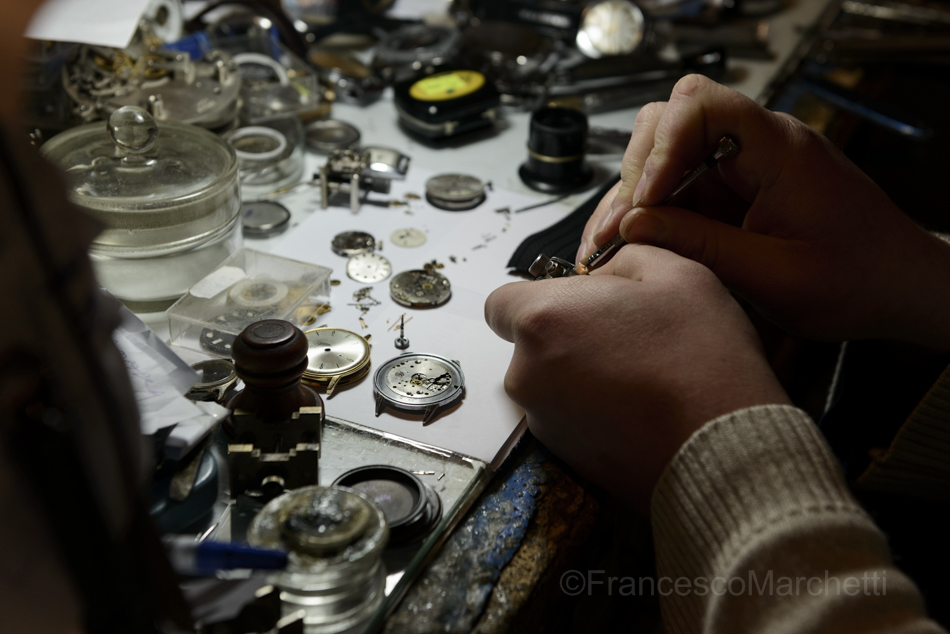
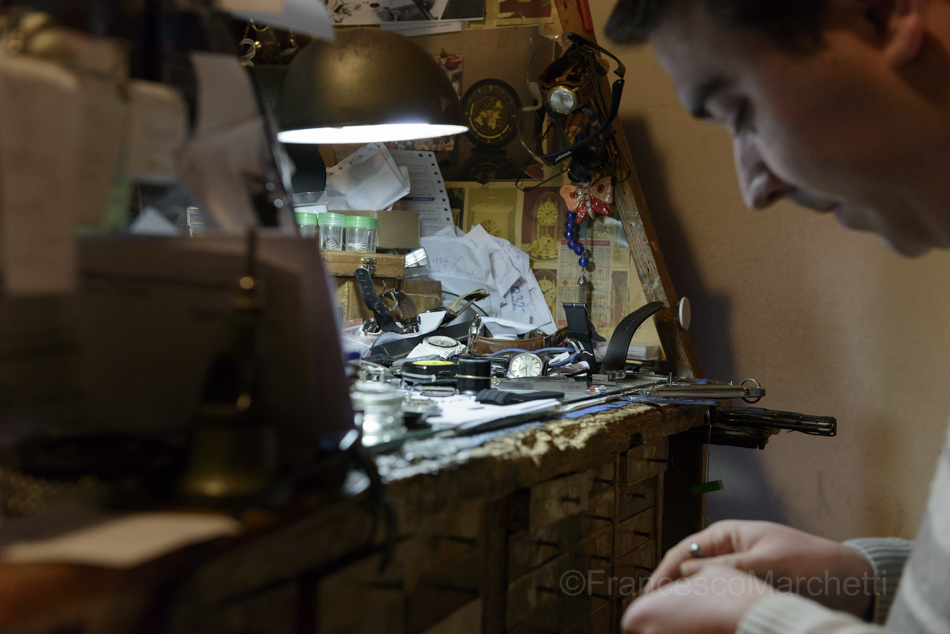
During the short time I have spent in the shop, there was a constant stream of customers from all generations, and Petar’s approach to work was very responsive and rapid.
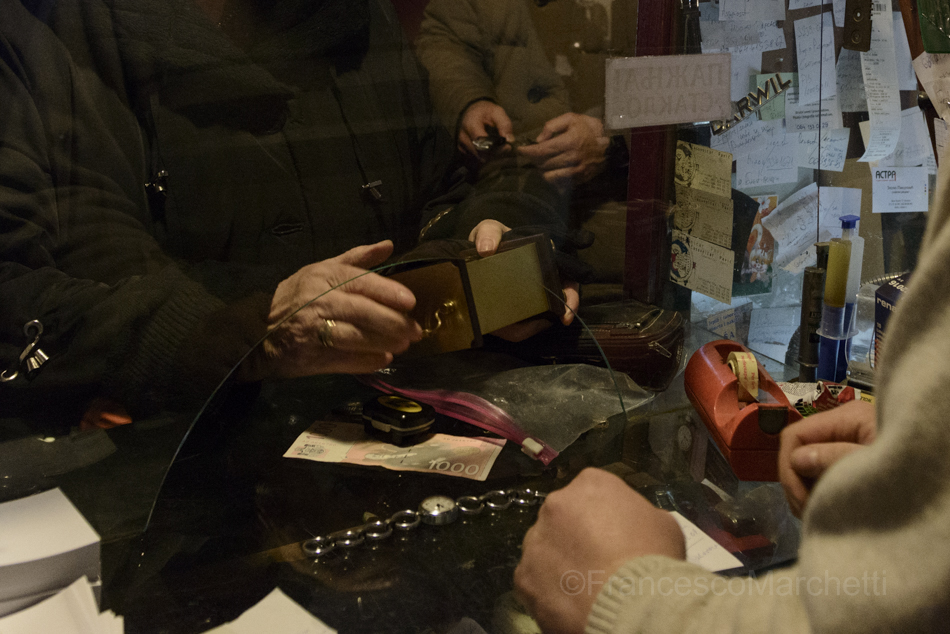
Not only Petar is equipped to repair almost any type of mechanical watch, but he also creates the tools to make parts he needs to fix vintage and rare pieces. Some of the oldest watches he repaired were a 220 years old and made in the Netherlands, a 150 years old satin wall clock, Russian “Zvezda“ from the 2nd Word War. Wall and standing clocks are another of Petar’s passion, and he has some examples of “Gustav Becker” clocks from 1865. These days he finds very interesting the “Junghans” German clocks, often seen in Belgrade. Junghans, once a dominant force, was producing 100 clocks per day in 1870 and in 1903 was the largest clock maker in the world. In 1930, “Gustav Becker” a successful German clock maker well known in Paris, Sydney, Berlin and Amsterdam, merged with Junghans.
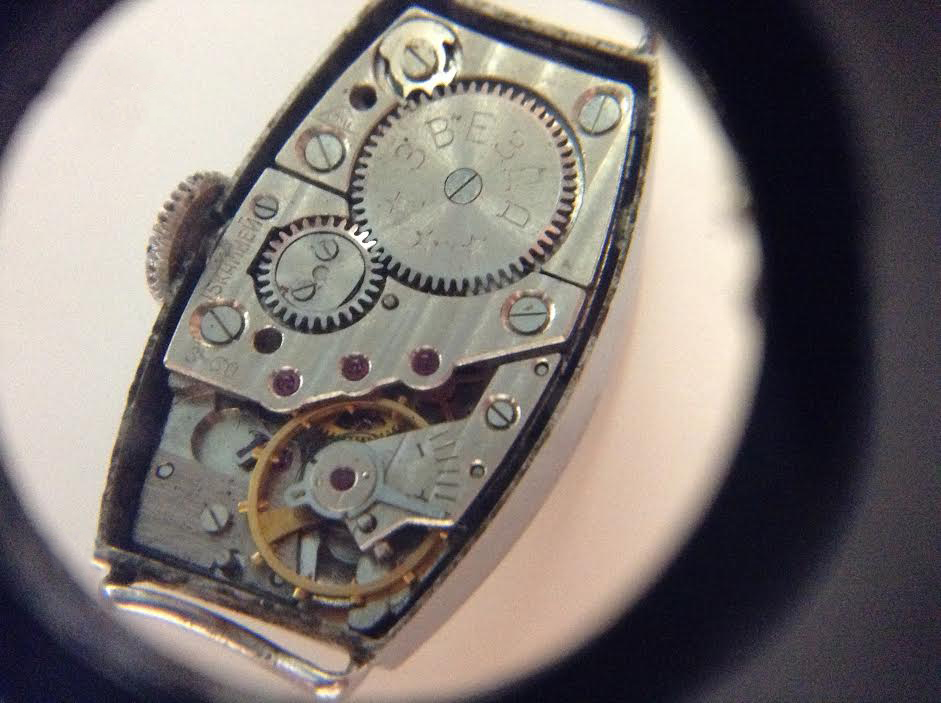
Image above courtesy of Petar Pavic, a Zvezda watch inside
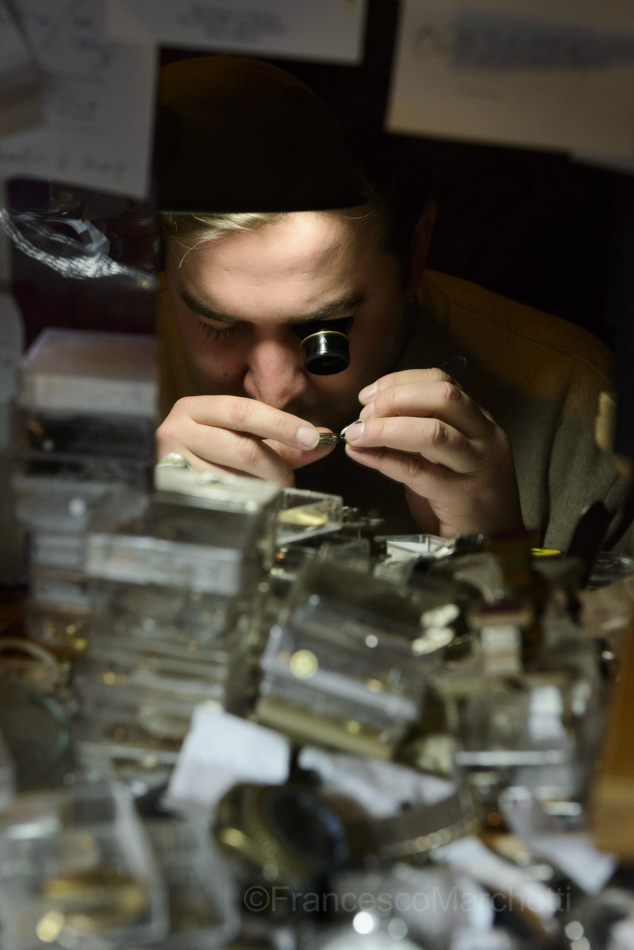
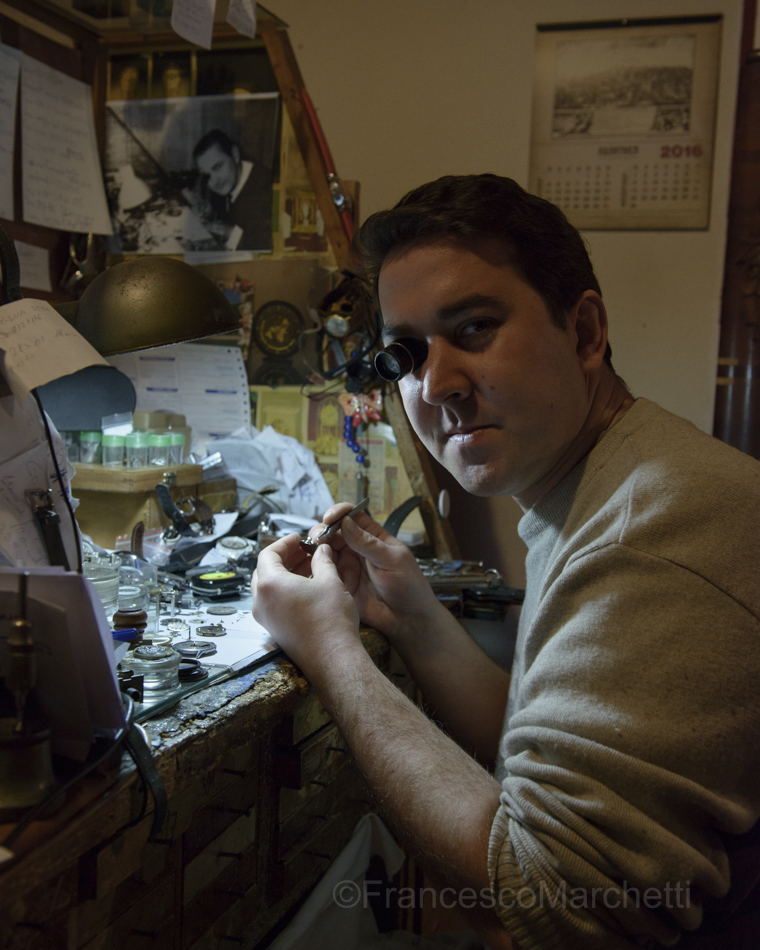
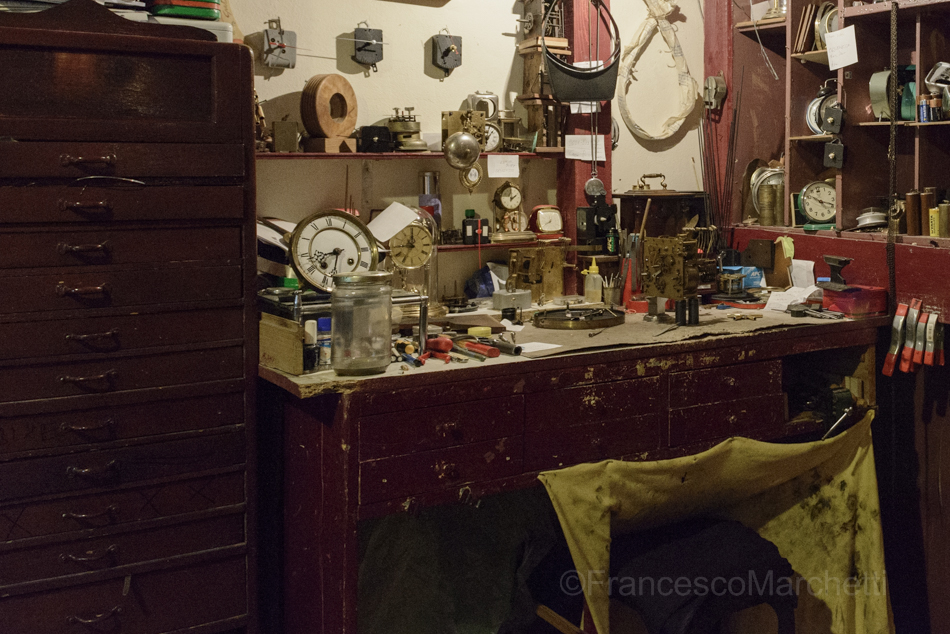
Watch restauration demands a far more intimate knowledge of the techniques used in traditional horology, and a greater experience in the aesthetic and mechanical design used.
I learnt that nowadays it is not easy to come by a school that teaches the skills needed to repair watches, as it is cheaper to replace the all faulty part rather than fix it. This makes Petar’s job more unique and hard to learn, and makes his dedication and passion to this craft another example where traditional skills, knowledge and passion are transmitted across generation.
Časovničar Pavić,12a Cetinjska, Stari Grad, Beolgrade, Serbia
Francesco
Another great discovery in the heart of Belgrade, located in Gospodar Jevremova 63, Dorcol.
A family own boutique bookbinder (Knjigovezac), run by Dusan and his father Svetislav, offering traditional and contemporary bookbinding, preservation and conservation of printed material and box making. They use only mechanical machines, some over 100 years old which require minimal maintenance.
Svetislav took over this shop in 2003 from the previous owner, and we know that the business existed at this location from 1914, as an old receipt was recently brought by a customer.
Svetislav has a vast experience with conservation of manuscripts having worked for the University Library “Svetozar Markovic” and the National Library, and he was awarded in 2005 as best bookbinder by The Belgrade City Library.
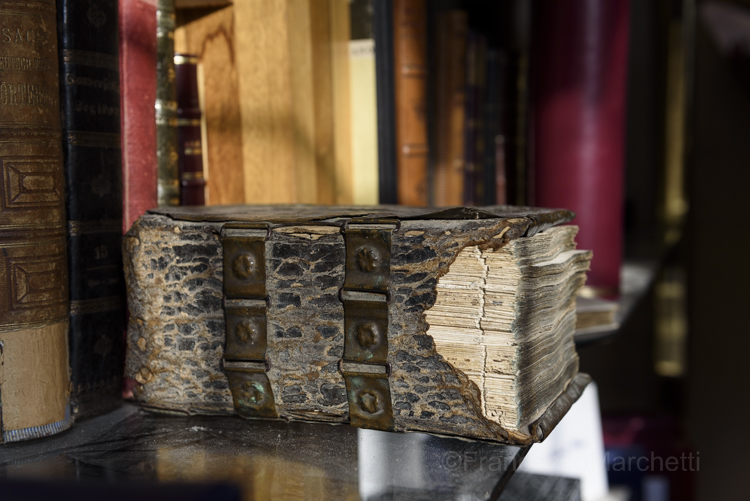
Slovakian book from 1861
He made bespoke tools to create leather binding for Serbian Cyrillic books from the 12th to 19th century, and uses his graphical skills to create templates for the book engraving in order to preserve precious collections.
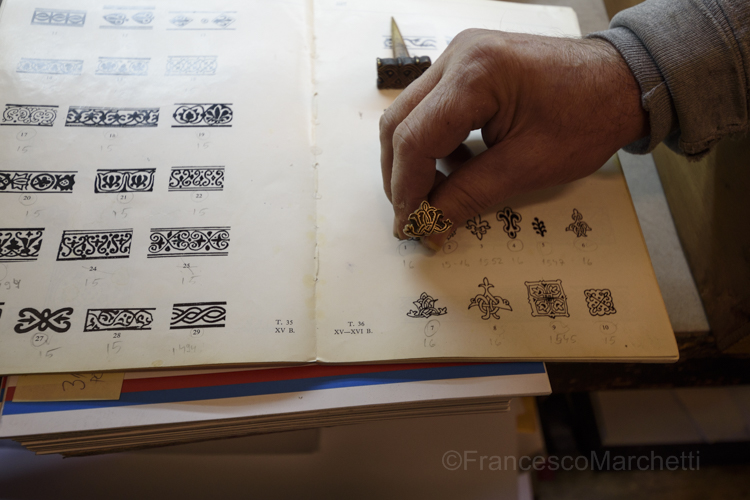
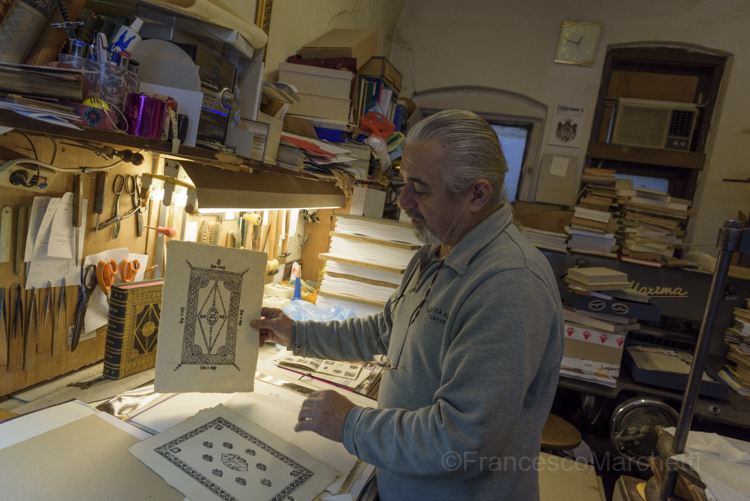
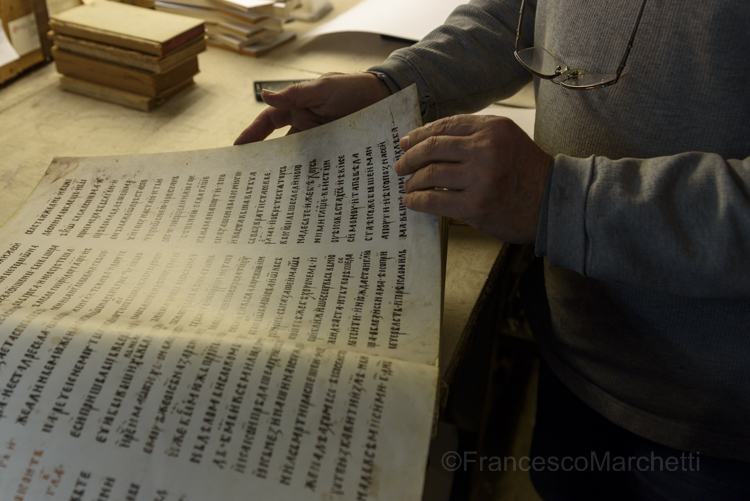
The reproduction of 12th century Serbian manuscript
Dusan and Svetislav had a number of important commissions such as the leather binding of “The Mountain Wreath” book and its box, a masterpiece of Montenegrin literature, written by poet Petar II Petrović-Njegoš.

This is only a small part of the craft and art skills, as they are constantly requested to produce beautiful leather cases by embassies and private customers. Part of their work are cases for swords for various Head of States.
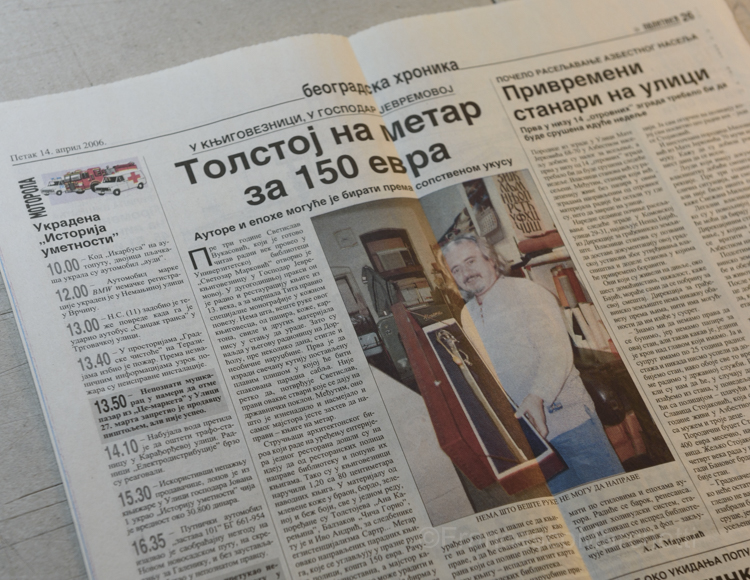
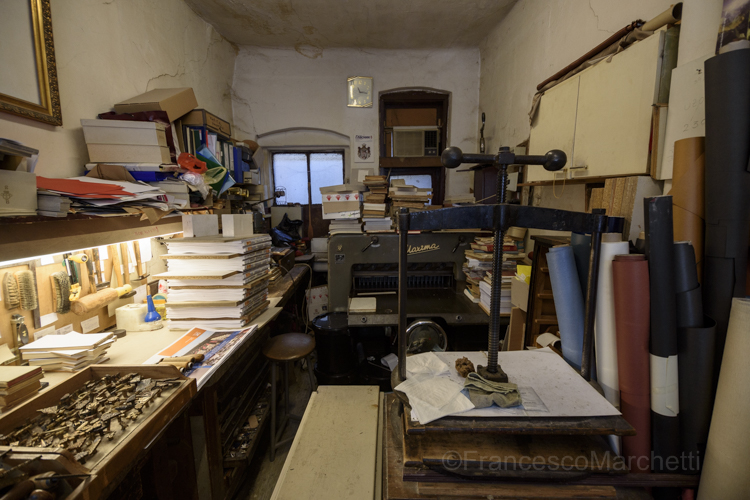
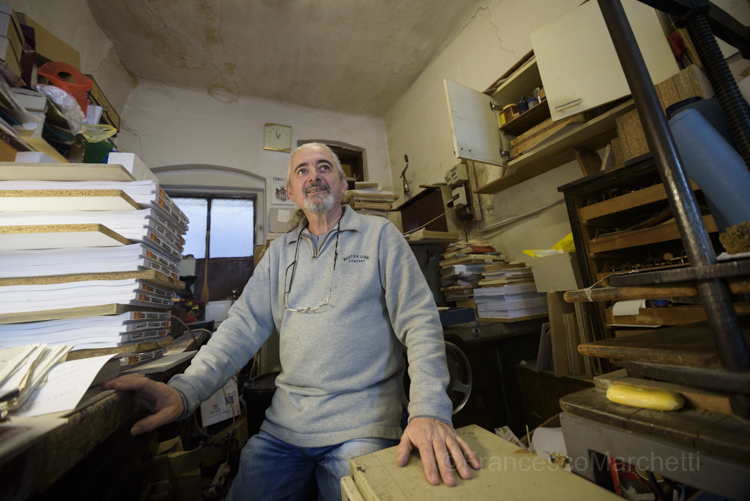
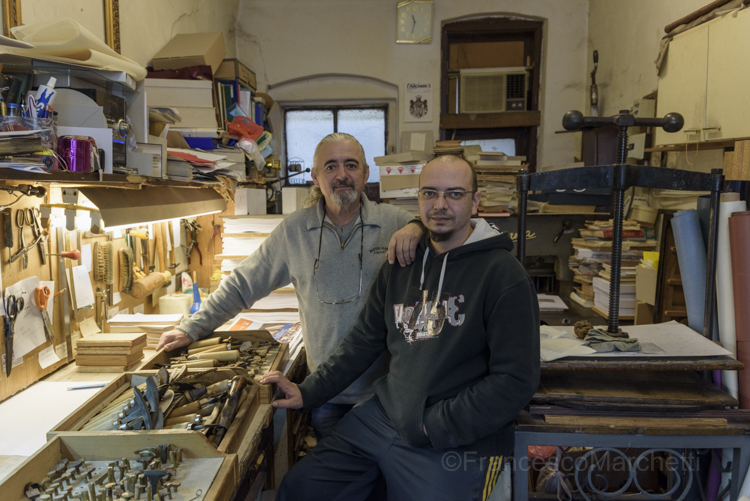
I was fascinated by this traditional craft because of its importance in preserving the heritage, and I was delighted to see the traditional skills and knowledge being passes from father to son.
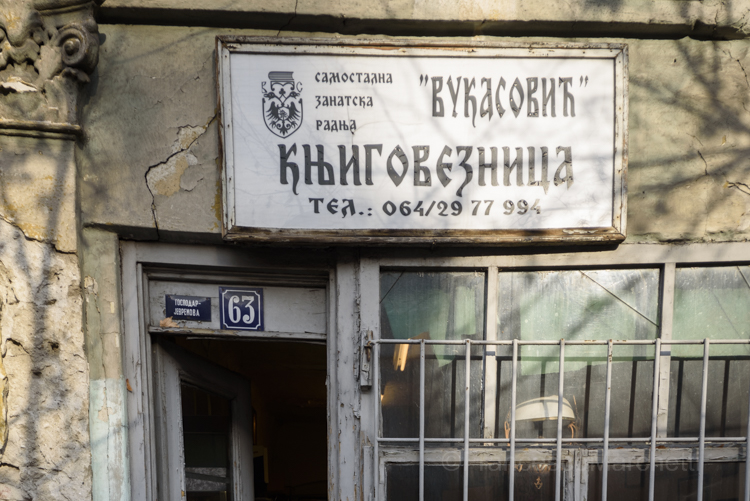
KNJIGOVEZNICA VUKASOVIC ,Gospodar Jevremova 63, Dorcol, Belgrade, Serbia
Francesco
“Smell is a patent wizard that transports you across the thousands of miles and all the years you have lived…” Helen Keller
During my visits to Belgrade, I often pass by this little boutique perfumery located in Kralja Petra 75. The vintage look of products and photos on display romantically tell the story of the shop from the old days, and made me curious about this place and its owner.
The business, run by Nenad Jovanov, originates back from the beginning of 1941, when Nenad’s uncle opened a perfumery shop, at the time called “Djurdjevak” (meaning Lilly of the Valley), and it was joined by Nenad’s father few years later. Since then the shop changed its name several times, to “L’Amour” and eventually “Sava” when the business moved to the current site in Dorcol.
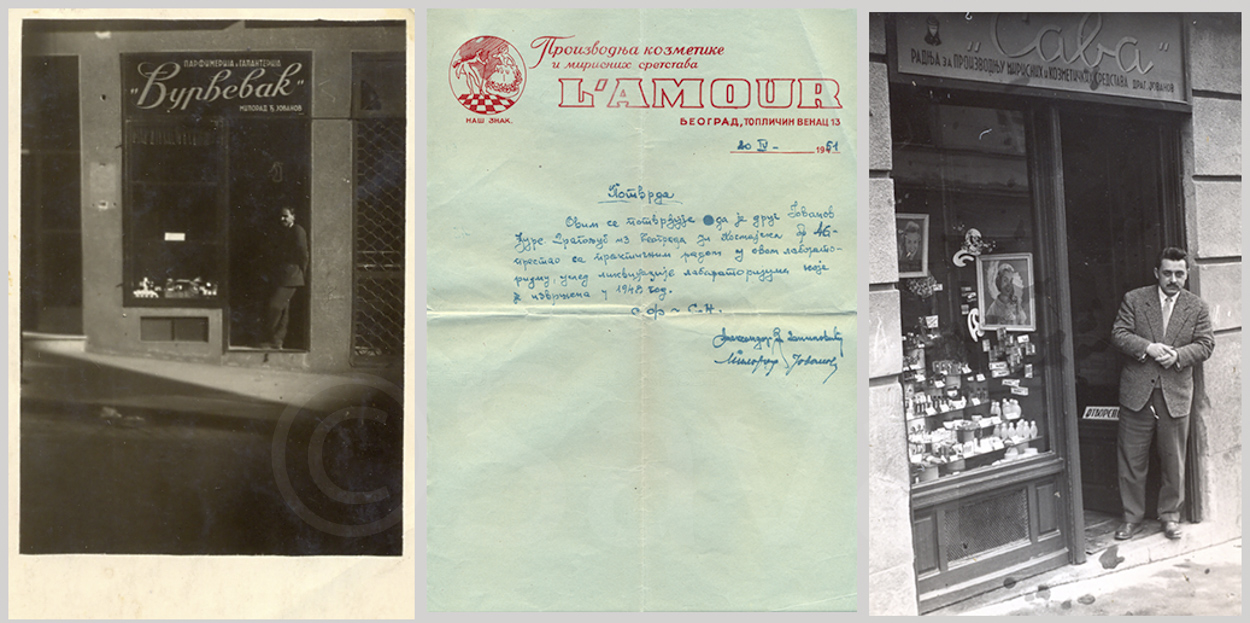
Photos from Nenad’s family archive, ©Nenad Jovanov
As many other properties in the former Yugoslavia, the business was nationalised during the communist era but eventually was returned to the same family so they could continue to run it.
Decades ago the shop used to be advertised with the leaflet like this, created from the slide used as advertised material in the cinema before the movie would start. The original black and white slide has been hand painted and is still displayed in the shop window. This campaign was made in 1956.
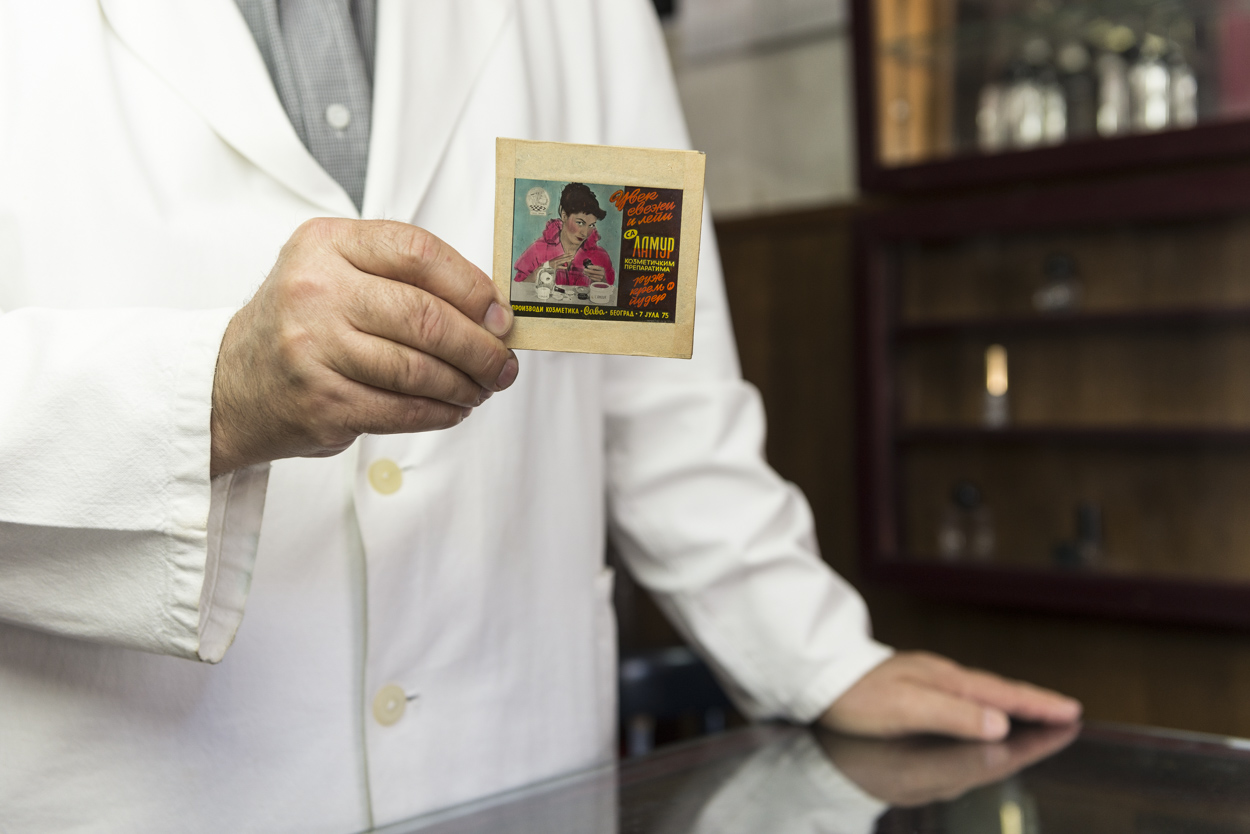
Using leaflet was an alternative to the more expensive advertising on the radio, and the television was not used for this purpose at the time.
Nenad and his father have in common years of working experience in the pharmaceutical industry, having being employed by the same company, Saponia Osjek. Nenad too accepted an offer from Saponija following the father retirement as their Belgrade representative.
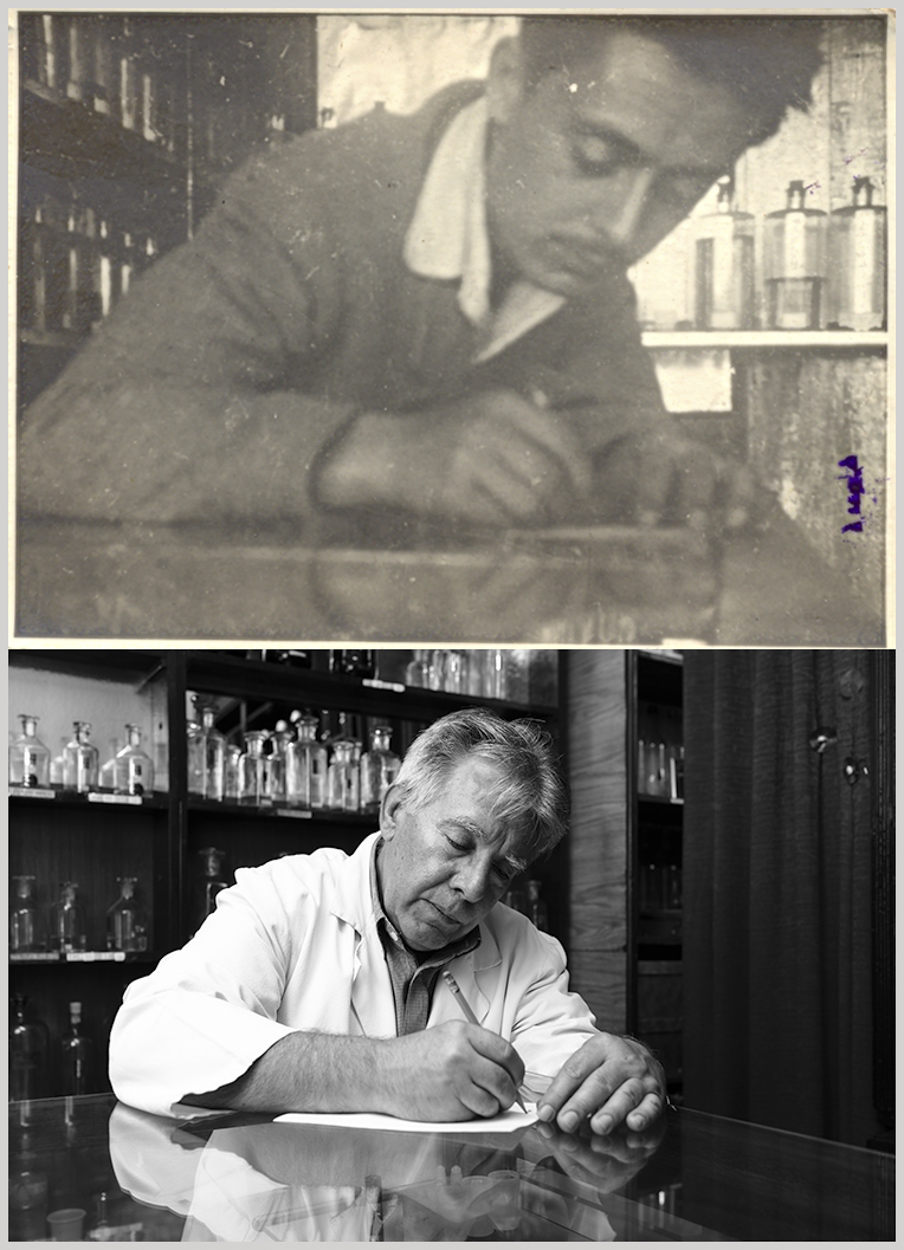
The crumbling of Yugoslavia led Nenad to return to work with his family in the perfumery ‘Sava’ from 1998, and since 2009 he is running the business on his own. Nenad tells us that his mother used to handle the payments quietly sitting in the corner of the shop overlooking the entrance door.
I was invited to assist in the preparation of some perfumes in the back shop labs, a small and intimate world of machinery and tools where Nenad uses his mastery to blend different solutions.
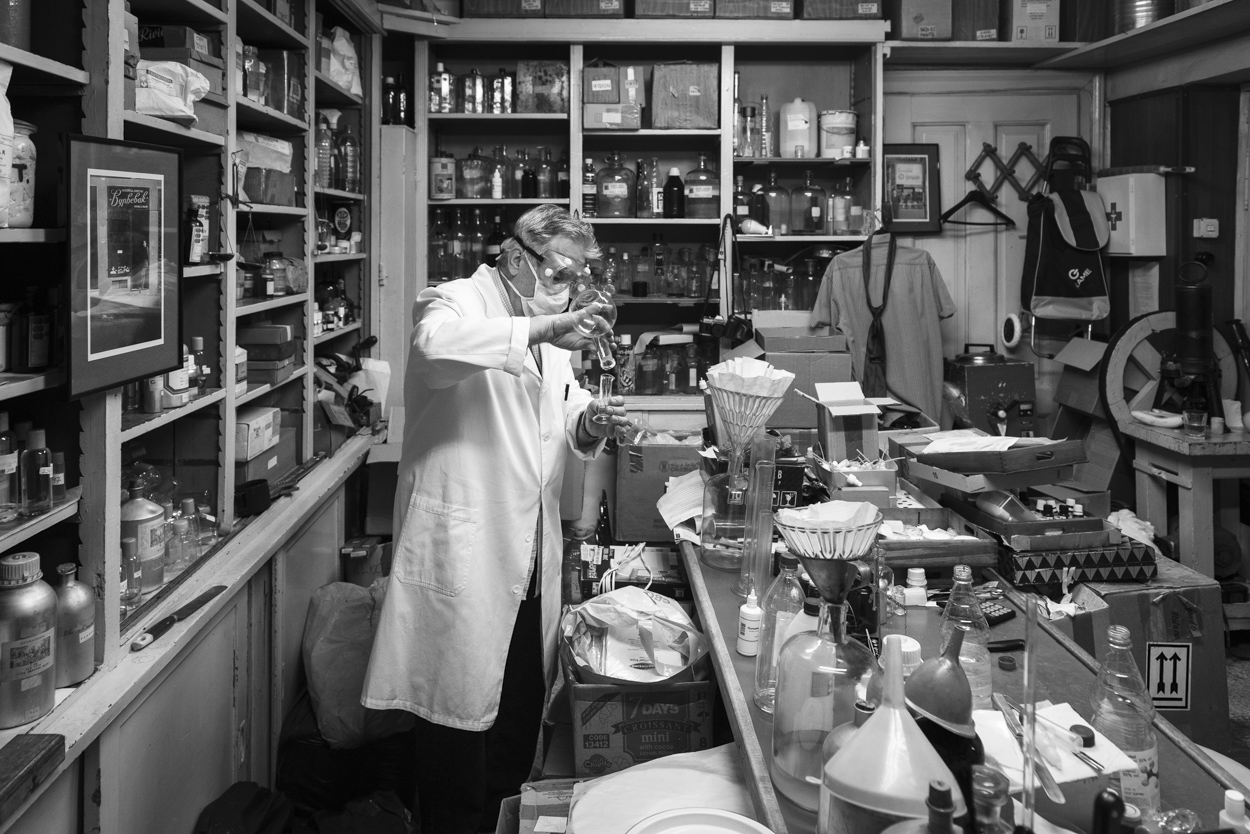
From Nenad’s expertise, dedication and passion, originates “Belgrade Nights”, a perfume created in two versions for ladies and gents, made for the Night of the Museum event (held once a year when the museums in Europe stay opened until midnight). Both fragrances take inspiration from the old trading days when ladies with a flowery scent, would await for the sailors smelling of spices as they were back from exotic locations.
The shop has barely changed since it was opened and it is a place of dear memories, with vintage photos of Nenad’s family on the wall, from old days prior to the World War II.
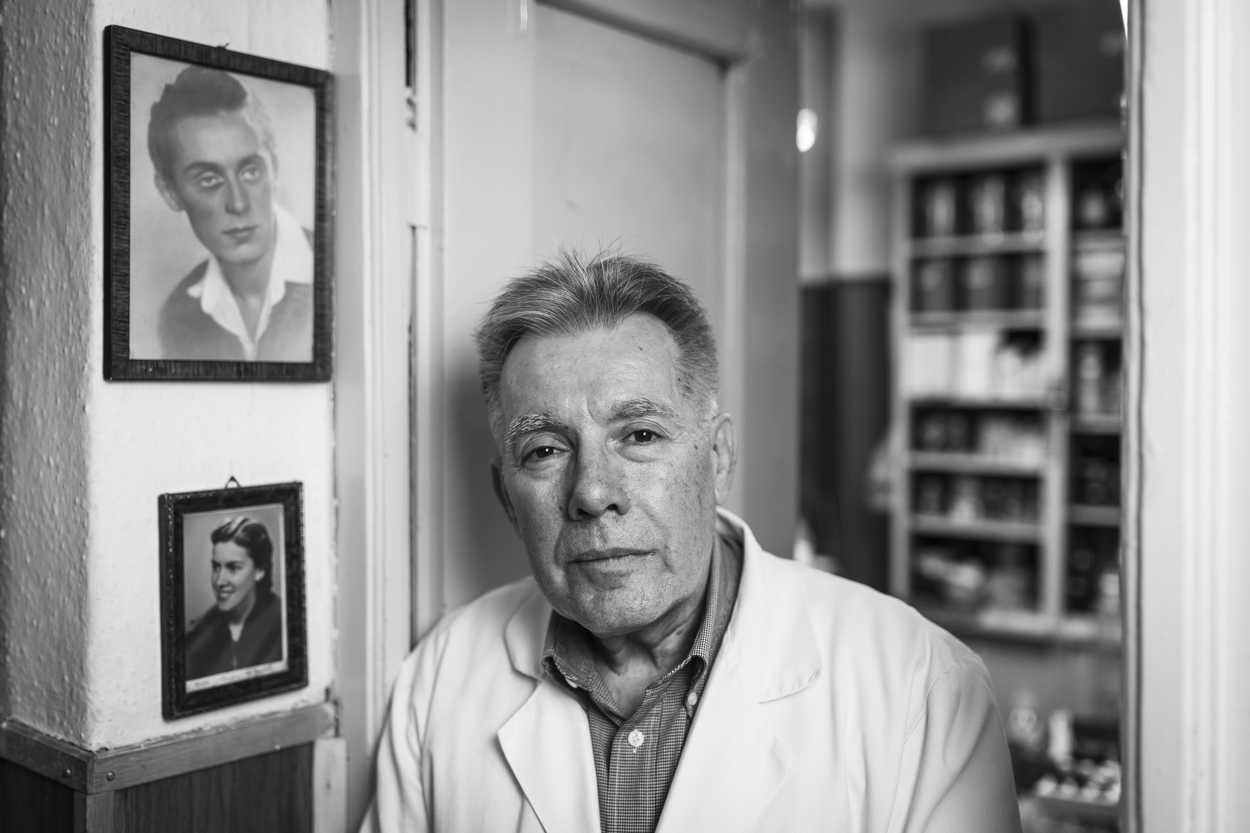
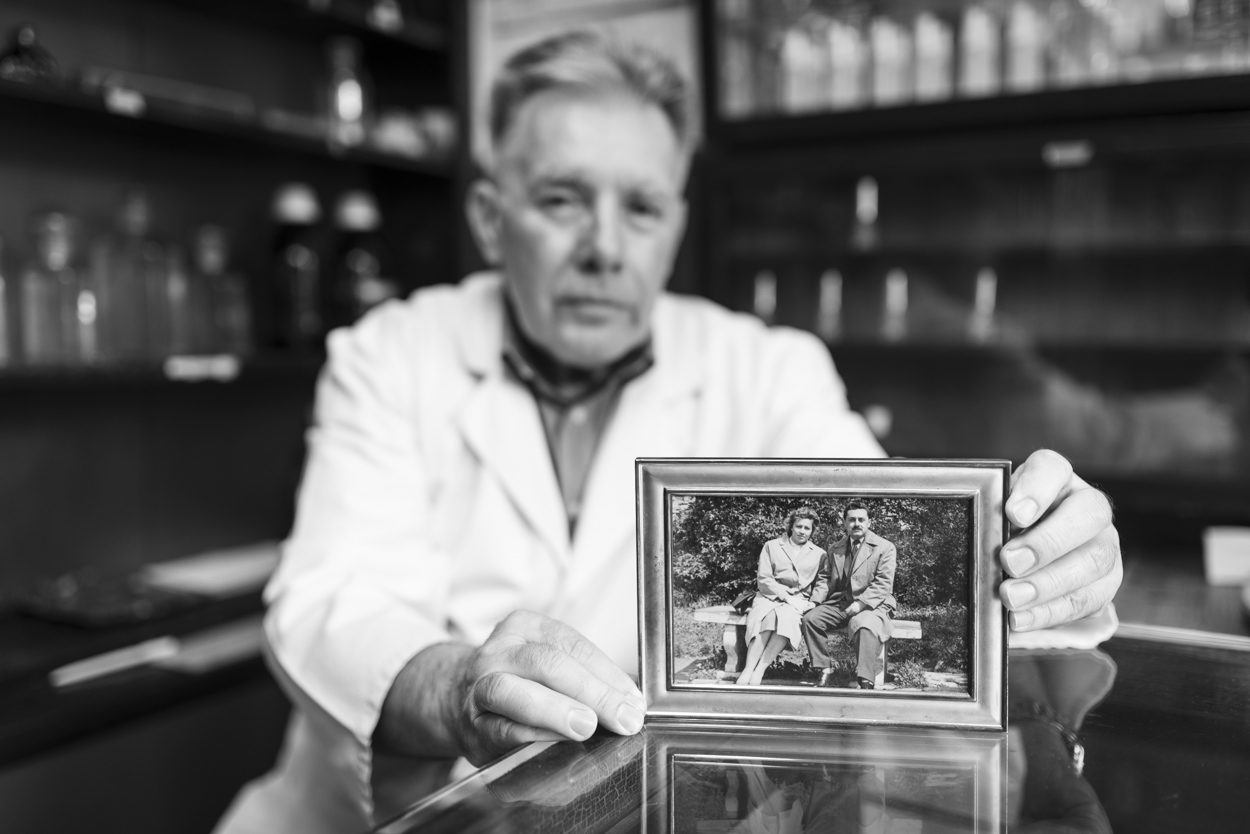
Nenad is a keen photographer, and very proud of a photograph (above) of his parents he has taken as a young boy
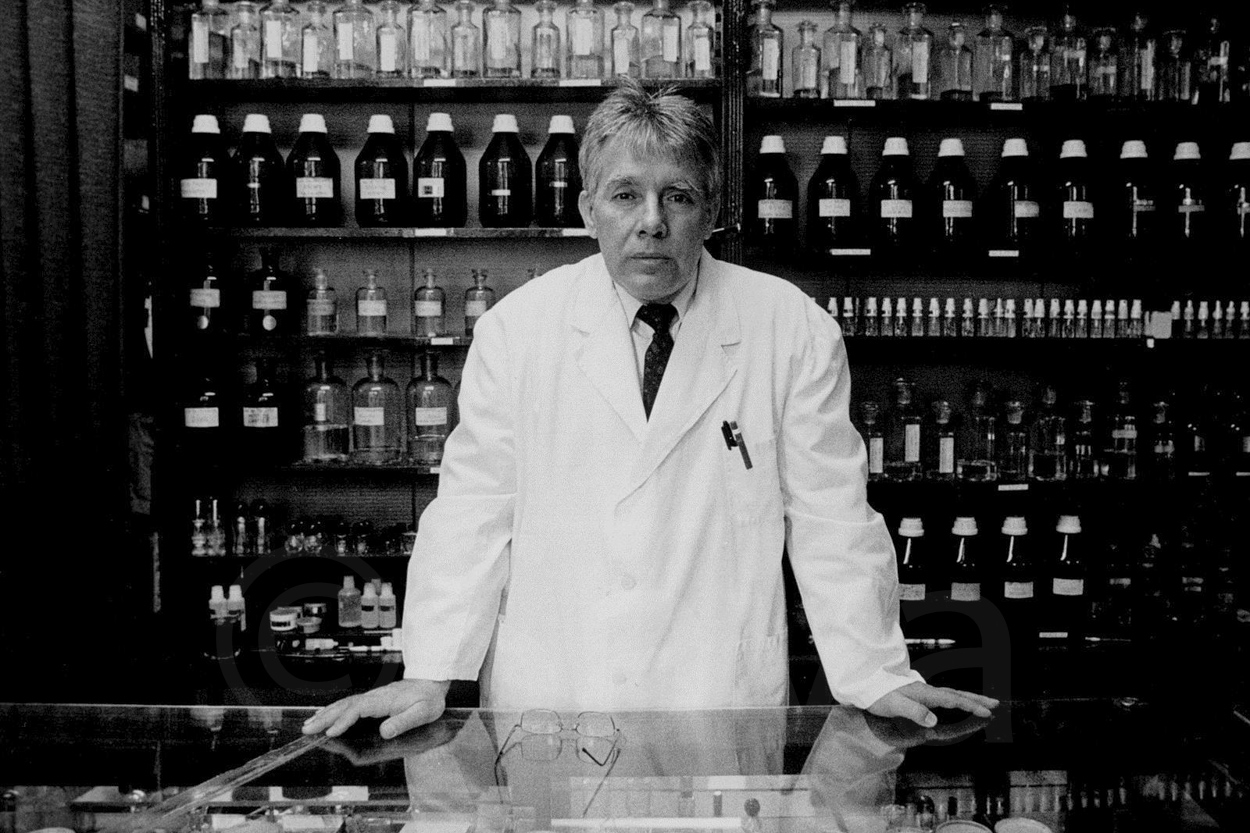
Nenad photographed approximately ten years ago (above) ©Nenad Jovanov
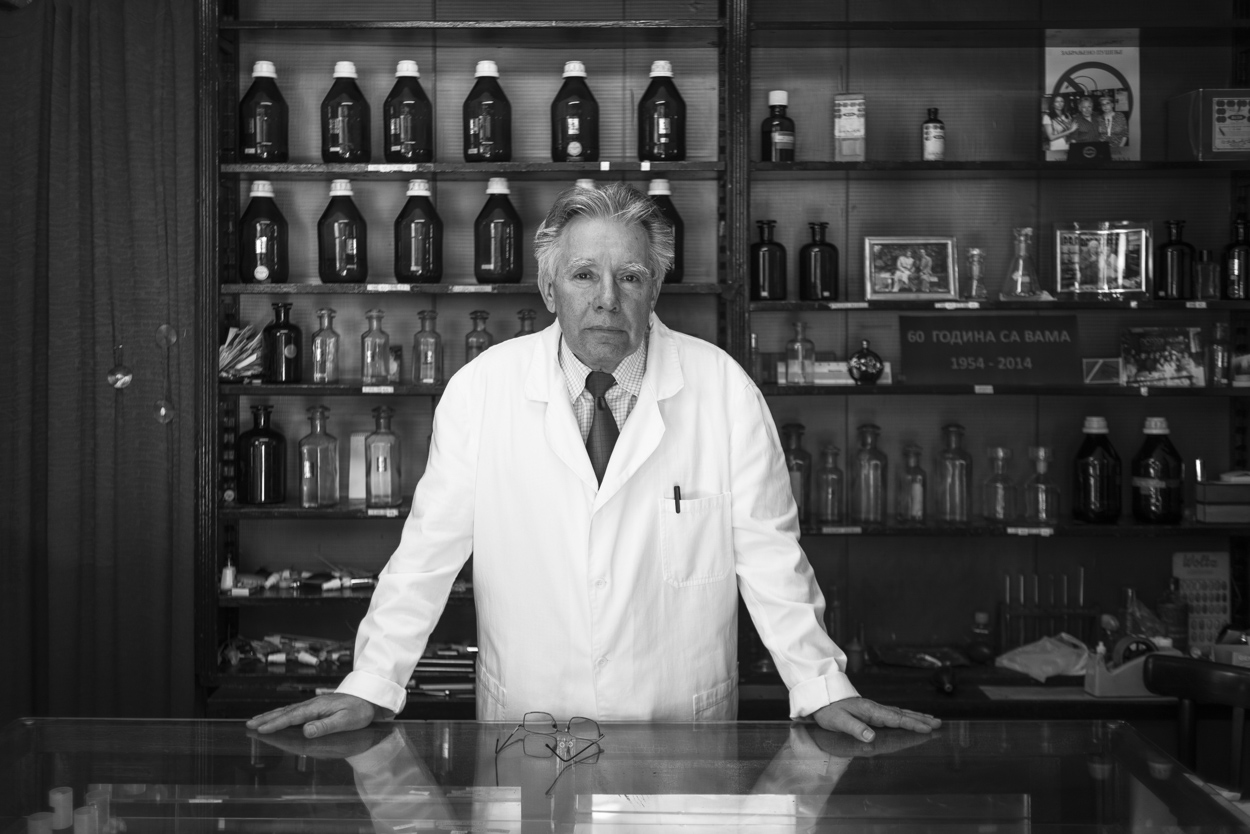
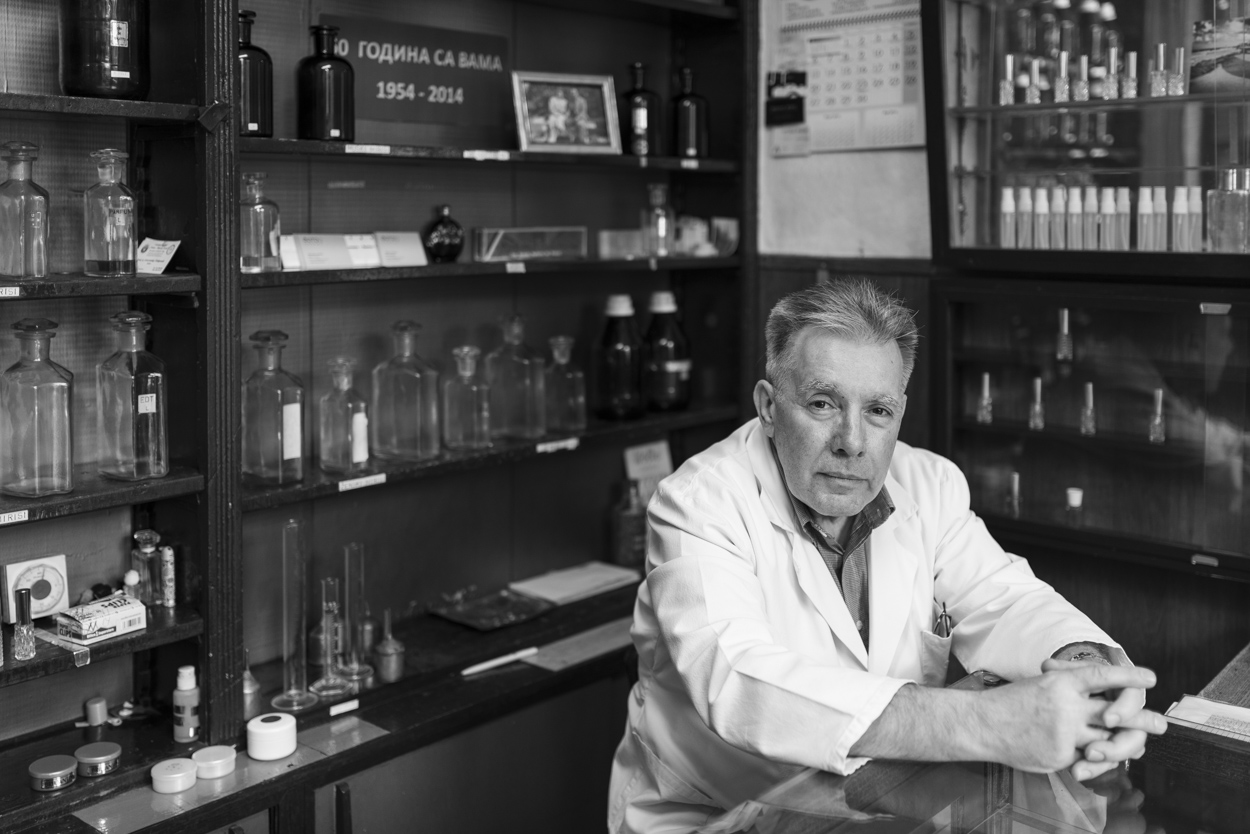
A constant stream of clients pays a visit to this shop daily. Some for a few drops of valuable perfume and handmade face creams, others for advice whether their favourite scent could still be produced here. It is a pampering experience that puts a smile on people faces. Of course no-one is going to walk out from “Sava” without begin seduced by some new fragrances, so I bought “Belgrade Nights” for myself.
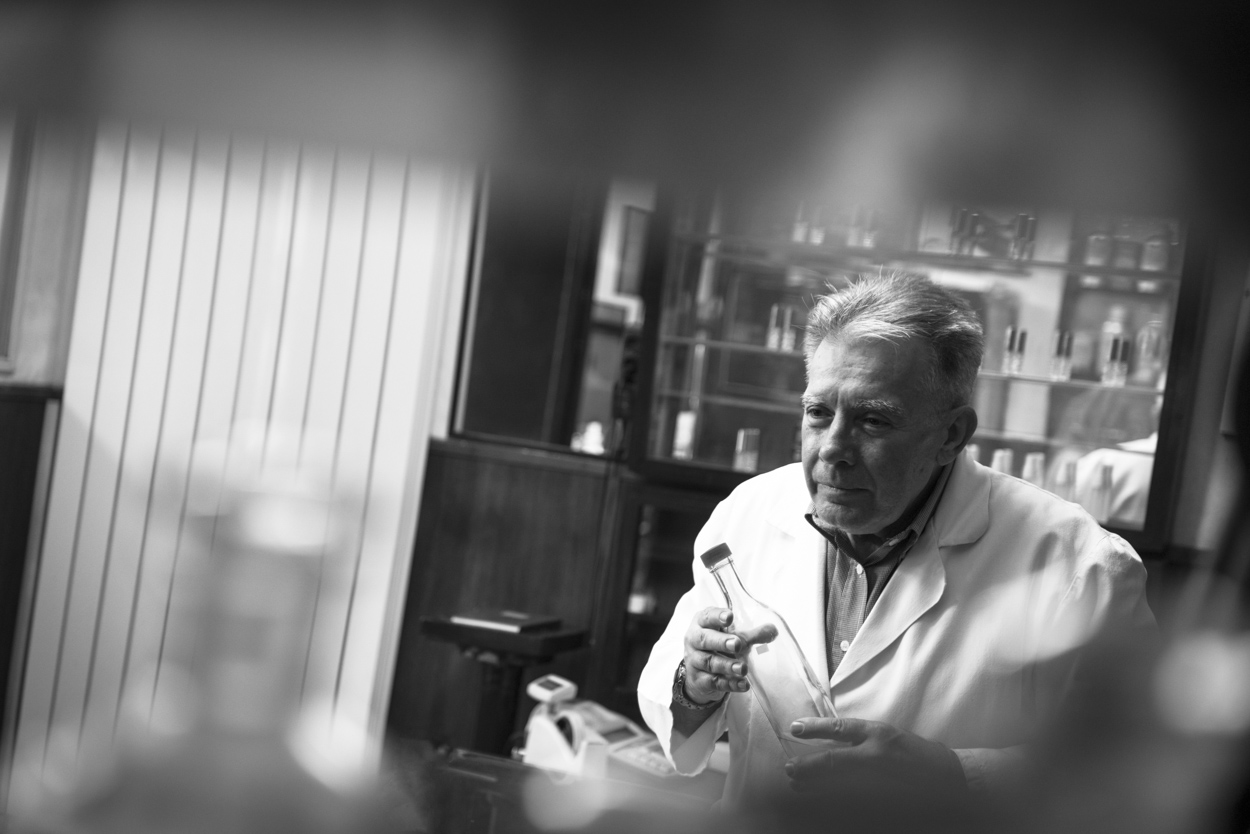
The perfumery is in Kralja Petra 75, Belgrade
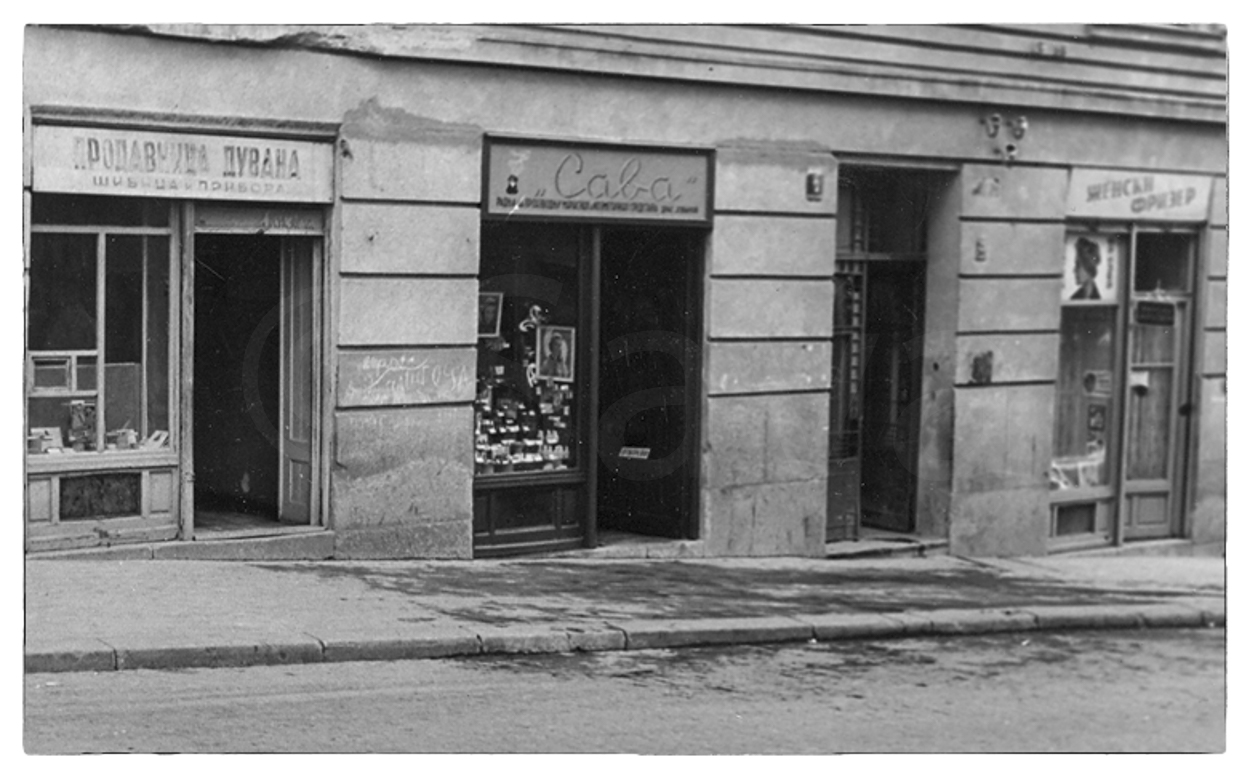
Thanks to Vesna for translating and Nenad for providing some of the photos from the personal family archive.
More information about “Sava”, on the facebook page https://www.facebook.com/parfemisava
During the last visit to Serbia we have decided to explore smaller monasteries between the town of Cacak, Krajevo and Ivanjica. These monasteries are usually reachable driving on mountain off road and, compared to the major ones (some of them part of UNESCO), offer a warm hospitality by the local monks or sisters, curious about tourists and always keen to share home-made cakes with coffee or liquors. A far more enriching experience compared to the guided and less personal tours offered by the well-known sites.
This is the monastery of Kovilje, a female monastery since 2010, located nearby the village of Bratjevo, and reachable driving on a dirt road for about 8 km, very steep and muddy at this time of the year. It is well hidden in the forest and the sisters fund the monastery through the sale of wood.
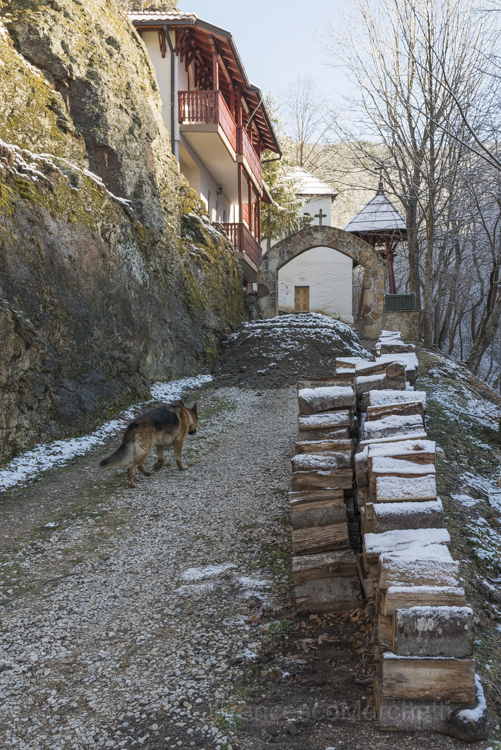
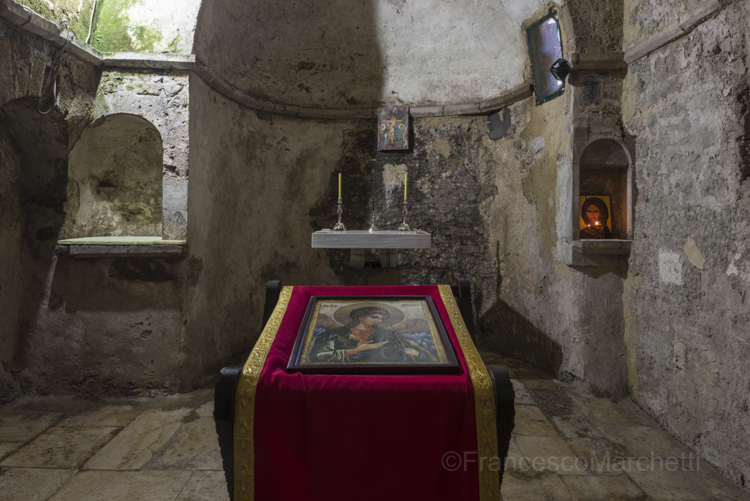
I was given permission to photograph the beautiful interiors, adorned with frescoes approximately a thousand years old.
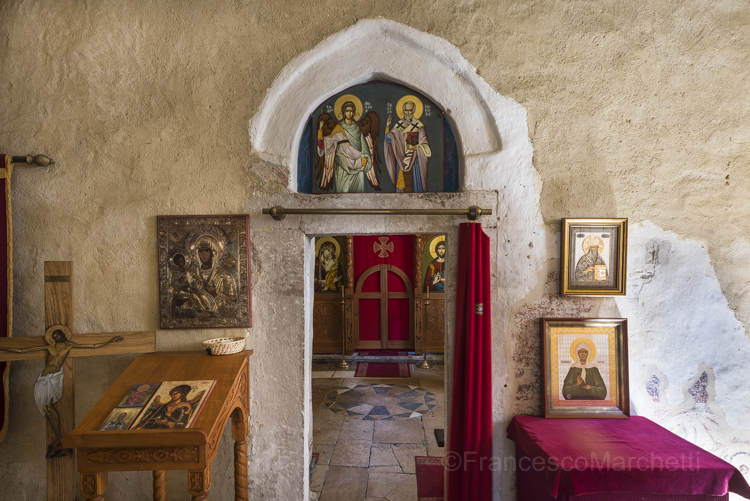
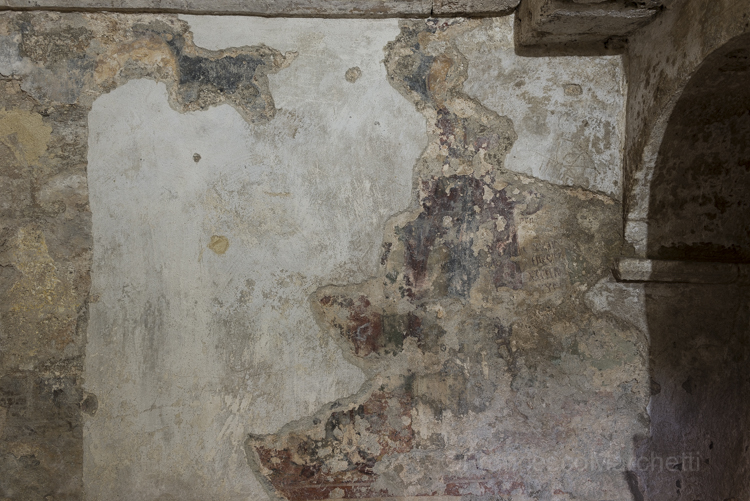
Even more interesting is how the visits to this monastery led me to discover the whole area around Ivanjica.
Having rented a city car unsuitable for these countryside roads, we stopped in the village of Bratljevo to find some locals to take us to the monastery. However, because of adverse weather condition and sudden snow it was not possible to drive. We decided to extend our stay and use the opportunity to explore the village and surrounding fields.
For those who are not familiar with this part of the world, the whole region around Ivanjica is a major hub for the raspberries production, and Ivanjica is hosting an important meeting to create an association of raspberries growers in Serbia. In fact, this region produces one fifth of the whole Serbian production.
In summer, family of workers from different regions will convene to these fields to pick up the raspberries which will be exported to various European locations. It is a critical business and good source of income for an area that has seen many factories closing in the last few years, and increased unemployment. For some people this is the main activity, for others an additional income to rely on. Workers are offered food, accommodation and a modest pay by the field owners.
At this time of the year, fields are being prepared before the season starts, and we have met some of the locals.
This is Radenko, a man behind the creation of the association of raspberries growers.
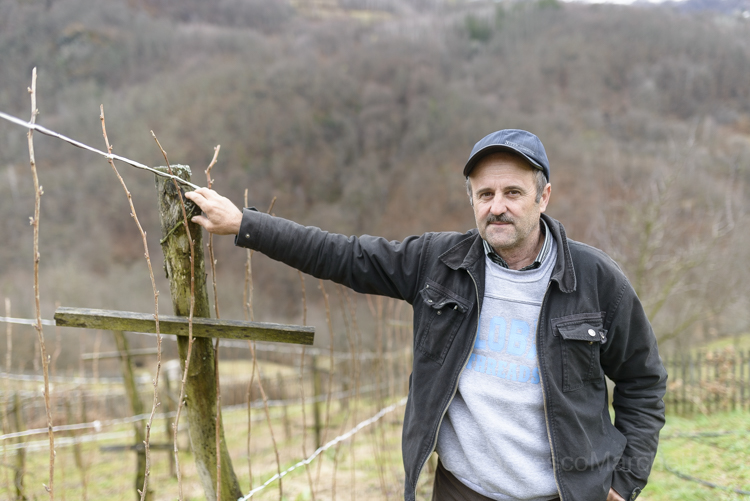
He invites us to see his fields, and we could not leave without having lunch at his place where we met the whole family. His mother was happy to be photographed too.
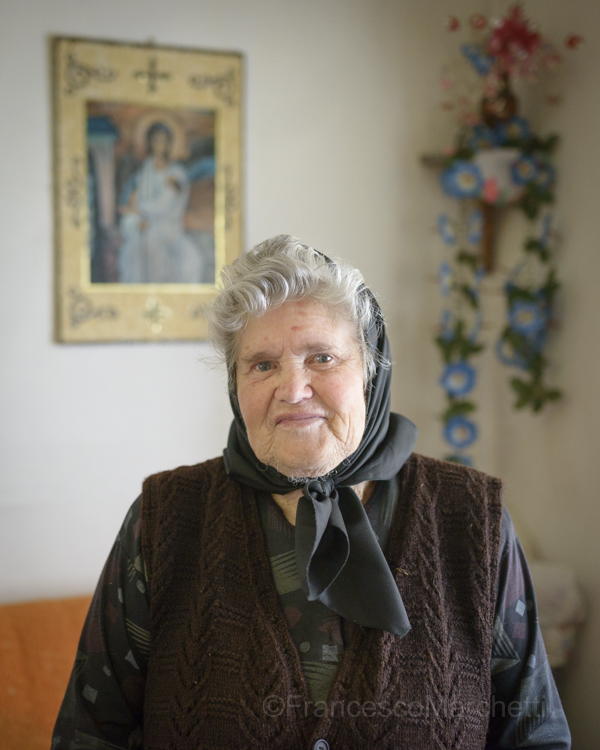
Brothers Adam and Miloje, keep a wonderful clean and tidy household.
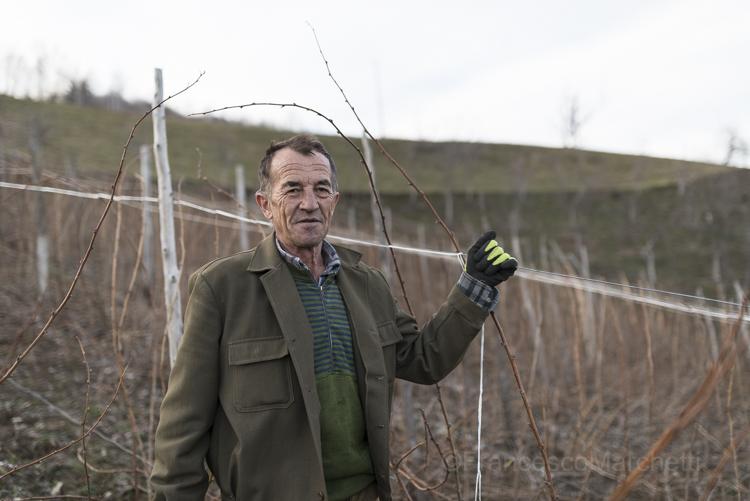
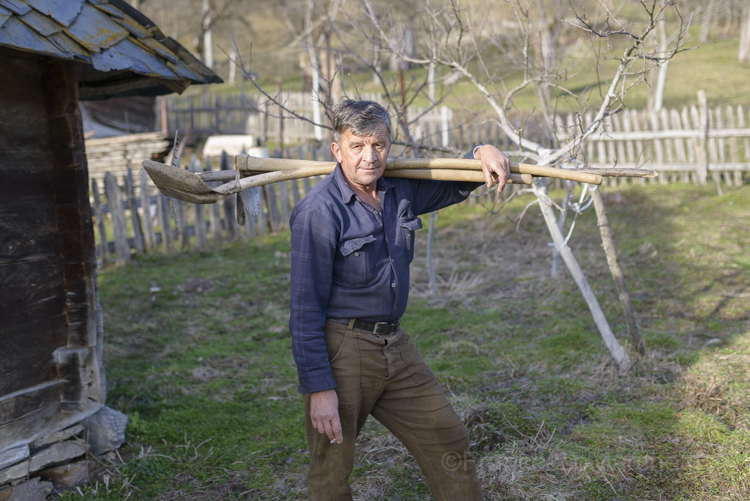
Miloje invited us to have coffee and rakija with him. He talks about young generation not willing to live in these remote villages, hence there are quite a few single men around.
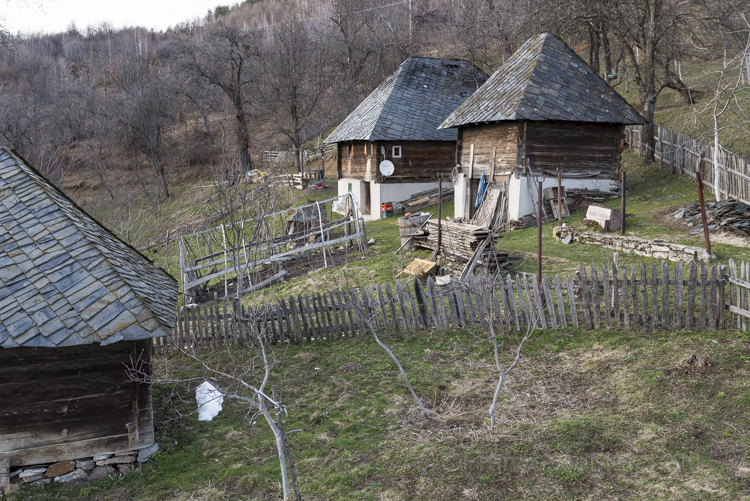
Another raspberry grower was keen for me to take his portrait in the field.
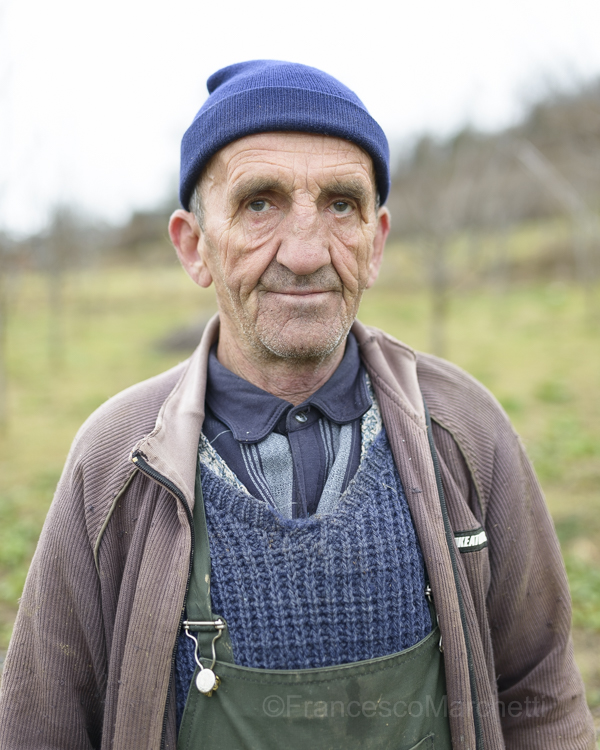
An interesting aspect of this rural area are old wooden houses, called Vajati.
It is not unusual to have a number of different houses in the household, each of them serving a different purpose such as being the main accomodation, keeping the animals or cheeses and kajmak.
I come across this old group of wooden houses, still used as intended as the farmer moved to newly built house which offers more confort.
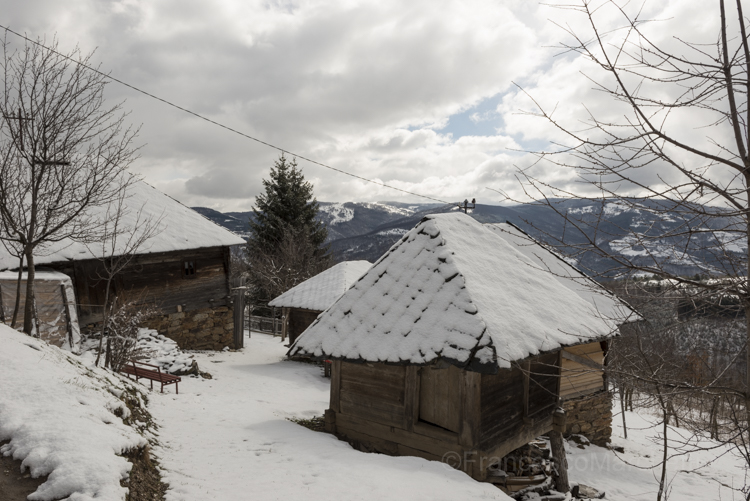
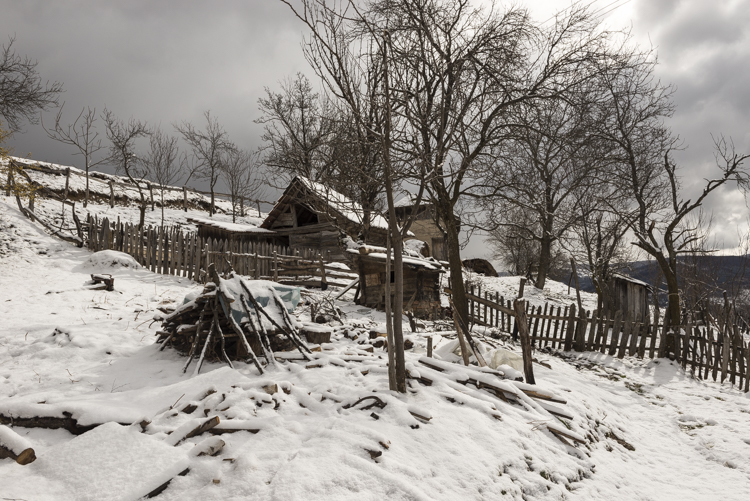
Another feature of these houses is that they have an entry door on both sides. This was to allow more escape routes during the enemy invasion.
Some interiors still keep original furniture, like this old bookshelf and a gas lamp from the time when they did not have electricity in the village (as late as early eighties)
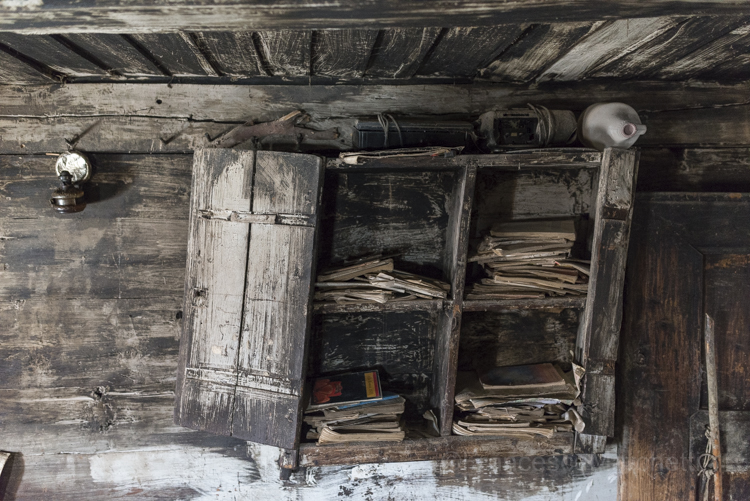
Wondering around the fields, we met Slava who welcomed us to her house.
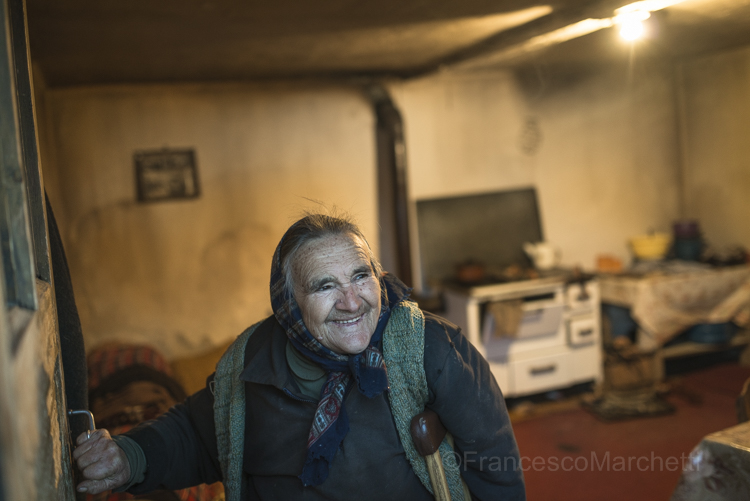
The hospitality of the people here has been overwhelming, and it has tested our tolerance to rakija. This brandy is now seen as a morning medicine 🙂
We hope to visit this region of Serbia again in summer to document the raspberry picking, and enjoy the beautiful landscapes this region has to offer.
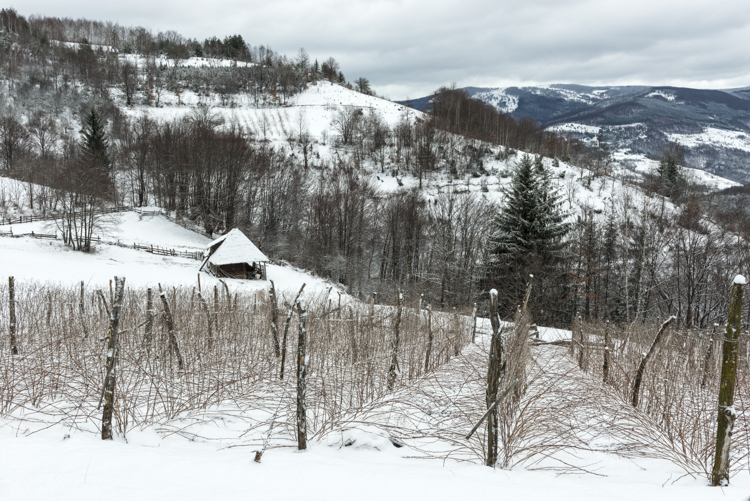
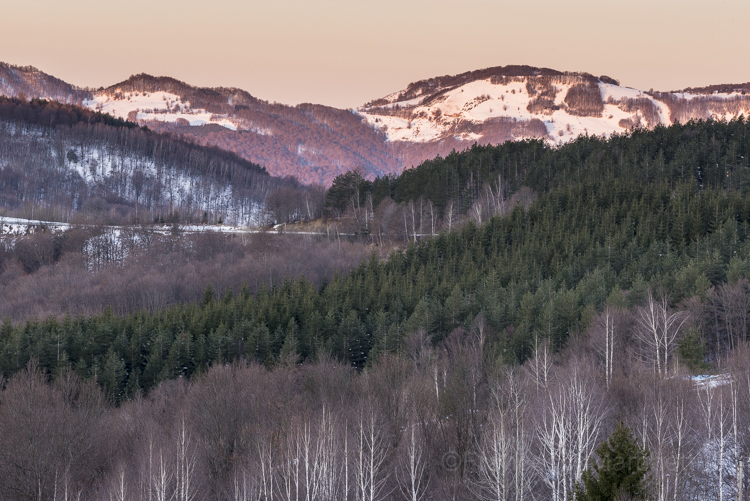
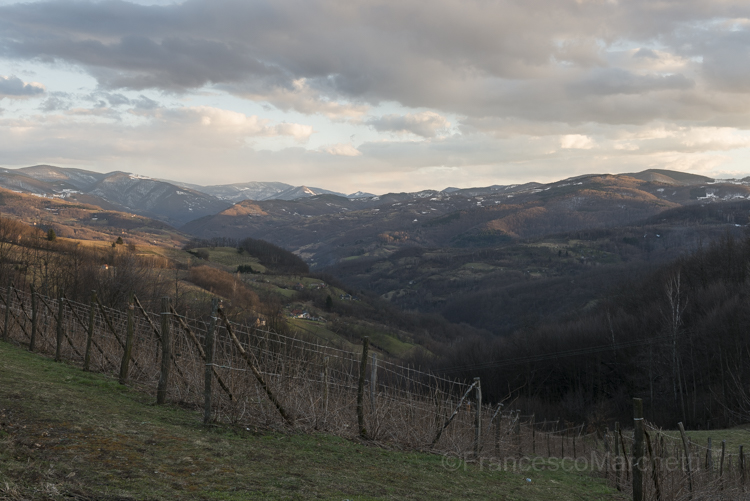
Francesco
During our stay in Belgrade over Christmas holidays, we made the wonderful discovery of Zorislav and Maja Fajndovic, violins makers. They have started the business “Master of the Game” in 1999.
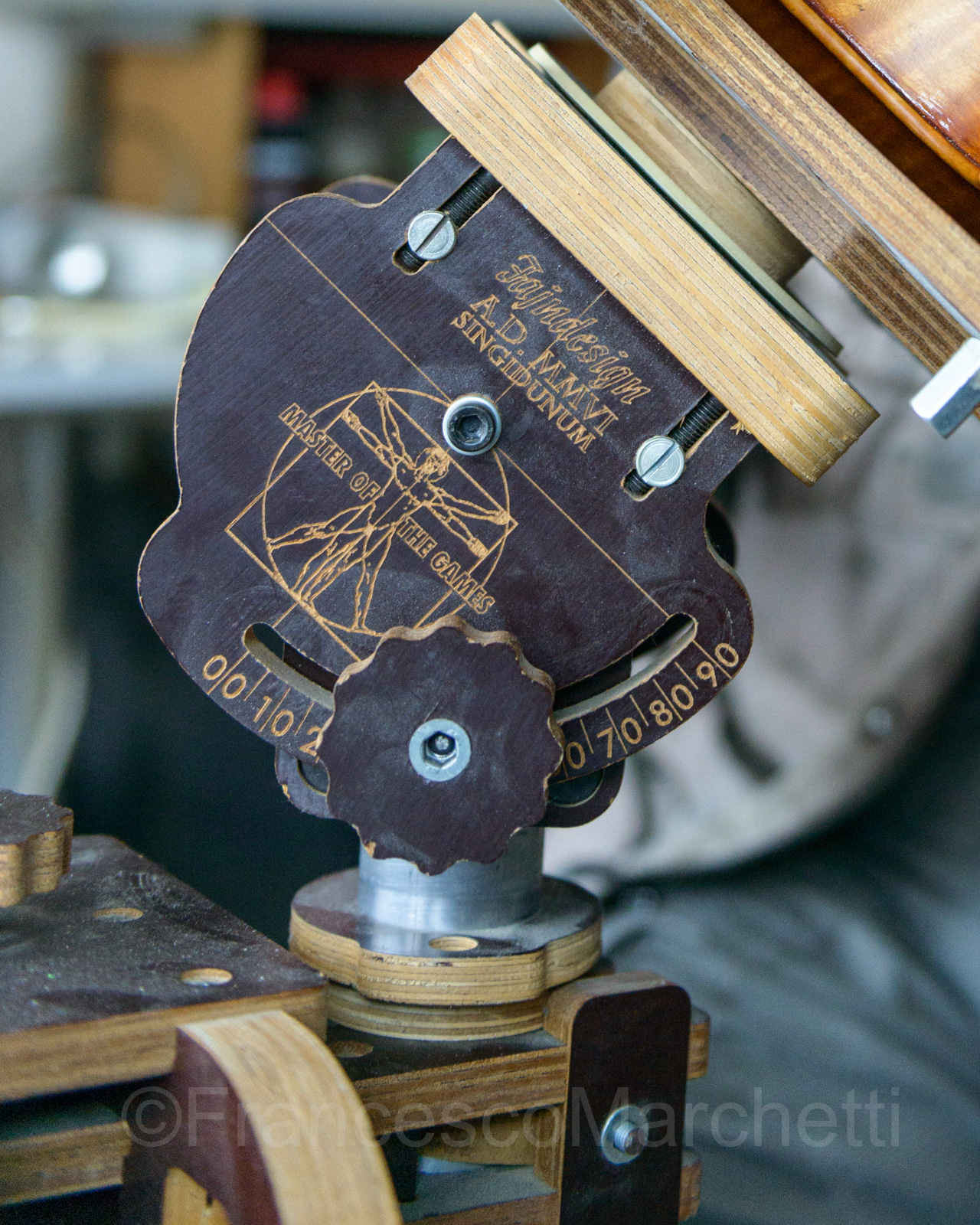
When Zorislav agreed to meet us and find out about our photography project, it was a great surprise to be received at his home, which is also a workshop where various string instruments are made by hand utilising computer aided design tools.
With Zorislav being so passionate about his art, we spend hours conversing about traditions and applied science to istruments making.
We learnt about the influence of the italian school to this art. The tradition of making violin in Serbia started a century and a half ago, as the Italian violin maker Fasola, after taking the orthodox religion, changed his name to Vlada Toskanović around 1890. It was known by italian violin makers for centuries that the basic “ingridients”, the wood from spruce and maple, is of the fine quality in the Balkans, expecially from Montenegro, Bosnia and Serbia.
Unlike many string instruments makers who share a background in music, Zorislav is an architect and a member of the Association of Applied Arts Artists and Designers of Serbia (ULUPUDS), who has applied the science to analyse the proportions of the violin and other instruments such as the lute. He emphasises that each instrument needs to combine function, construction and aesthetic. His scientific background allowed him to apply the Fibonacci’s golden ratio to the analysis of the proportion of the violin (the Stradivarius violins were built according to this rule) and he arrived to the conclusion that each part of the instrument is proportionate. This discovery fuelled his passion for the art of making violins, replacement parts and tools needed for the instruments making. Zorislav took his violin building Master exam in 2000 and he has since been commissioned by various artists.
As the time pass by and I am awaiting for Vesna to translate the conversation, and I try to pick up few words to make a sense, my attention is caught by the light coming throw the window, all the working tools lying on the table, various violins in production hanging on the wall, and something quite unique in Zorislav proud appearance and stance.
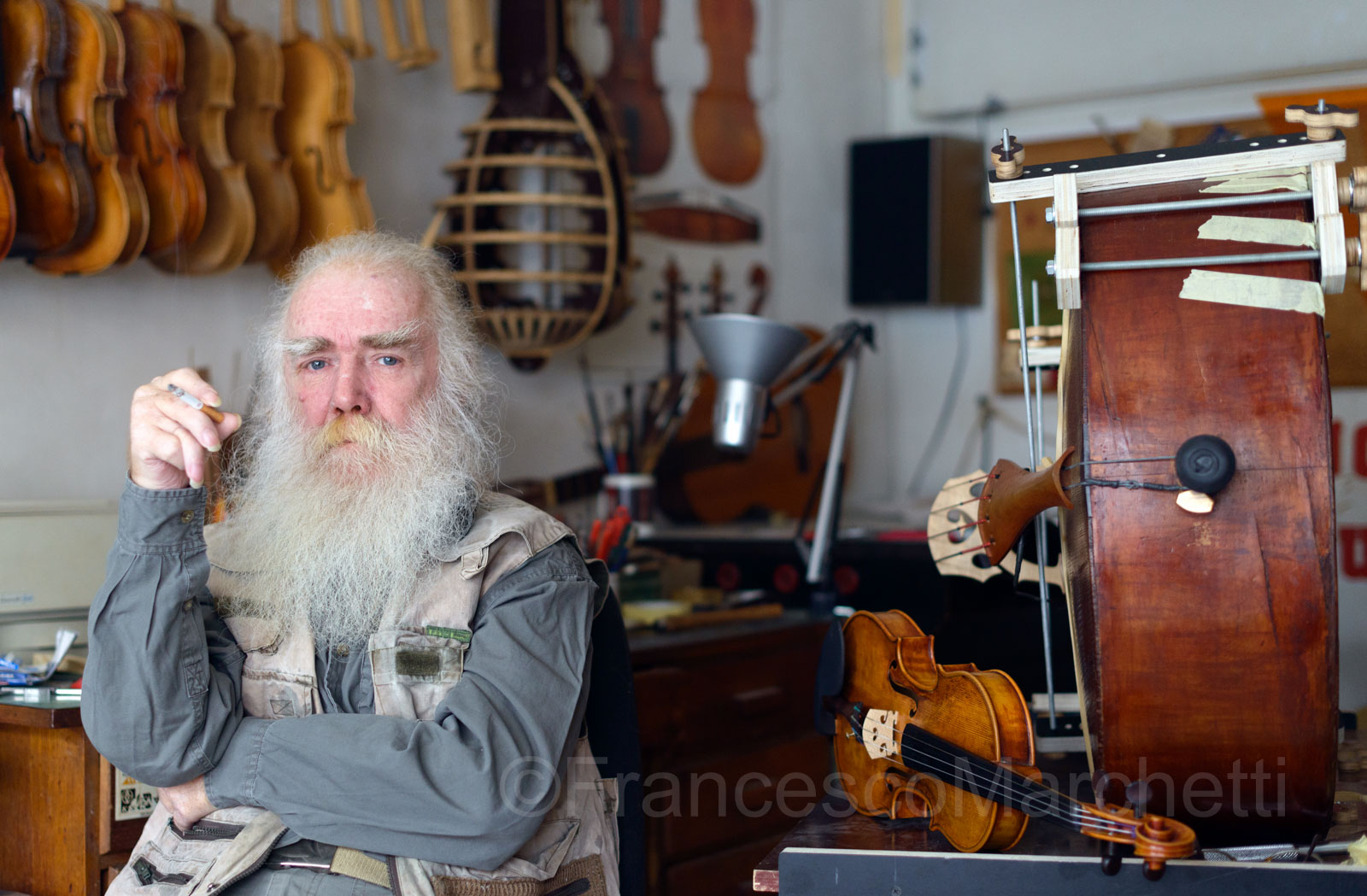
Zorislav believes that instrument making should be studied in any school of design.
We also met Maja, Zorislav’s wife and violin designer too, who inherited the passion for string instruments from musicians in her family.
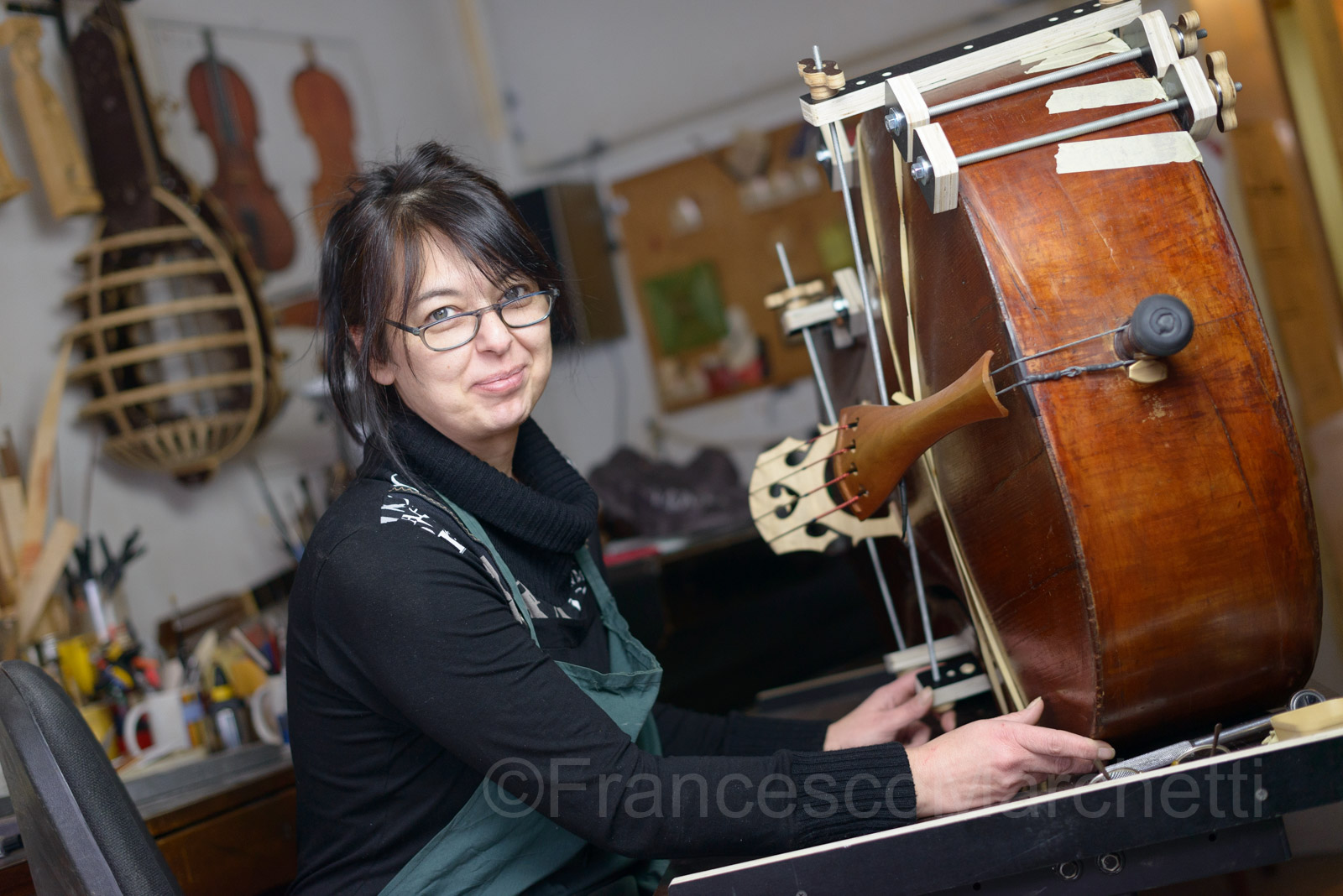
Maja talks passionately about violin making, and she is proud that, being in the business for 15 years, their violins are estimated in the USA at a high value. It is hard to make a leaving solely from this business in Serbia, but she knows that if opportunities are there to enter the European market the situation would change.
Maja at work using the Multifunctional Table Stand, a tool developed for violin makers
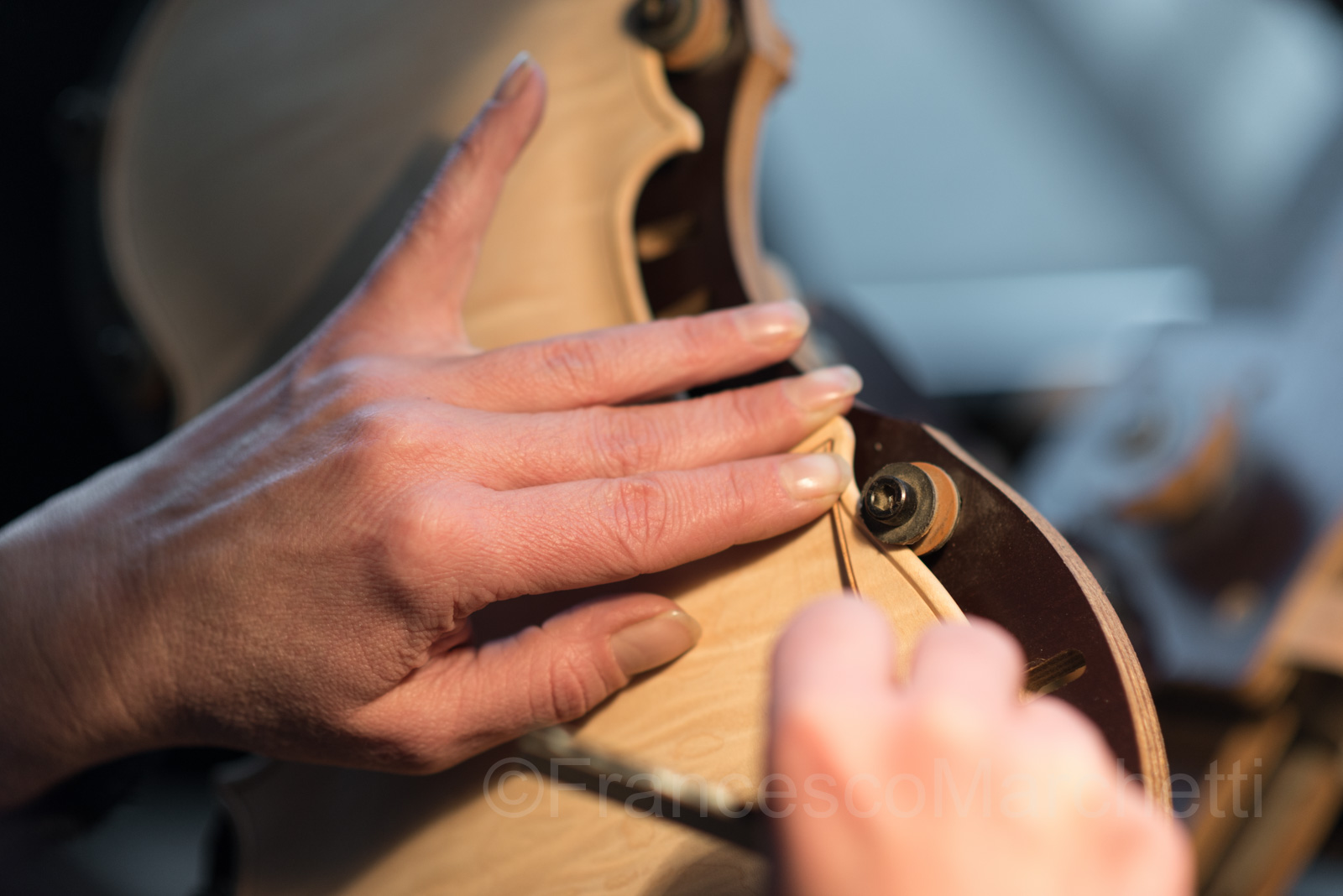
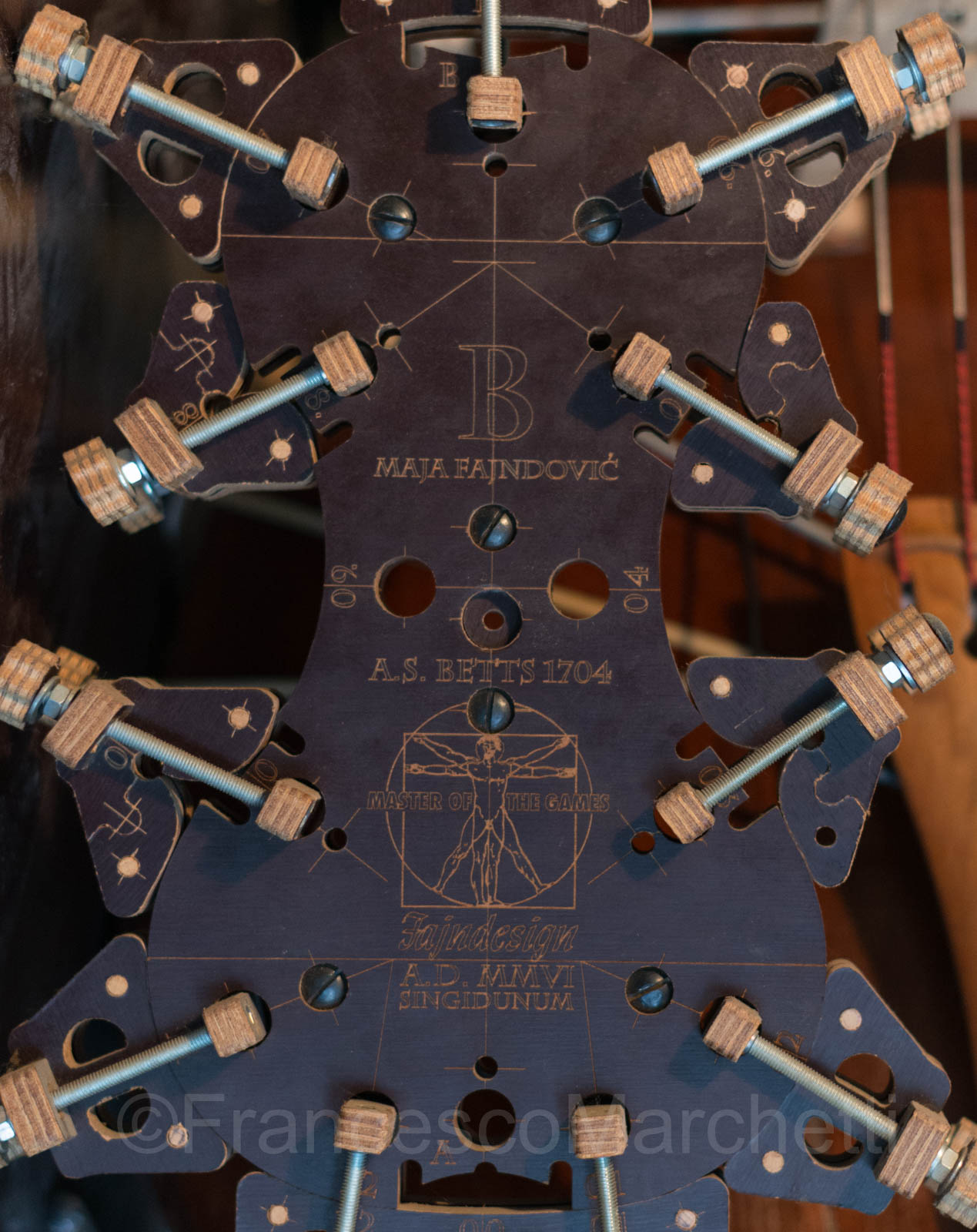
One of the complex parts produced for the lute.
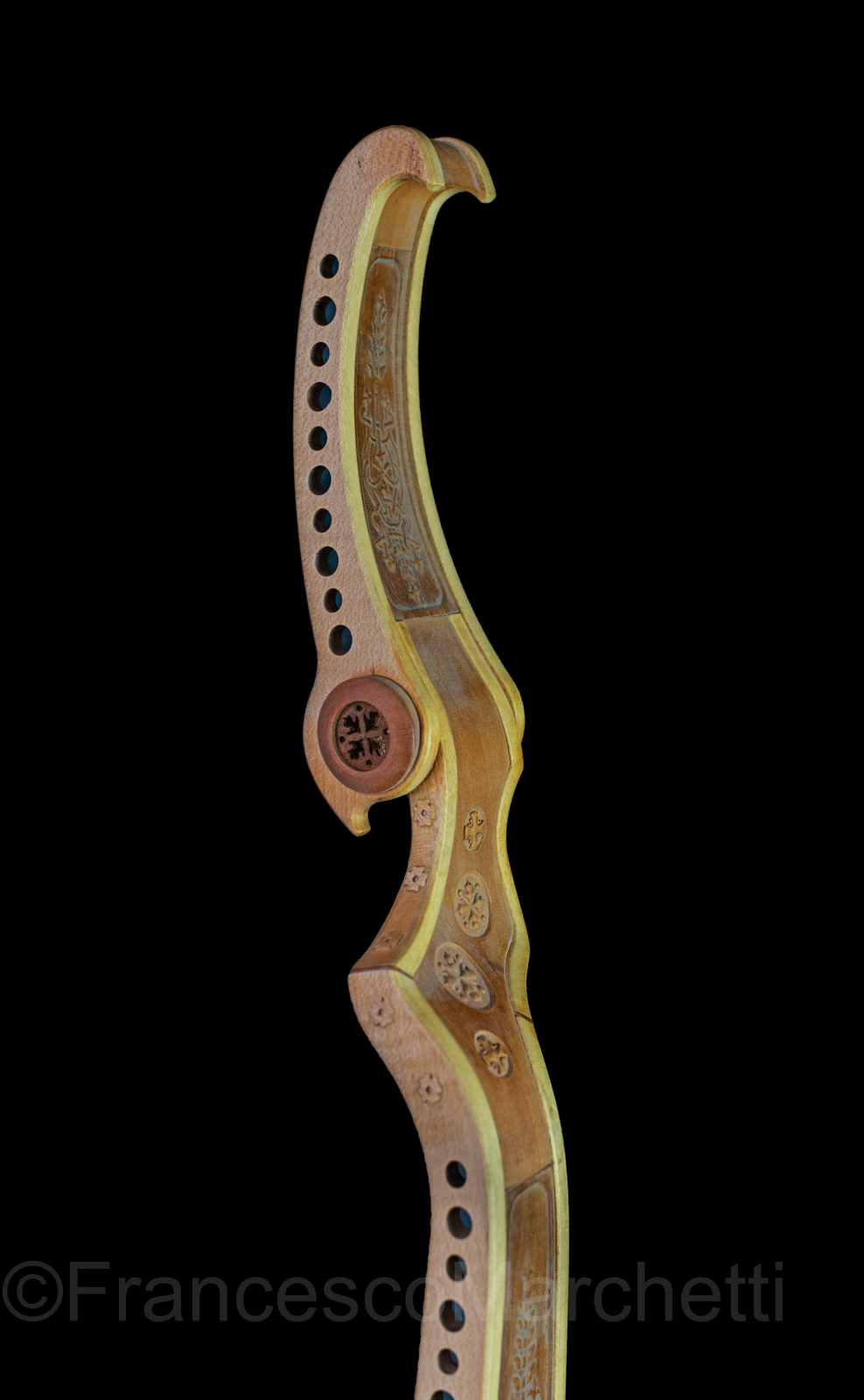
Zorislav shows us some beautifully handmade tail pieces and pegs.
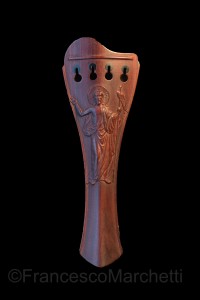
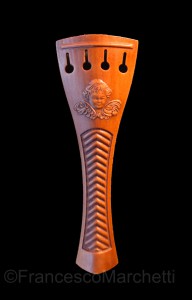
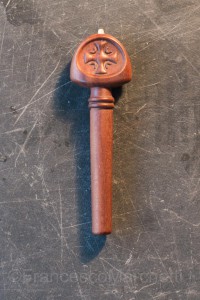
Although there is significant number of instruments makers is Serbia, there is not an integrated association at the level of Serbia. They would benefit from a formal representation to promote the craft and raise the skills, such as the British Violin Making Association (BVMA), formed in 1995 with a clear set of aims to support and promote this art. I hope to see Zorislav and Maja instruments at one of the evaluation events in the future.
Zorislav and Maja received us warmly, giving us the opportunity to introduce ourselves without reservation. They merged perseverance, passion and scientific knowledge into this beautiful art and our encounter has been inspirational. We have spent quite a long afternoon with them conversing, drinking tea, photo shooting, and having the traditional Italian Christmas cake “Panettone”. We hope to see them soon again. A very special encounter indeed.
Master of the Game, Zorislav I Maja Fajndovic, www.violindesign.net
Francesco & Vesna
©2024 Francesco Marchetti, All Rights Reserved
